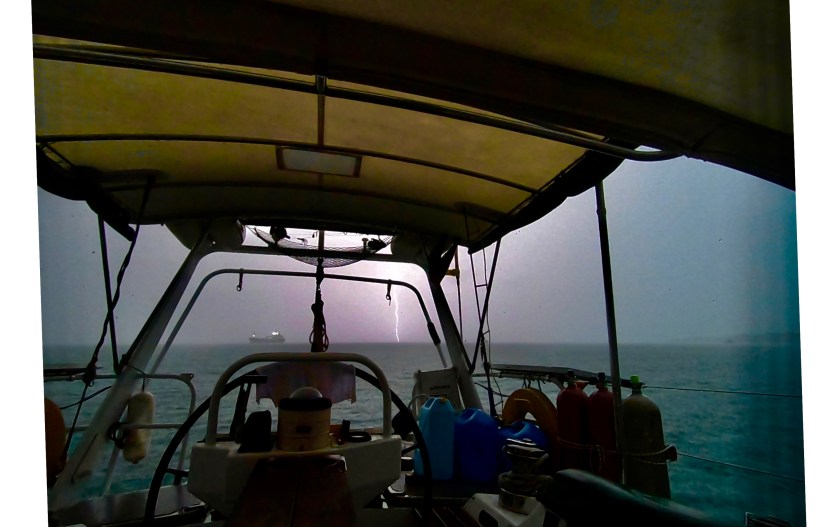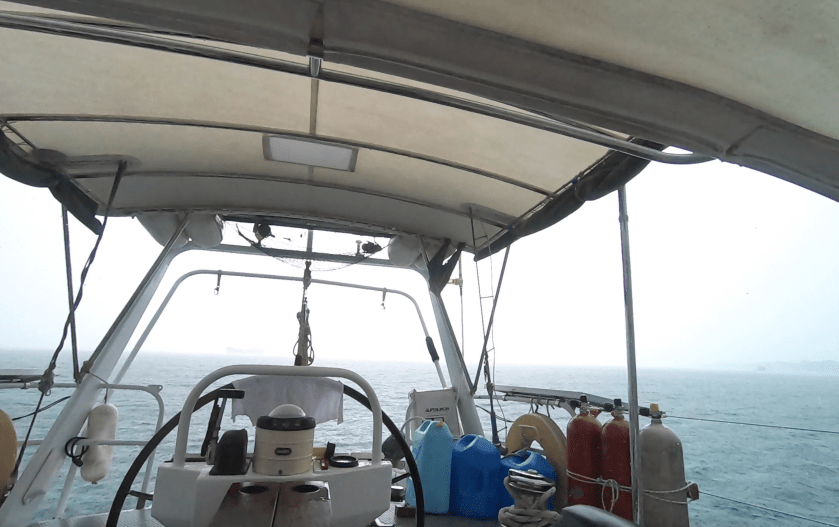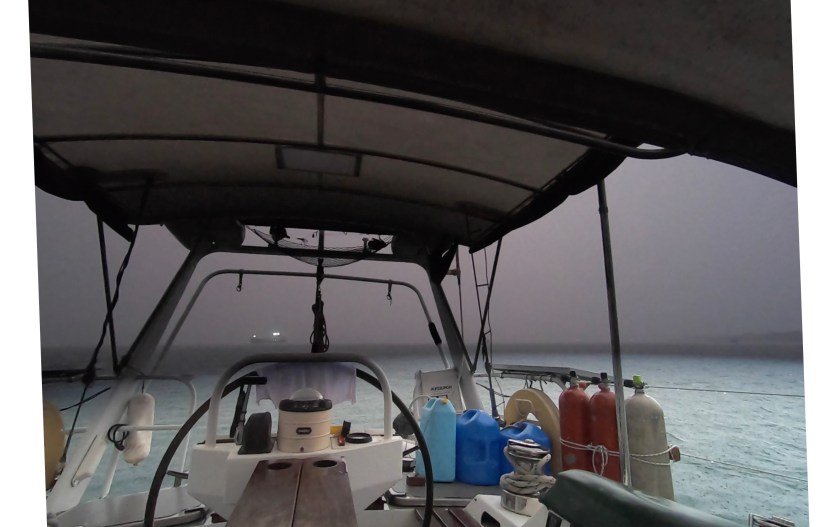
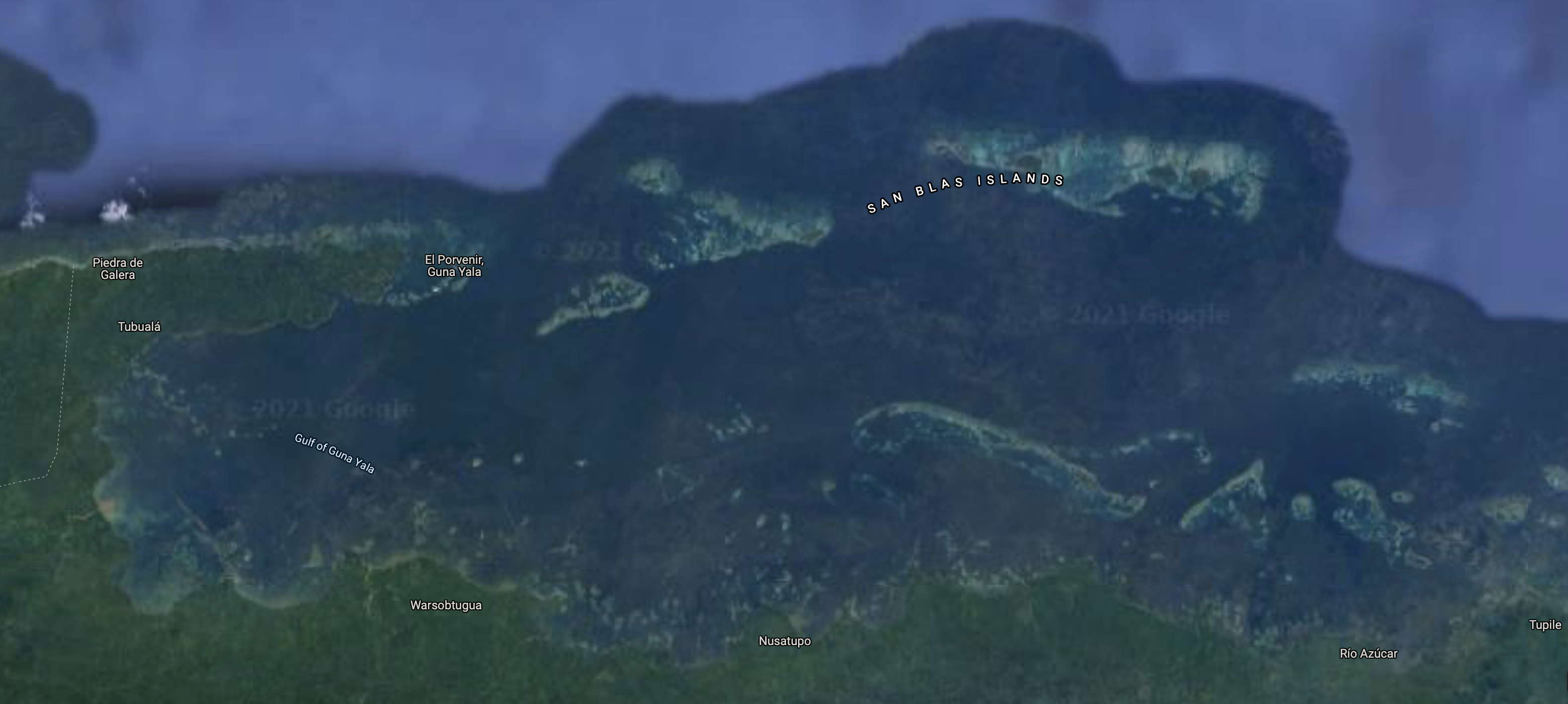
June 26 – August 23; November 10 – December 26, 2021
At last, after completing our haul out, we were freed from Shelter Bay Marina.


We shot the gauntlet of ships entering and exiting the Panama Canal and headed out beyond the breakwater.
Over the course of the next six months, more than half of the time was spent exploring and enjoying the remote and entirely unique Panamanian archipelago of San Blas, or Guna Yala if you use the traditional indigenous name.
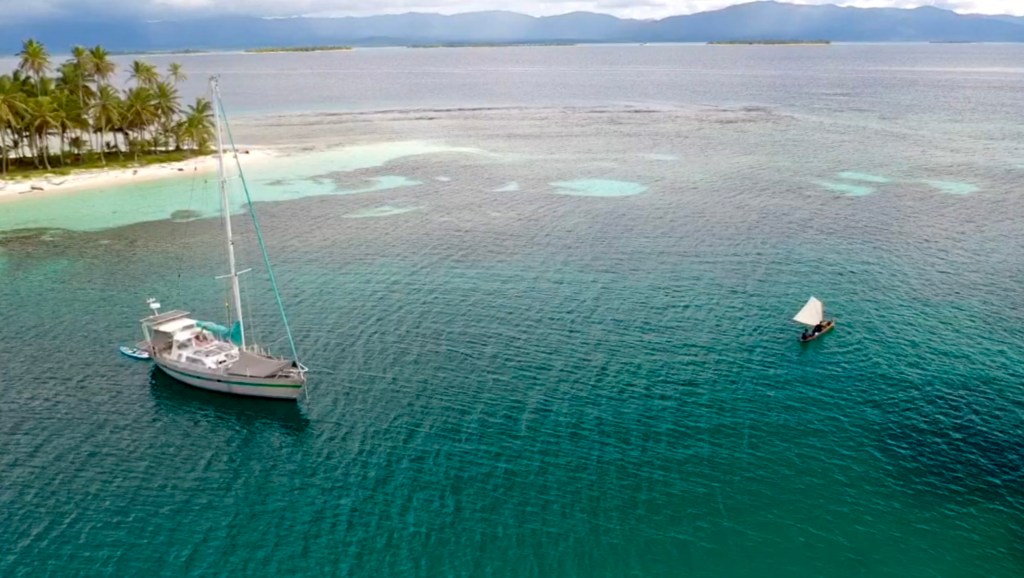
It fit well. It seemed long overdue.
When we set sail from Grand Cayman on Friday the thirteenth all the way back in March 2020, San Blas was our destination. It had taken four hundred sixty nine days, but we had finally arrived.
Sailors will tell you its bad luck to depart on a Friday. Friday the thirteenth? Duh. It’s also said to be bad luck to have women as well as bananas aboard your boat. I recall joking that by this end of this voyage we’d either be quite cavalier or pretty fucking superstitious.
Fifteen months later, in a Twilight Zone-esque blend of circumstances, some of which were completely outside of our control and some the result of very deliberate decisions, we found ourselves still living at anchor in Panama.
It had taken us over thirteen months just to venture outside of Bocas del Toro. Free to move about Panama, but still wary of changing policies based upon constantly evolving COVID updates globally, we really needed a change of scenery without committing to a change of country.
People had been in and out of San Blas since we had arrived in Panama but officially it never had re-opened. No access to towns and stores. We had heard the only resources for supplies were occasional random veggie boats or local fisherman. It would be a bit of an experiment, but a month or two without provisioning would be no problem. We had essentially been isolating since our arrival in Panama. After all this time, we decided to give it a go.
******

Of the over three hundred islands that comprise the Guna Yala territory, most are uninhabited. Those that are occupied often have no more than one or two families and a handful of structures.
Many islands are small enough that it was not uncommon to have already sailed passed the island before deciphering the correct pronunciation for its traditional name.
The tiny islands, almost all with tongue-twisting names such as Waisaladup or Ukupsuit or Ogoppukibdup were in some ways quite similar to each other; but in even more ways they were each very unique places.
During our explorations of San Blas, we moved around three dozen times between a dozen or so different anchorages; really, a surprisingly small area of the overall territory. But, as is often the case, once we locate a spot we really like, we find it easy to return… or sometimes even easier to just stay.
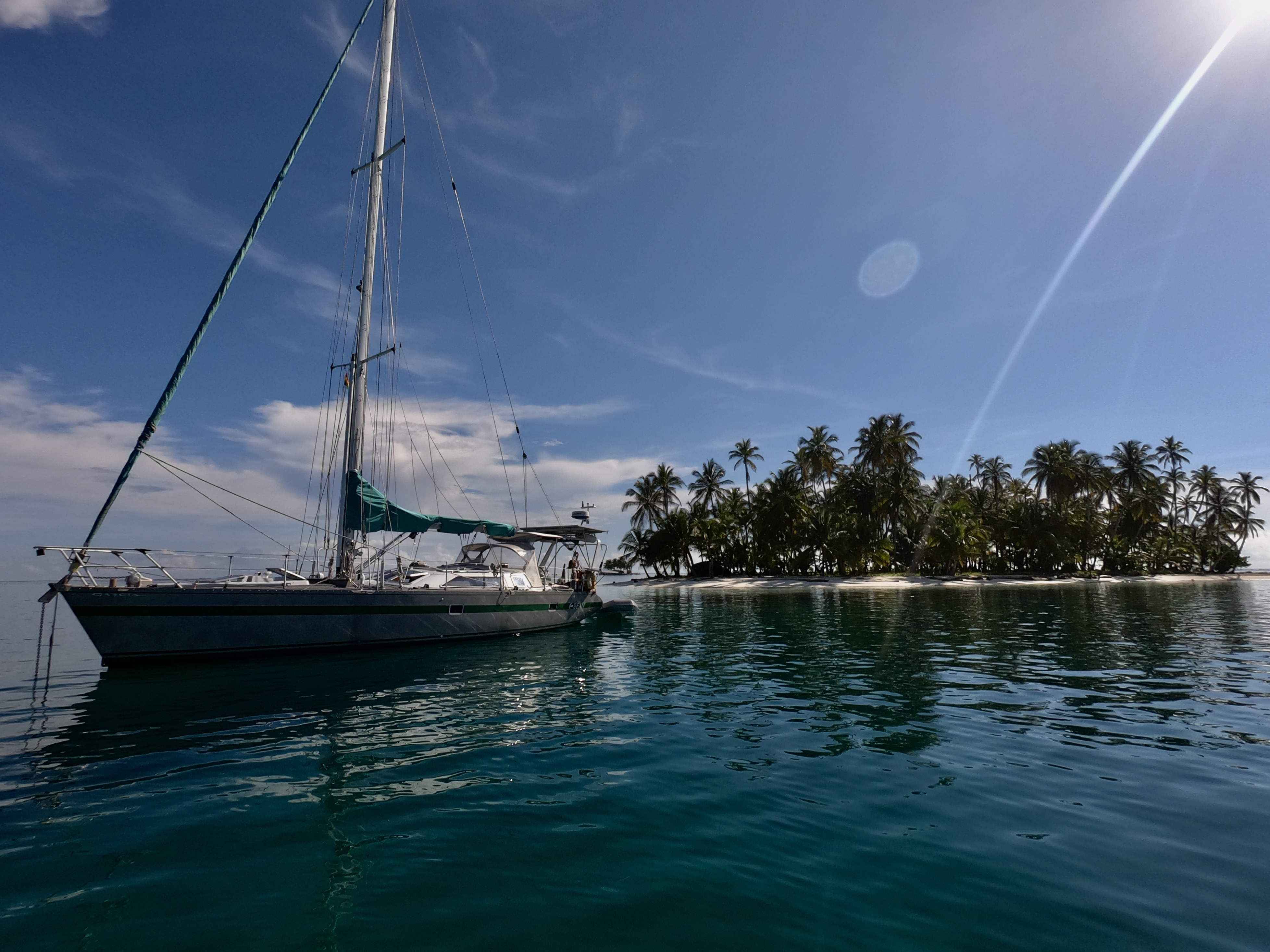




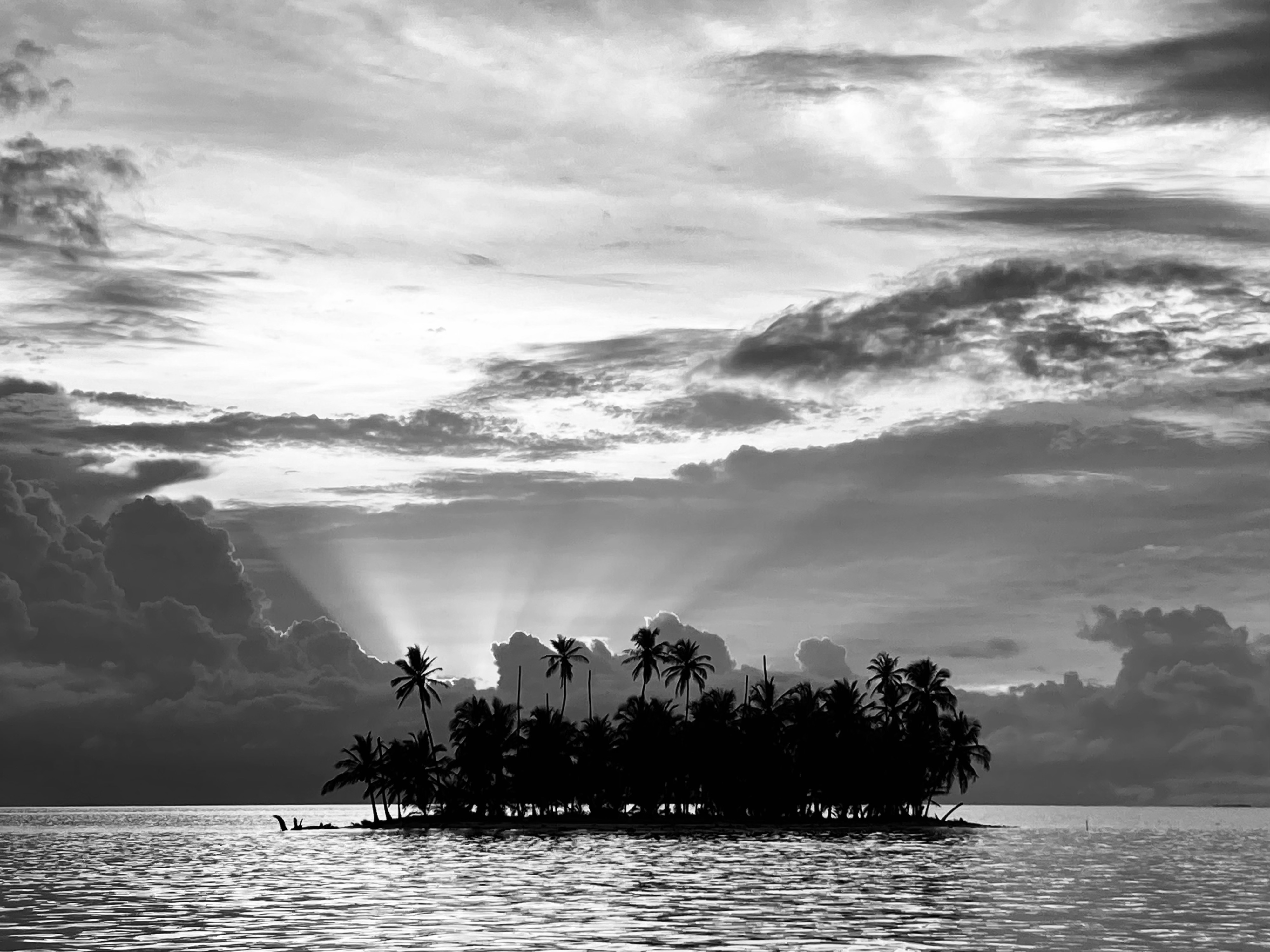



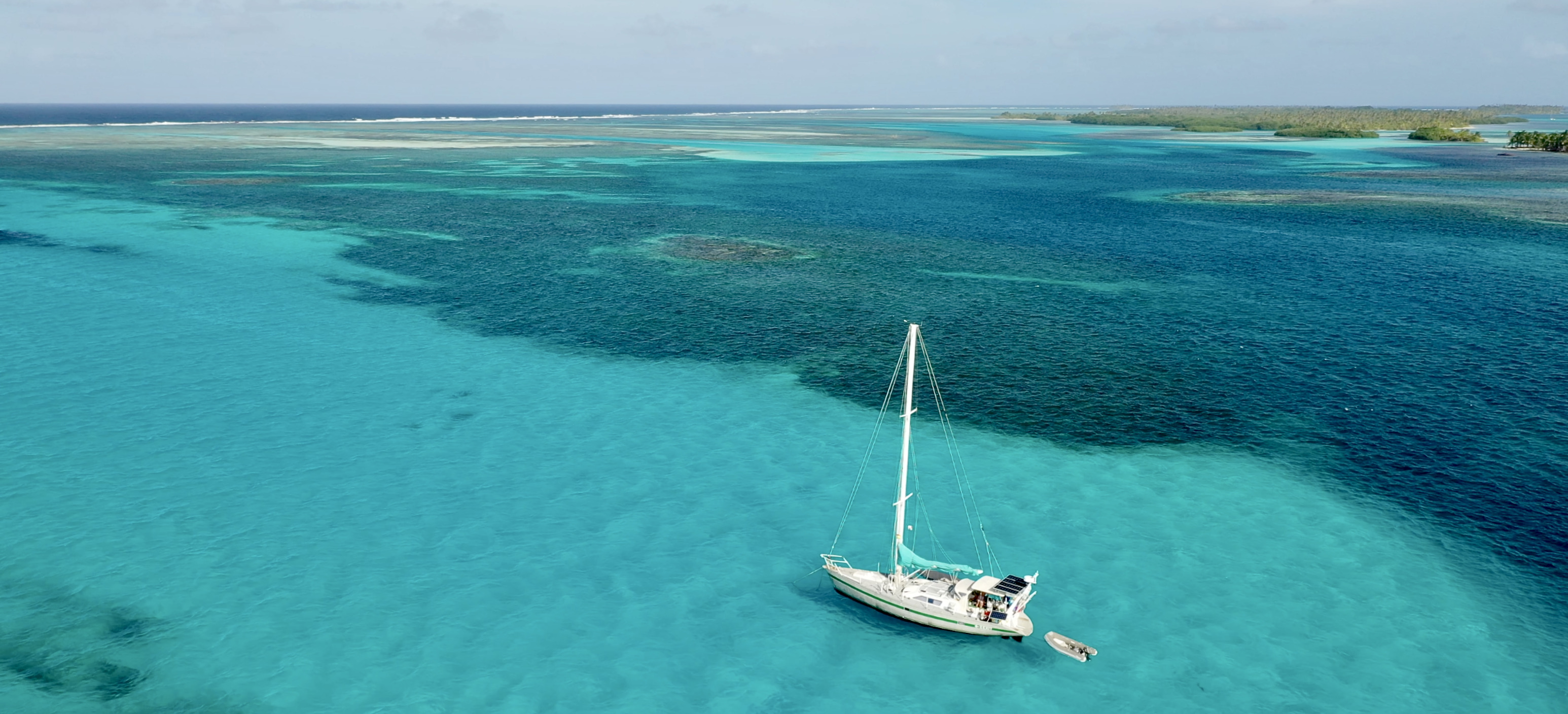
The Kuna people…
Slight of build and mostly dark skinned with dark hair. Quiet, polite, friendly, peaceful, traditional, hard working. Our exchanges revealed some of the most pleasant people we have visited in all our travels.
That having been said, all of our interactions with the indigenous people of Guna Yala, who call themselves Kuna, were limited to the people that visited our boat. We never went ashore on any inhabited islands. It was benign; simply much less complicated that way… COVID times.
Apart from a couple more “modern” towns and communities packed within the confines of islands right against the coast, none of the people living on Guna Yala islands off the mainland have access to any outside power or water. Everything has to come by boat. The final specks of earth above water before open ocean.
The main towns were still officially closed to outsiders, as far as we were aware. We carried on at anchor, still effectively isolated — waves and smiles, intermittent conversations, occasional transactions with locals passing by in their cayucas.
In six months, only two local people actually came aboard Exit.
Apio (one of the rougher around the edges supply guys who stopped by Exit every now and then to see if we needed anything) once opted for a nap in our cockpit waiting out a squall…
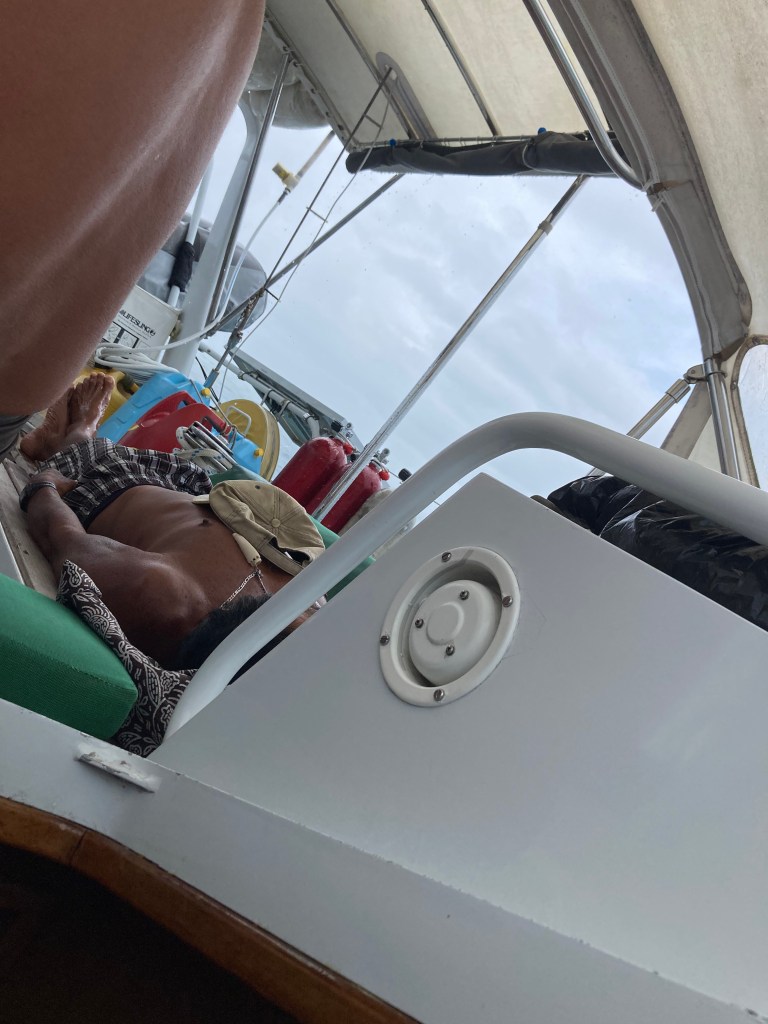
The other was an older guy who lived on Orduptarboat, one of the two tiny islands making up the west side of Cocos Bandero Cays (and our pick for healthiest reef in all of San Blas). While fishing in his cayuca near Exit one day, he randomly asked for a jewelers screwdriver to try to repair his wrist watch. Incidentally, after his unsuccessful attempt to fix it, he proceeded to ask for a hammer which he then used to smash the already broken watch to pieces… quite an odd situation. He ended up paddling away with one of our ziplock bags, which held the pulverized remains of his watch and one of my spare sets of reading glasses he rather fancied during his earlier repair/demolition demonstration. Very friendly… certainly one of the stranger encounters.

For a time, while we were anchored just off of the uninhabited island next to Orduptarboat, the same guy’s son would paddle up to Exit nearly every day and ask us to charge his phone while he was out fishing. On the first day, he brought a big reef crab in exchange… wow! That certainly had to qualify for one of my top three favorable transactions of all time. After that, the barter became fresh reef fish. Eventually, with a smile I told him not to bother; no payment was necessary. He sure still liked getting that phone charged though.

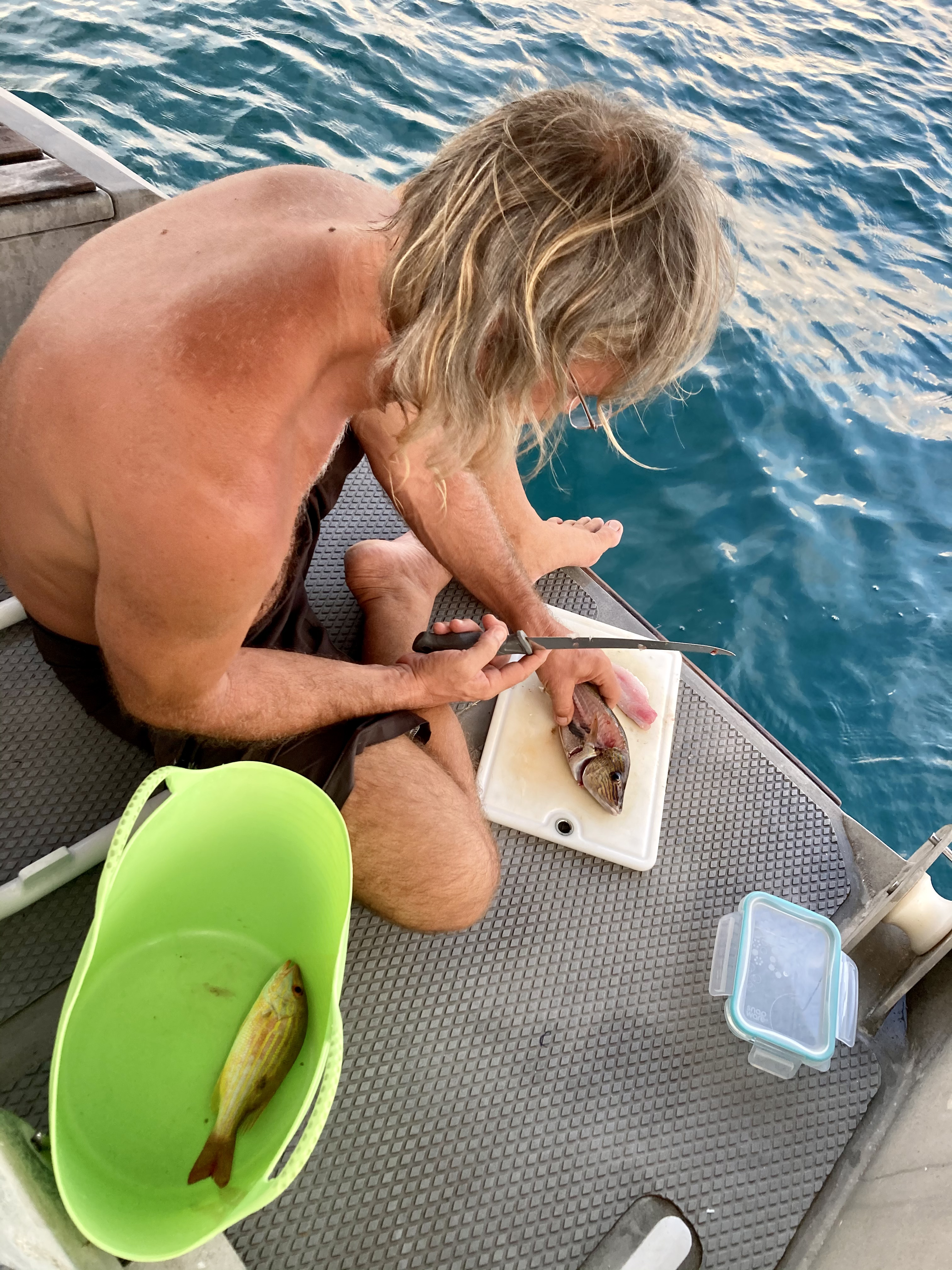
On the other hand, exchanges with mola makers who occasionally stopped by were always bound to be lengthy and animated visits. The hand stitching and design intricacy of each mola varied considerably and the mola maker would inevitably want to show you every one of the molas that had been brought with them… often numbering in the hundreds. You’ll want to check each one twice, for sure.

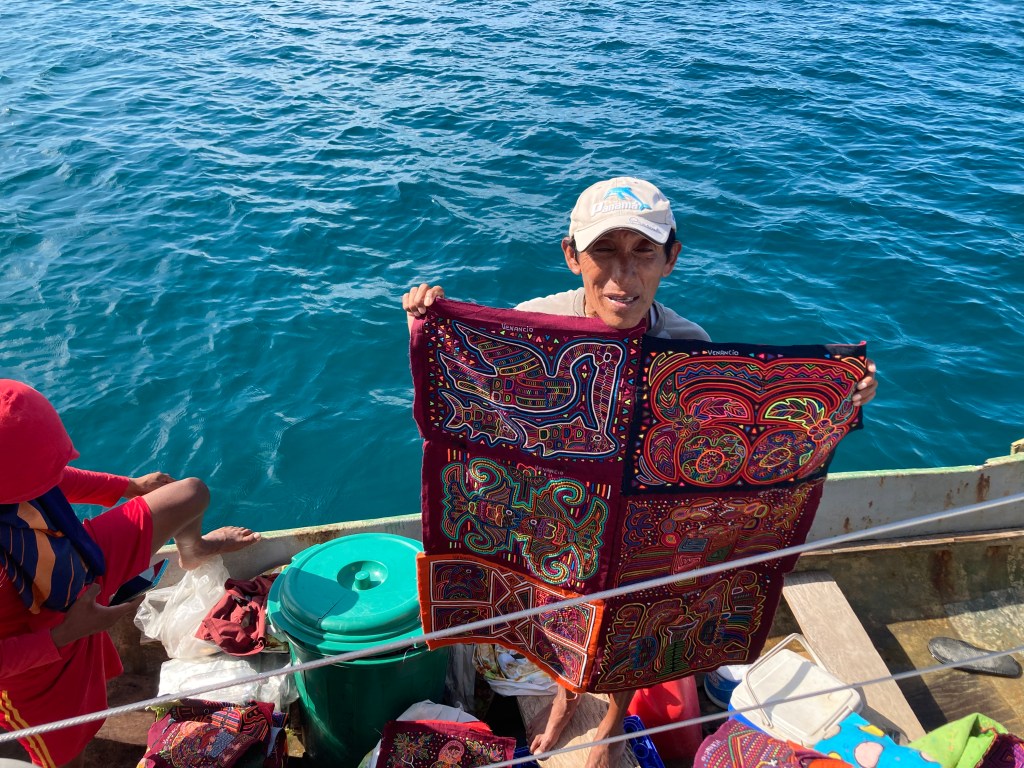
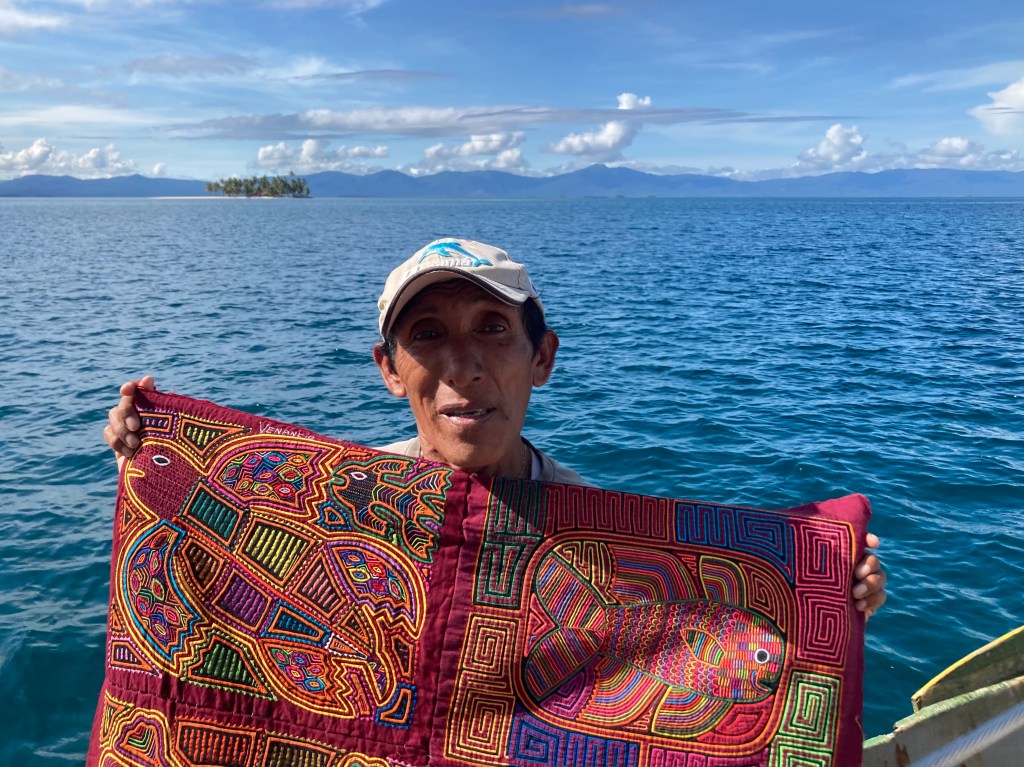

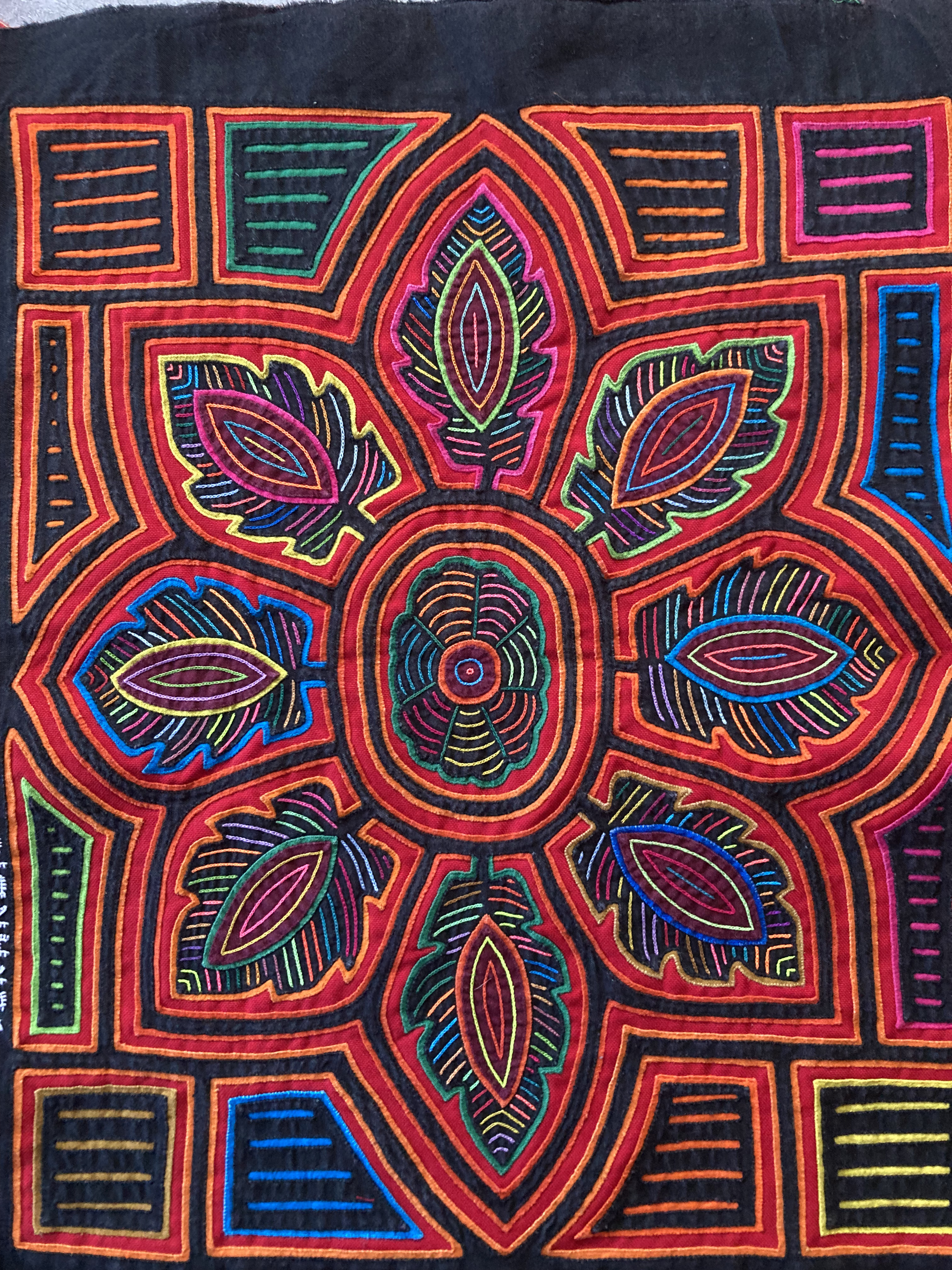
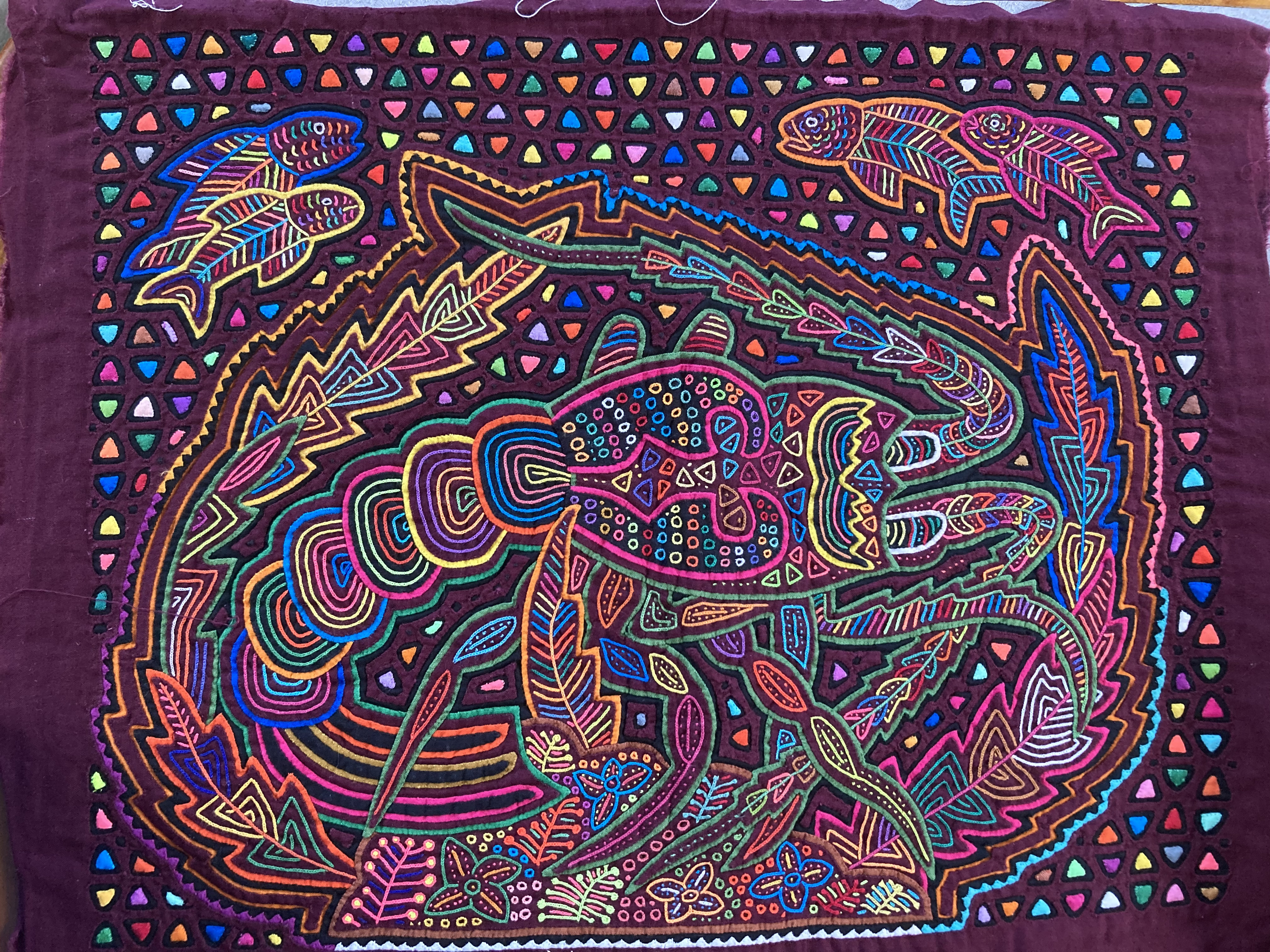

Incredibly colorful, intricate hand stitching. Each image and pattern highlights extraordinary creativity and attention to detail. Combined with the matching very colorful personalities of the artists, we found it hard to resist buying far too many. It was good to support local artists; still, it was also good they generally only stopped by when you first arrived.
And once the display process started, you were hooked. What are you gonna do after fifteen minutes of being shown hundreds of molas… say you’ll think about it? You now find you have a tiny boat of people tied up to your home quietly waiting for you to finish thinking about it… awkward.
While some of the small local boats are made of fiberglass and are equipped with outboard engines, the more typical modes of transport seen, usually with one or two Kunas paddling, are the traditional hand crafted dugout cayucas – simple but amazingly functional.
The rigging systems set up on some of the cayucas allow an impressive range of sailing options, especially considering the very limited available materials and lack of a keel on the boats. They use their paddle as a rudder and are able to both set up and break down the whole system in a few seconds, depending on changing conditions.
We watched Kuna fishermen paddling and sailing in conditions we would not want to take the dinghy out in.
Fishing techniques varied from one guy alone with a hand line (the most common method we NEVER saw bring up a fish); to a couple of guys free diving with masks, fins, and either a snare for catching live lobster and crab or spear for fishing; to a group of half dozen guys fishing the surface with a larger net. Never a fishing pole. No scuba gear.
Mito, Antoni, Amil – Local Fishermen:

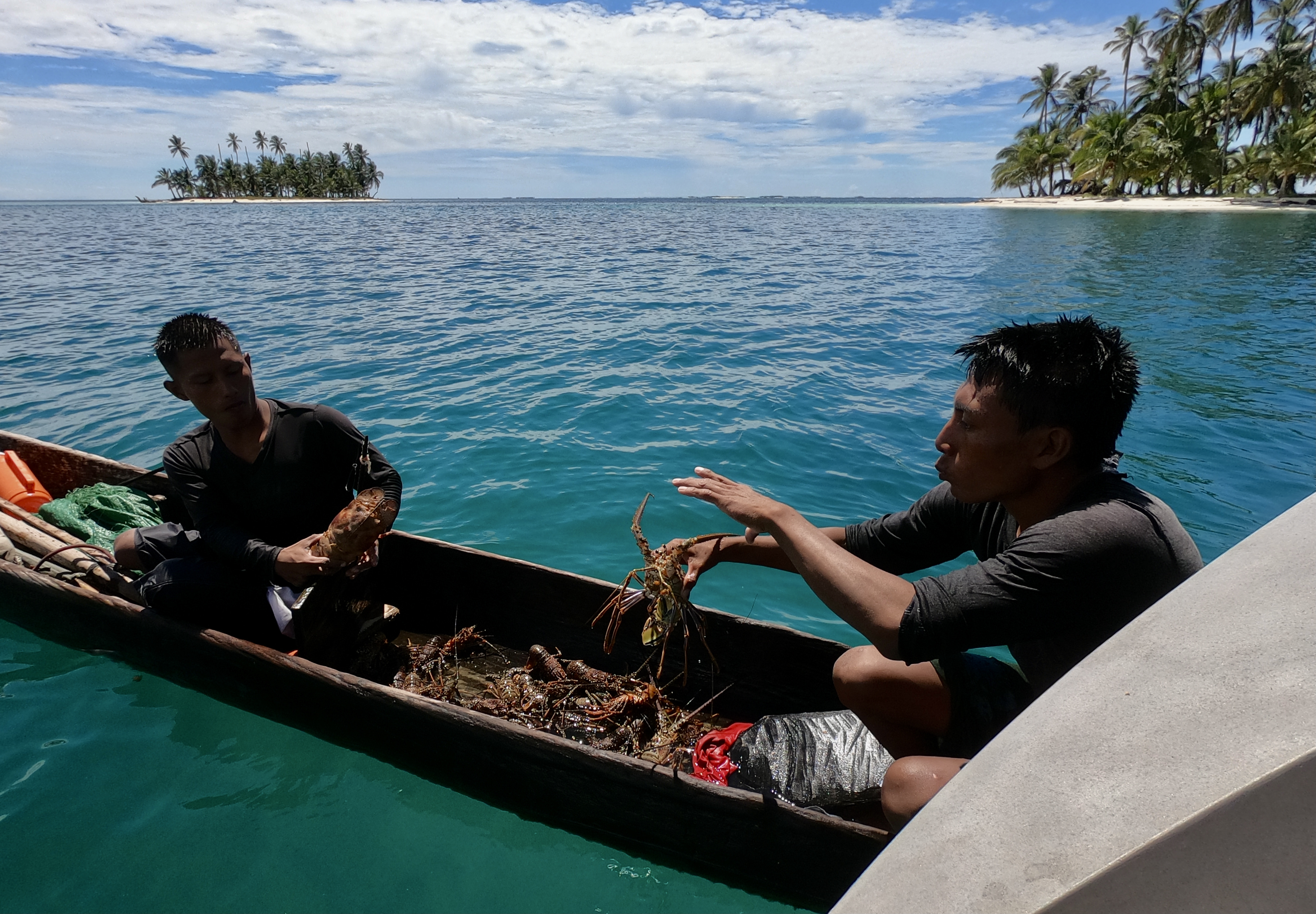

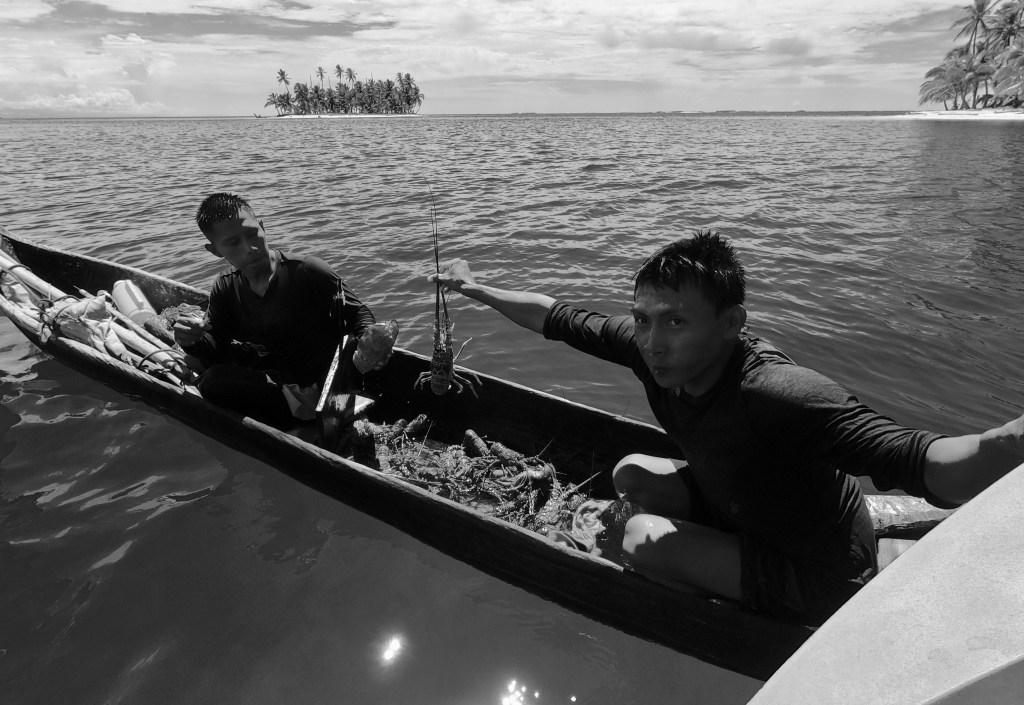
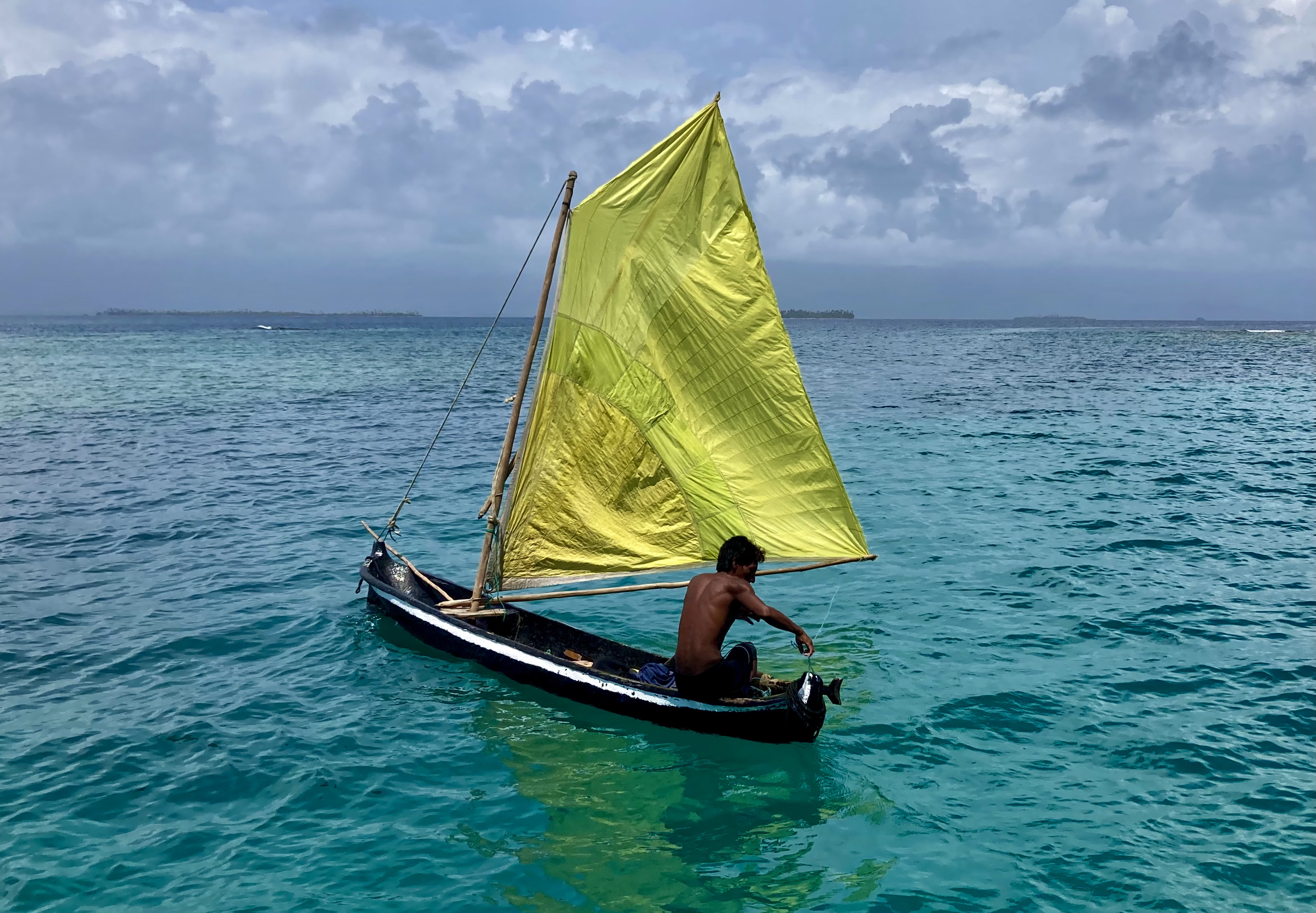
OTHER KUNA SAILORS:
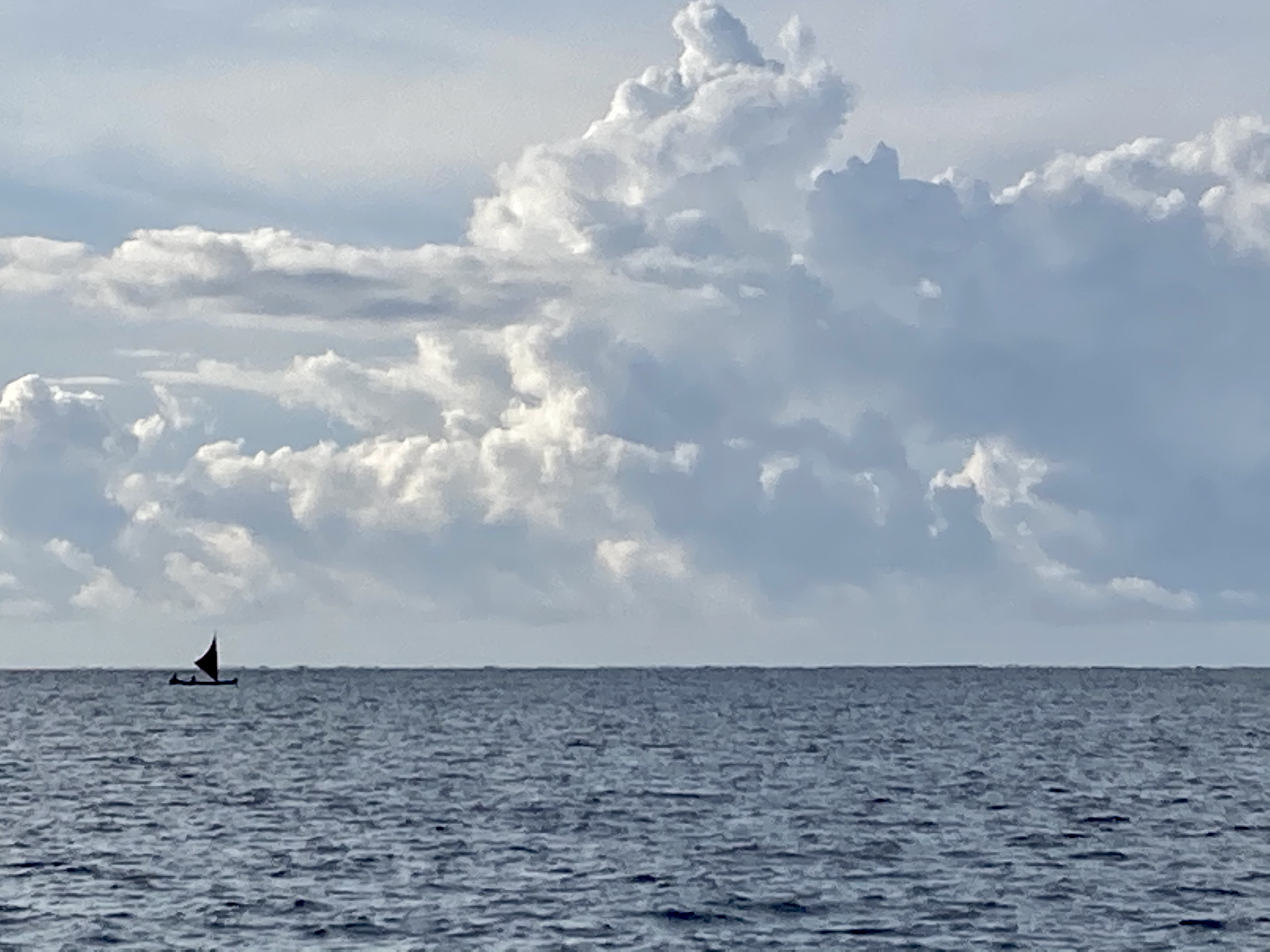


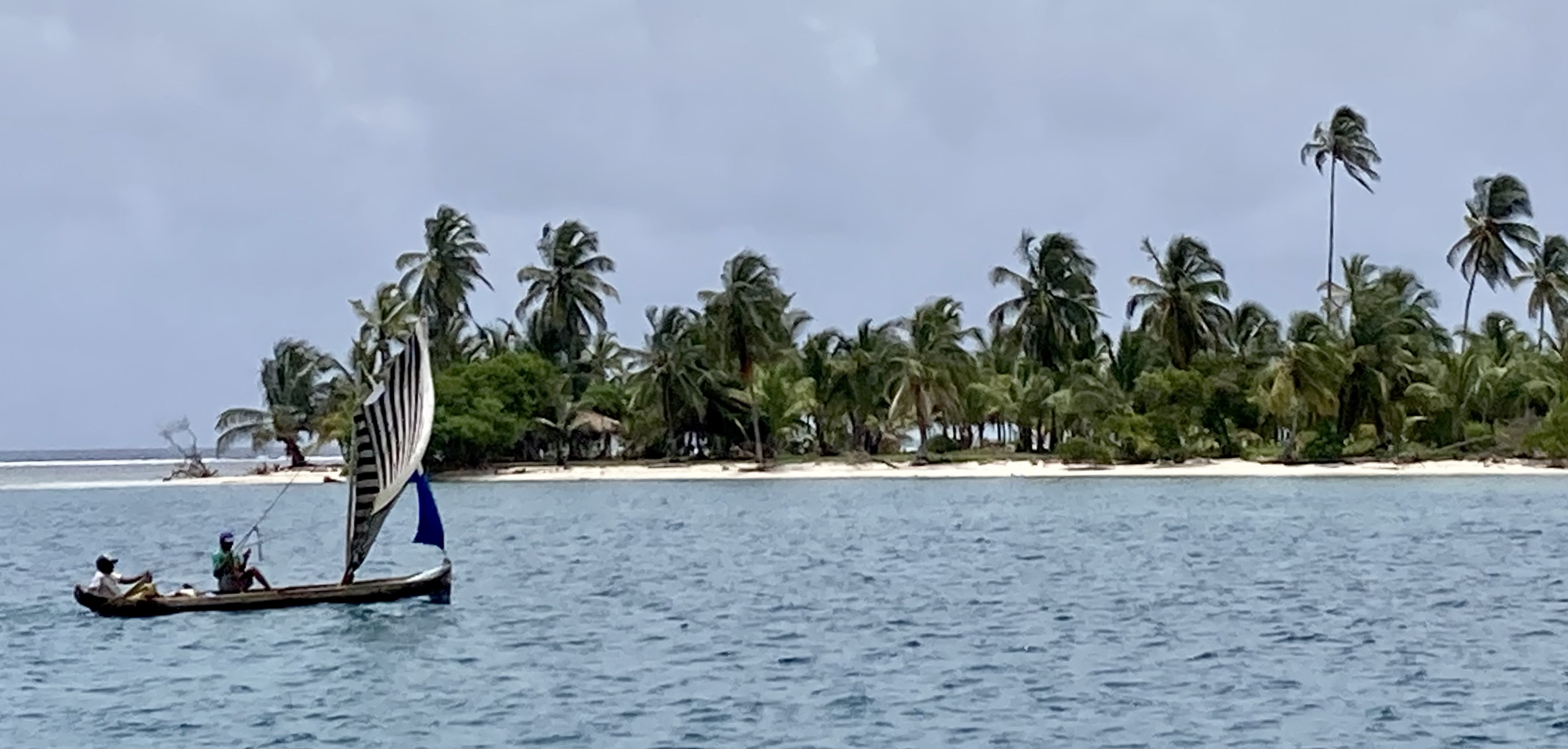
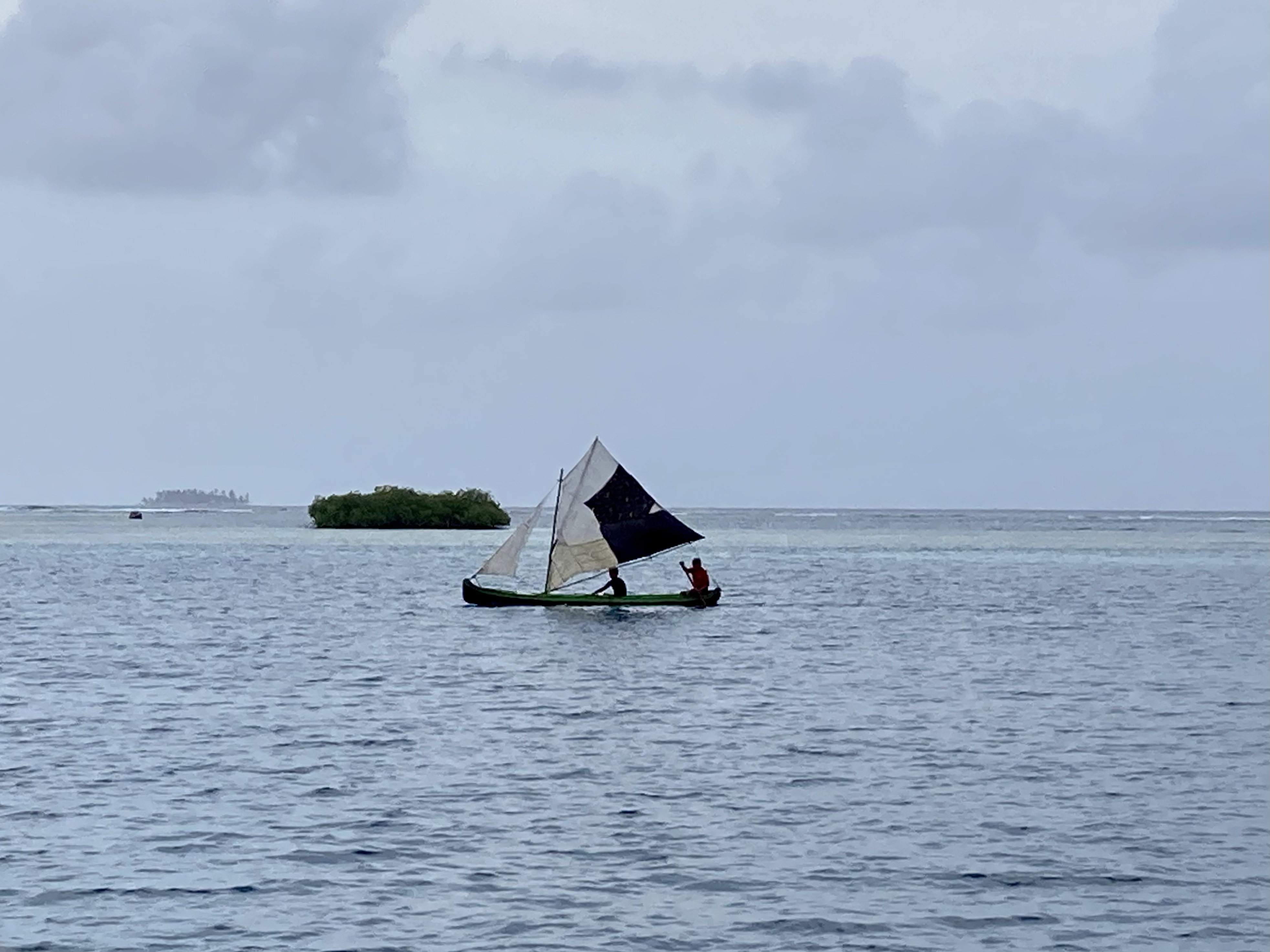

COVID restrictions still prevent outsiders from going to any of the towns for supplies, but that’s not to say that supplies aren’t available.
Local Kuna fishermen are always nearby with fresh fish, live lobster and crab. In spite of the ridiculous amount of work required to eat, crabs of the Caribbean go down in my book as number one on the menu!
Yes, fish are our friends… but sometimes shit happens.
With a heavy heart of shame for my personal selfish indulgence, I name the following photo collage…
Git’N M’Belly
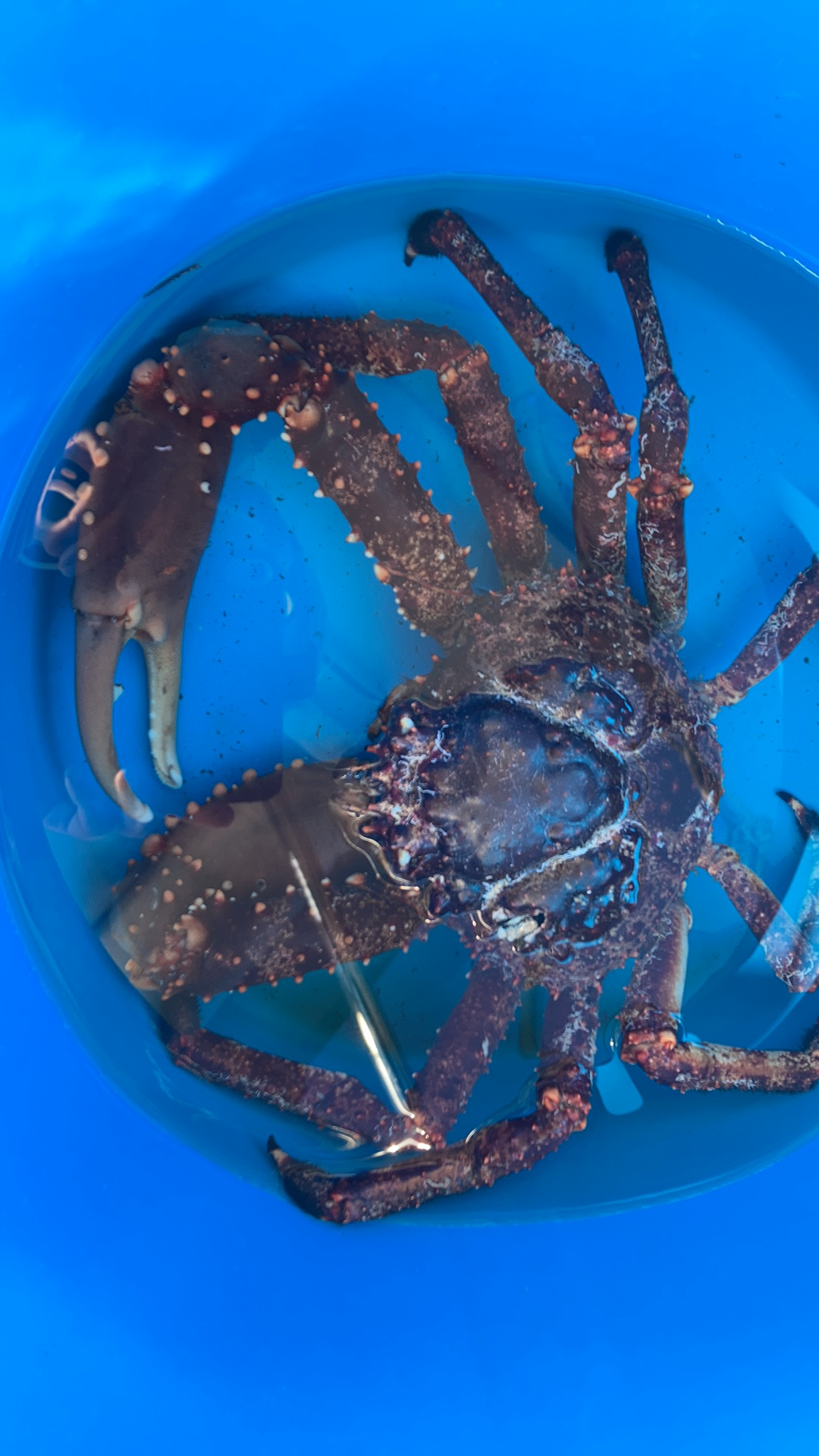


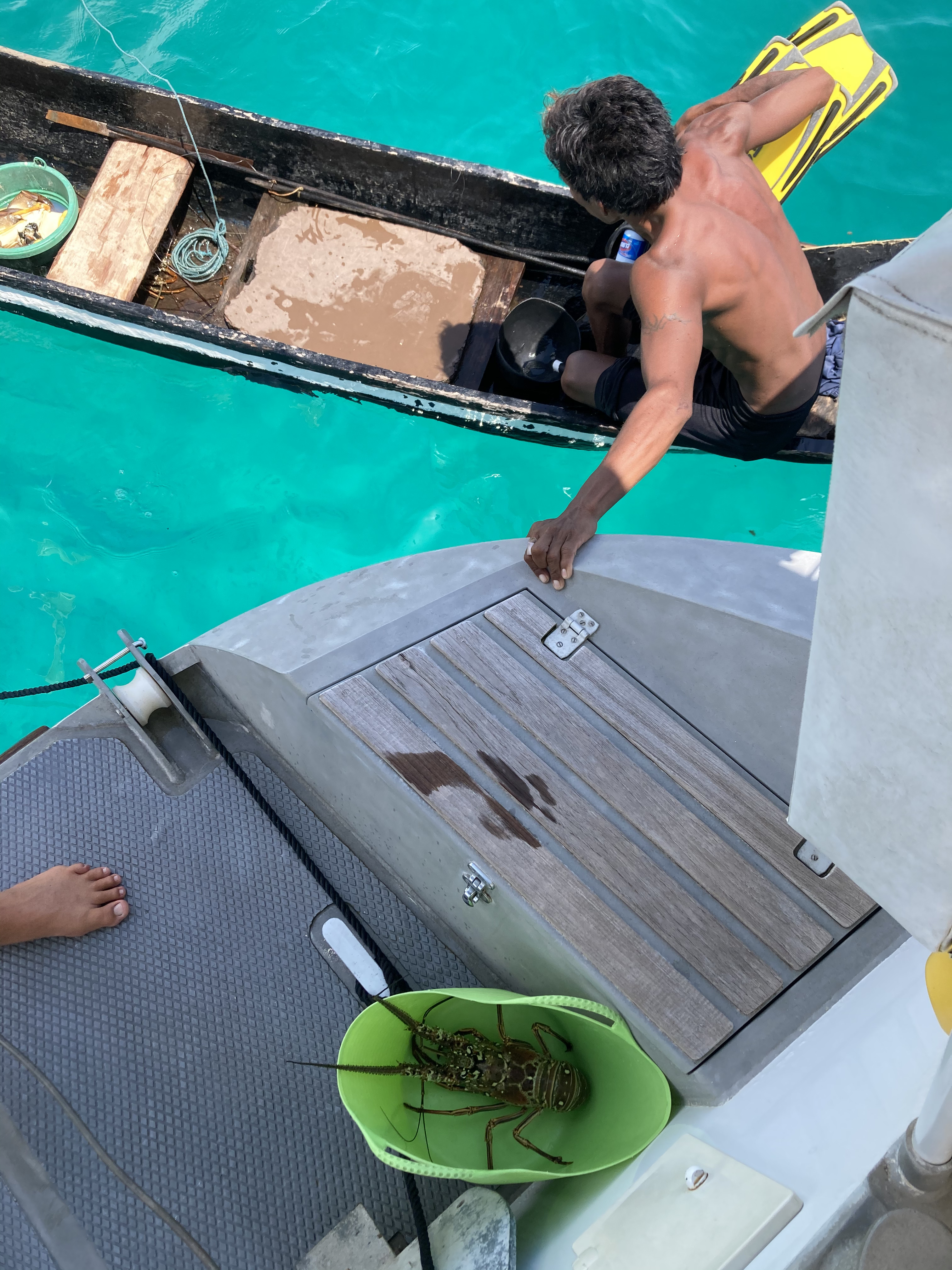
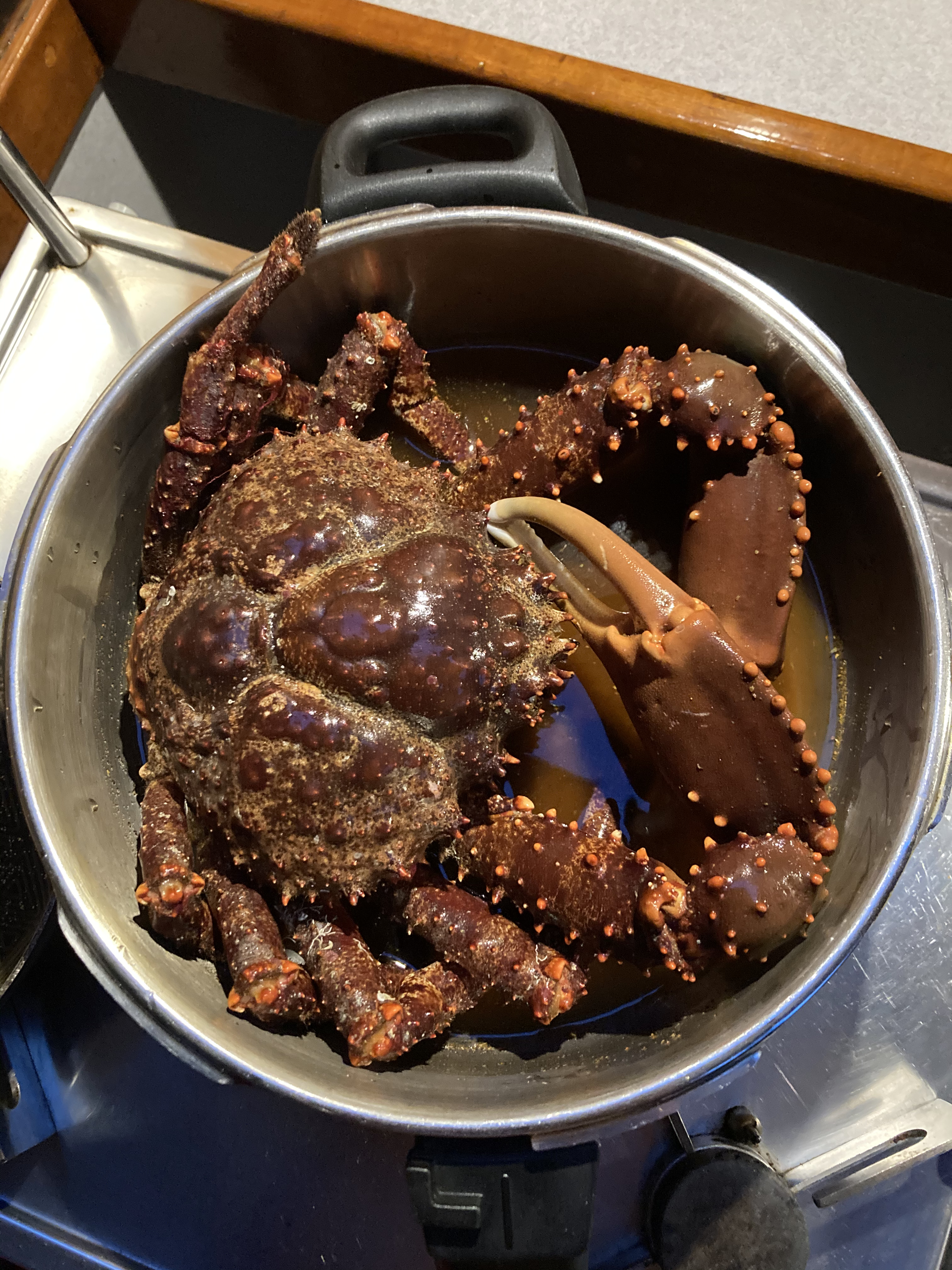
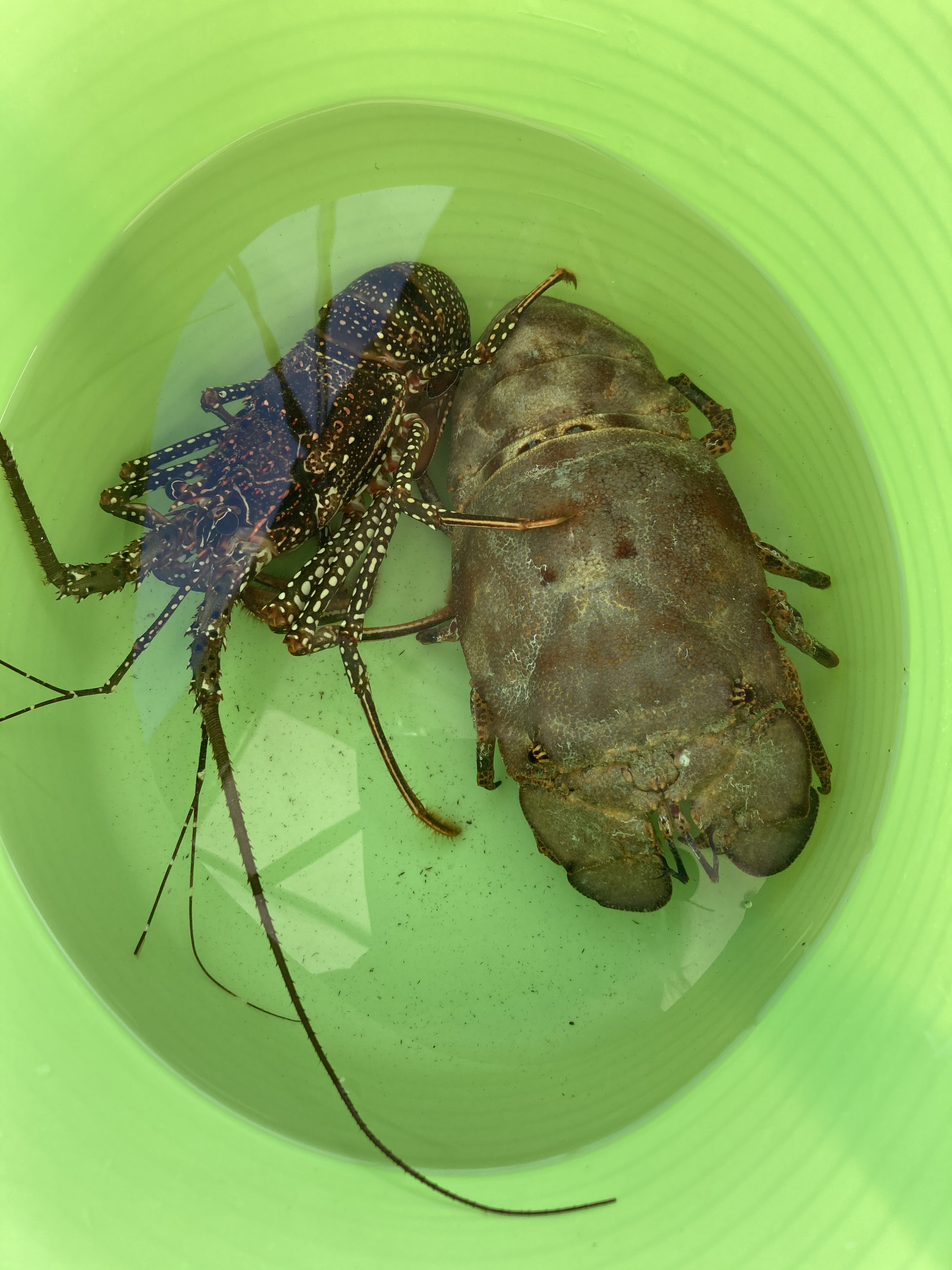
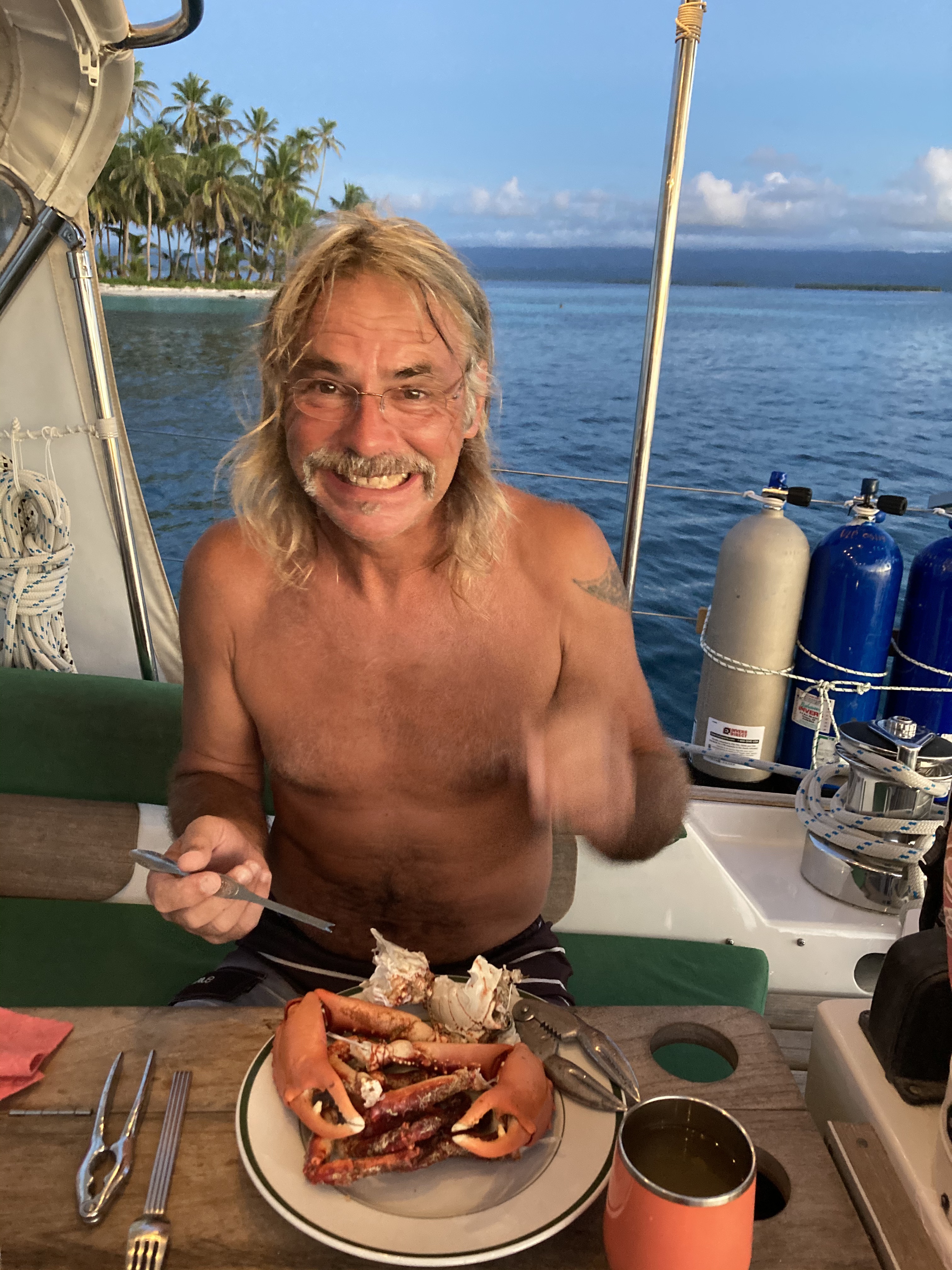
For some of the biggest crab claws, I had to give up on fancy and sophisticated crab and lobster shell cracking tools and bring out the big guns… twelve inch channel lock pliers.
We learned gasoline, diesel, or water can be arranged to be delivered by jug for those desperately in need. And being in the right place when a veggie boat passes by always signals a streak of good fortune. Sometimes what was available could be quite meager; but more often it was a floating jackpot of fresh vegetables, fruit, even eggs, chicken, wine, beer, and milk. More expensive, absolutely; but delivered to your boat. Limited supplies, sure. Yet ironically easy for provisioning a boat in such a remote location.

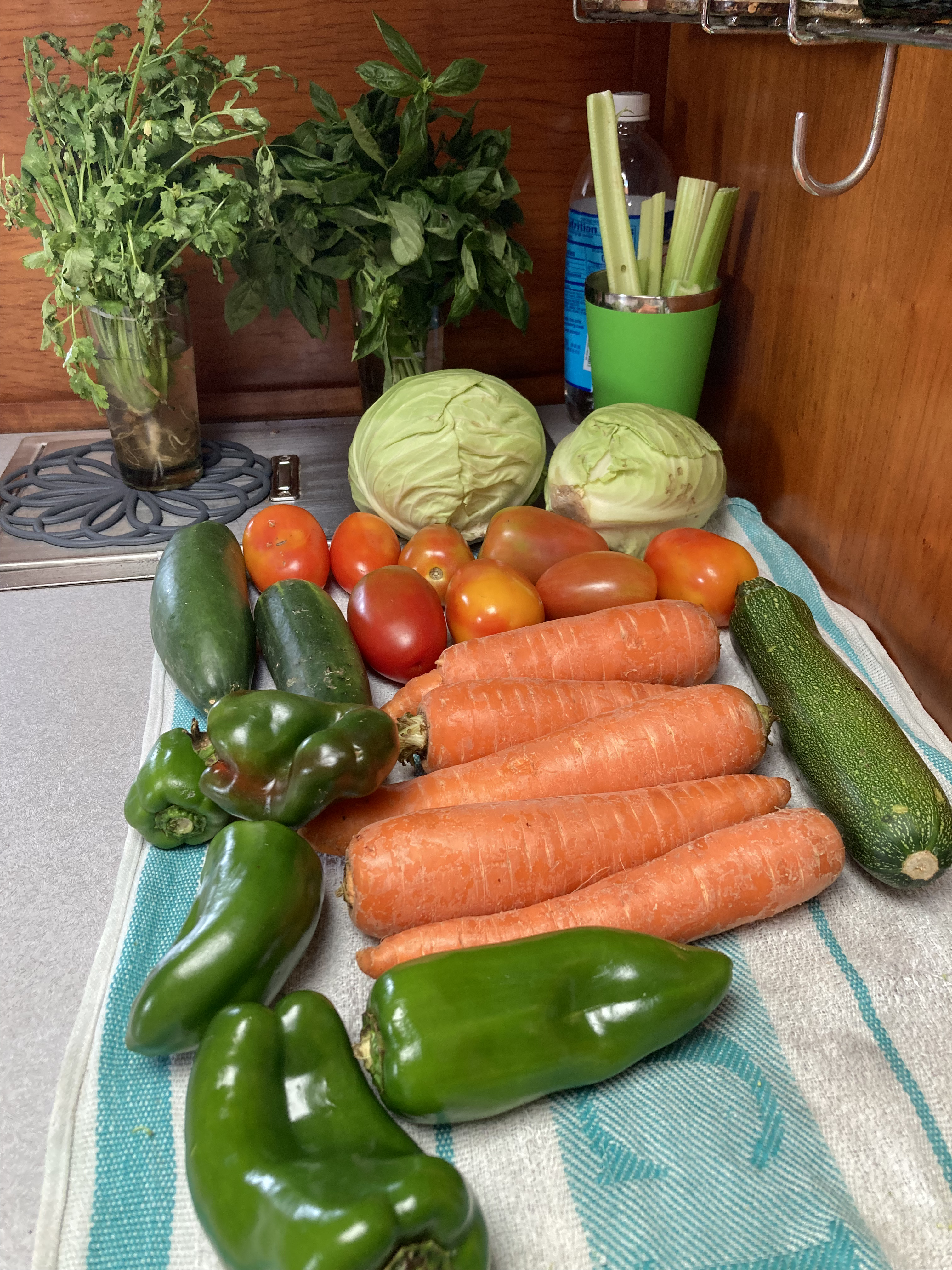

Once, when we didn’t have the exact amount of money for a lobster, we received our change the following day in the form of a giant bundle of bananas… just how many can be eaten in a day coincides largely with how ripe they are.
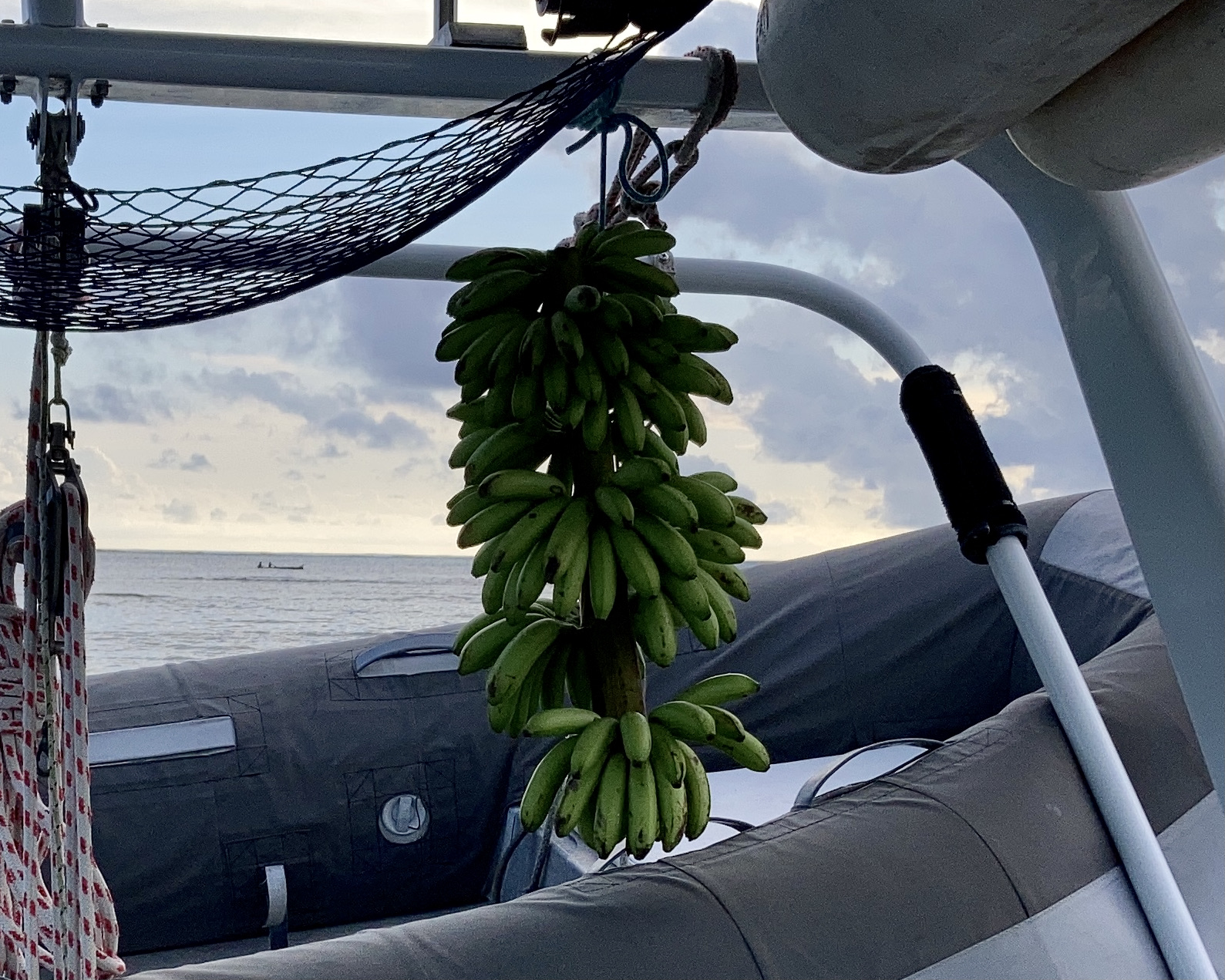
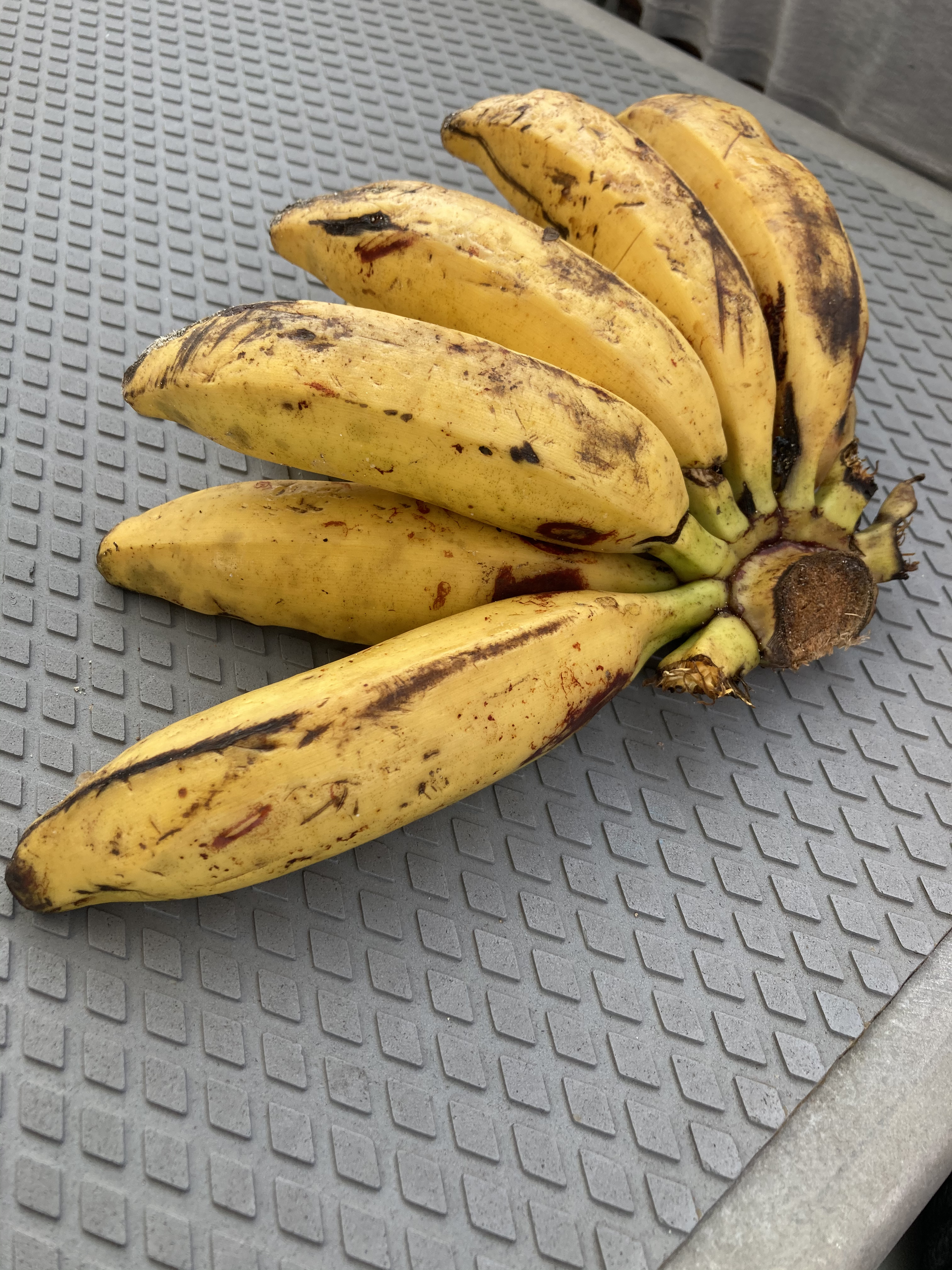
It took the furler for our genoa sail seizing up for us to finally get out our solent sail and use it after four years of sitting in a locker. Turns out we should have tried it a long, long time ago… go figure. Also turns out, a furler is a massive ball ache to repair… but that’s a different story.


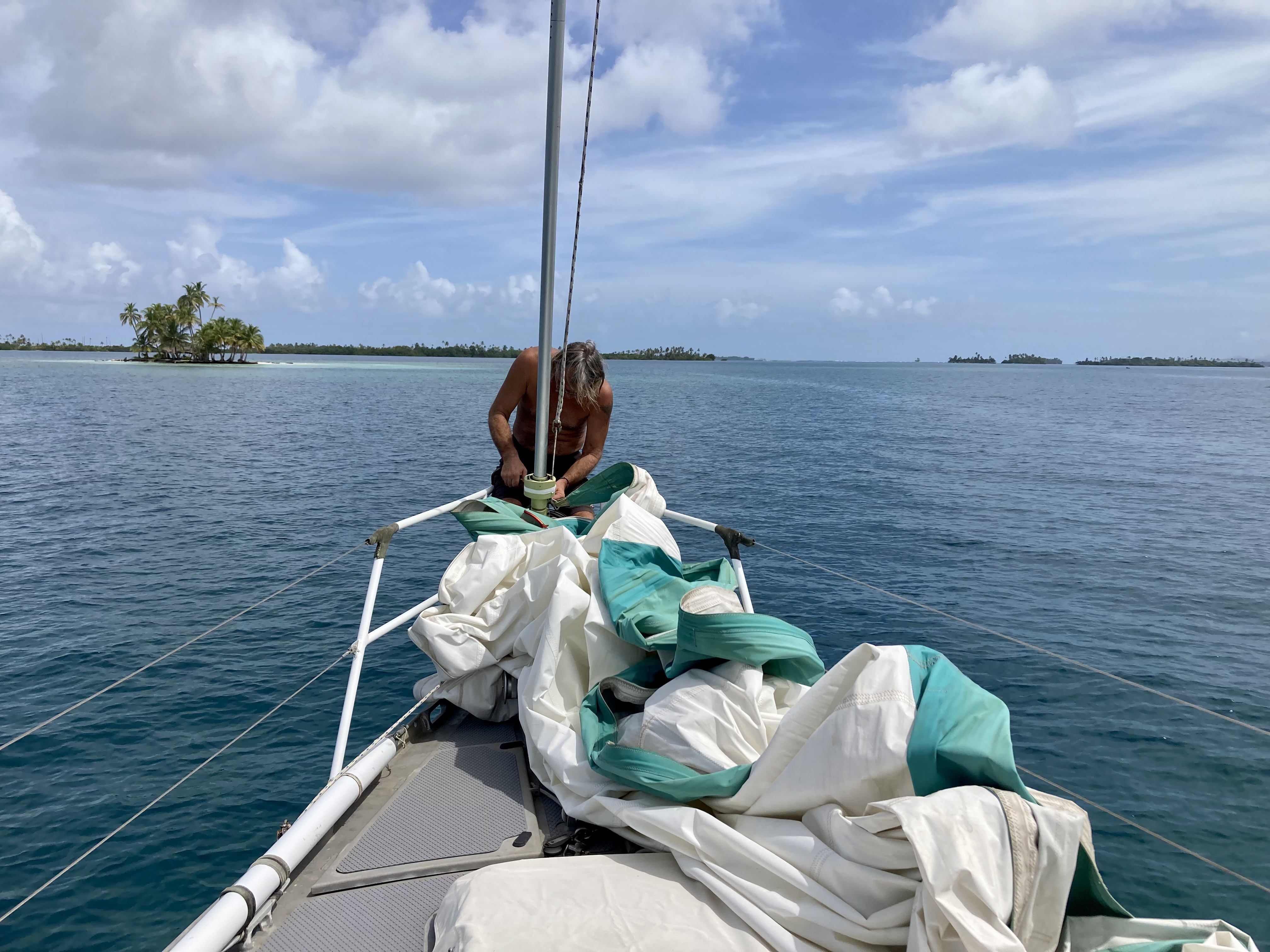

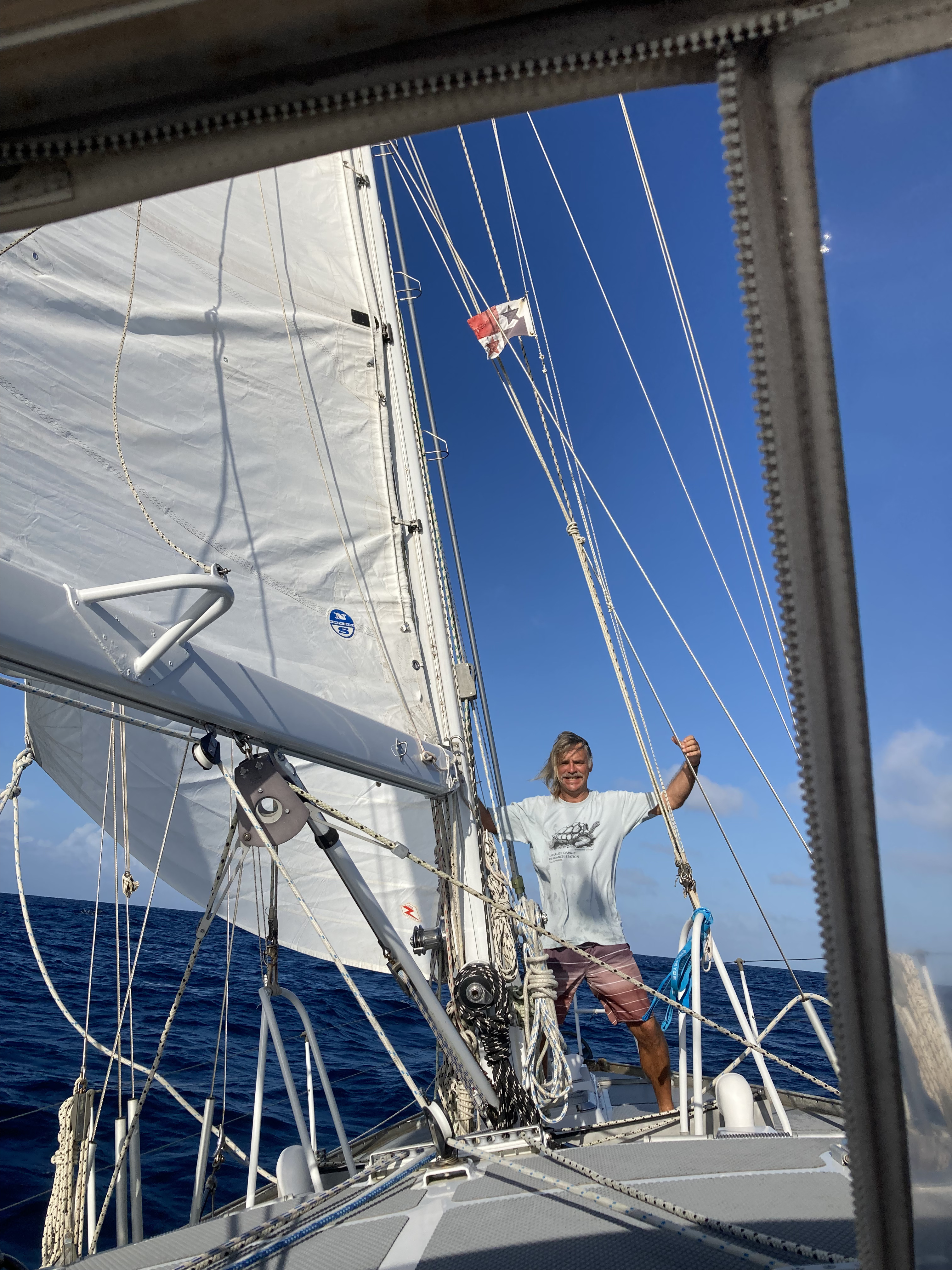
WIDE RANGE OF APPEAL:
Different islands and anchorages held different appeals. Sometimes the obvious beauty of a location brings with it the high price of popularity. But out of the way, less conspicuous, and largely unknown spots can reveal their own treasures… especially with a bit of exploration.
Amongst the easternmost group of islands on Cayos Cocos Bandero was the first place we spent a significant amount of time upon our arrival in San Blas. The cover photo for Eric Bauhaus’ Panama cruisers book (by far the most popular Panama boater reference book) is an aerial shot that shows three boats at anchor in a beautiful spot that seemed tight for one boat when we actually tried to anchor there. Fortunately, once we got set, there were only a few wind directions that really caused us to hold our breath. It was as photogenic a setting as you could ask for.

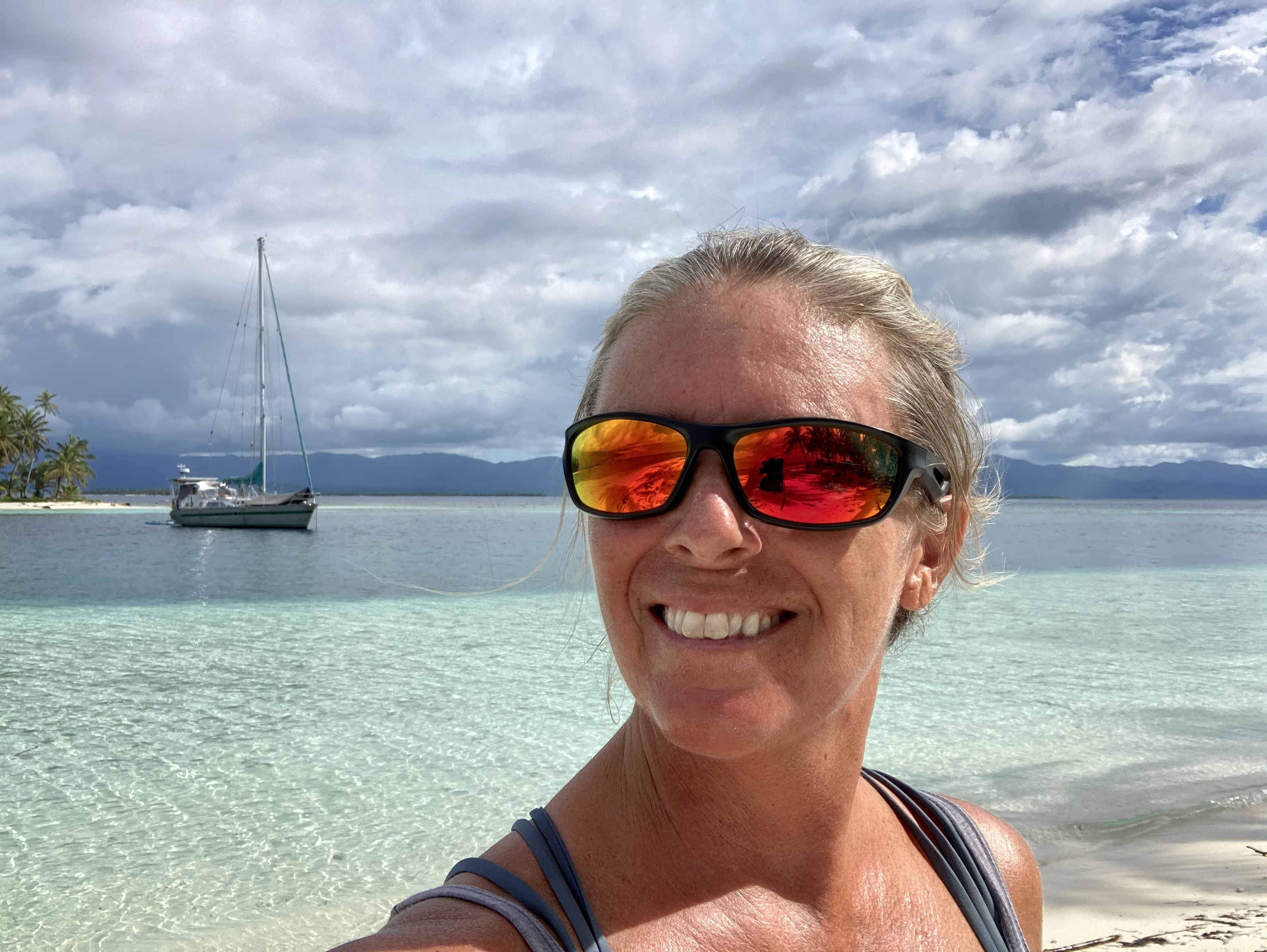

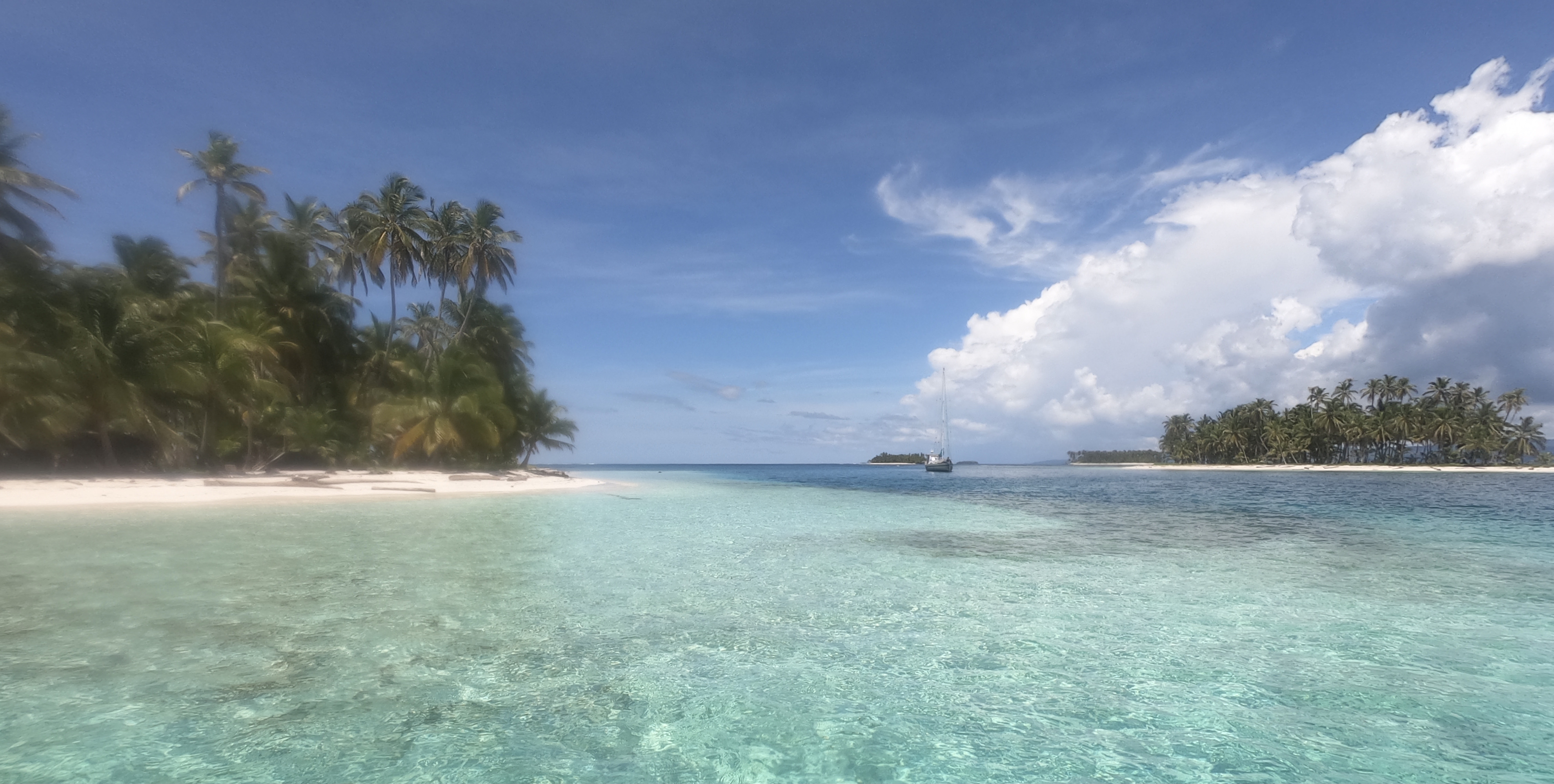


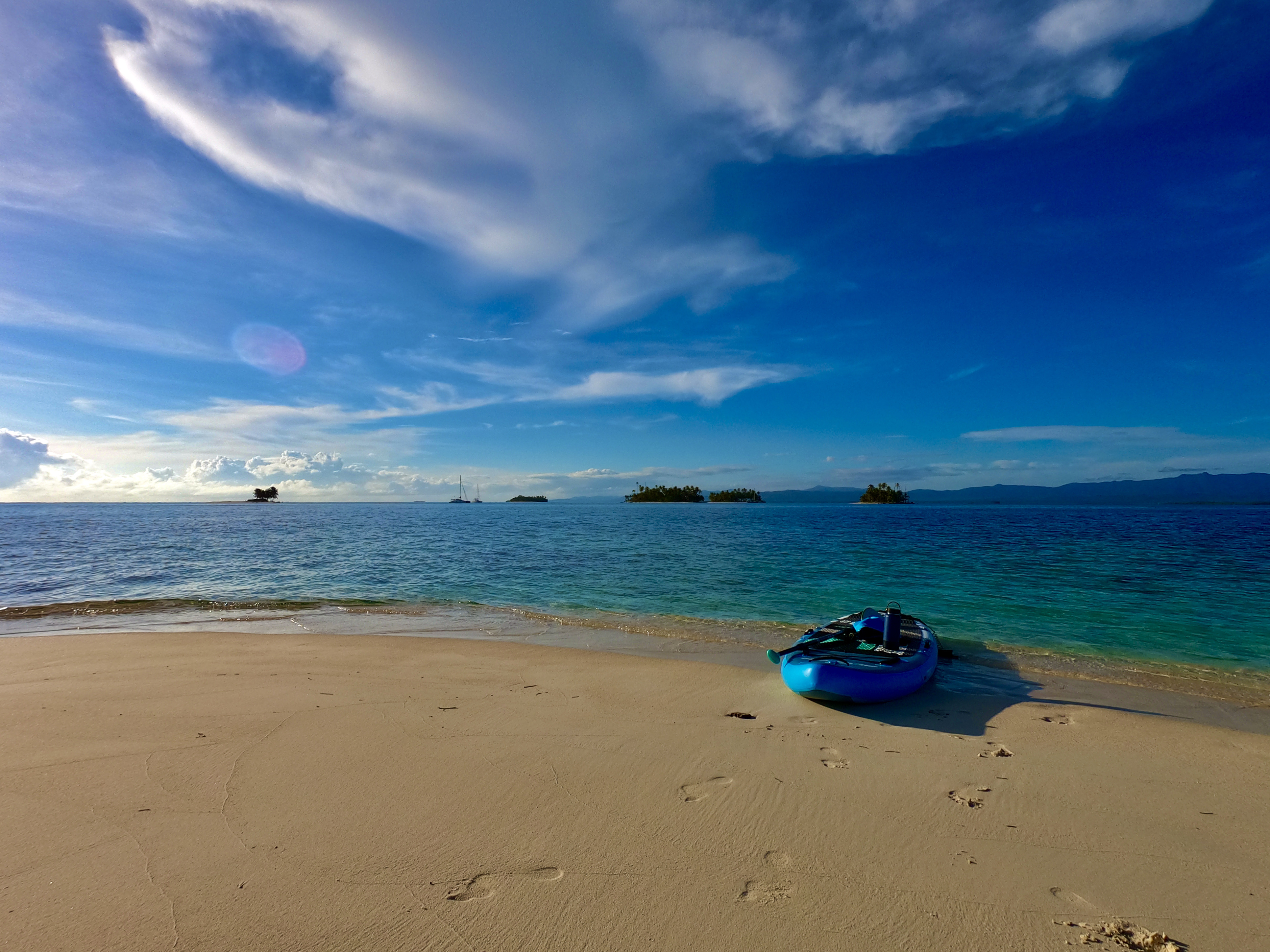
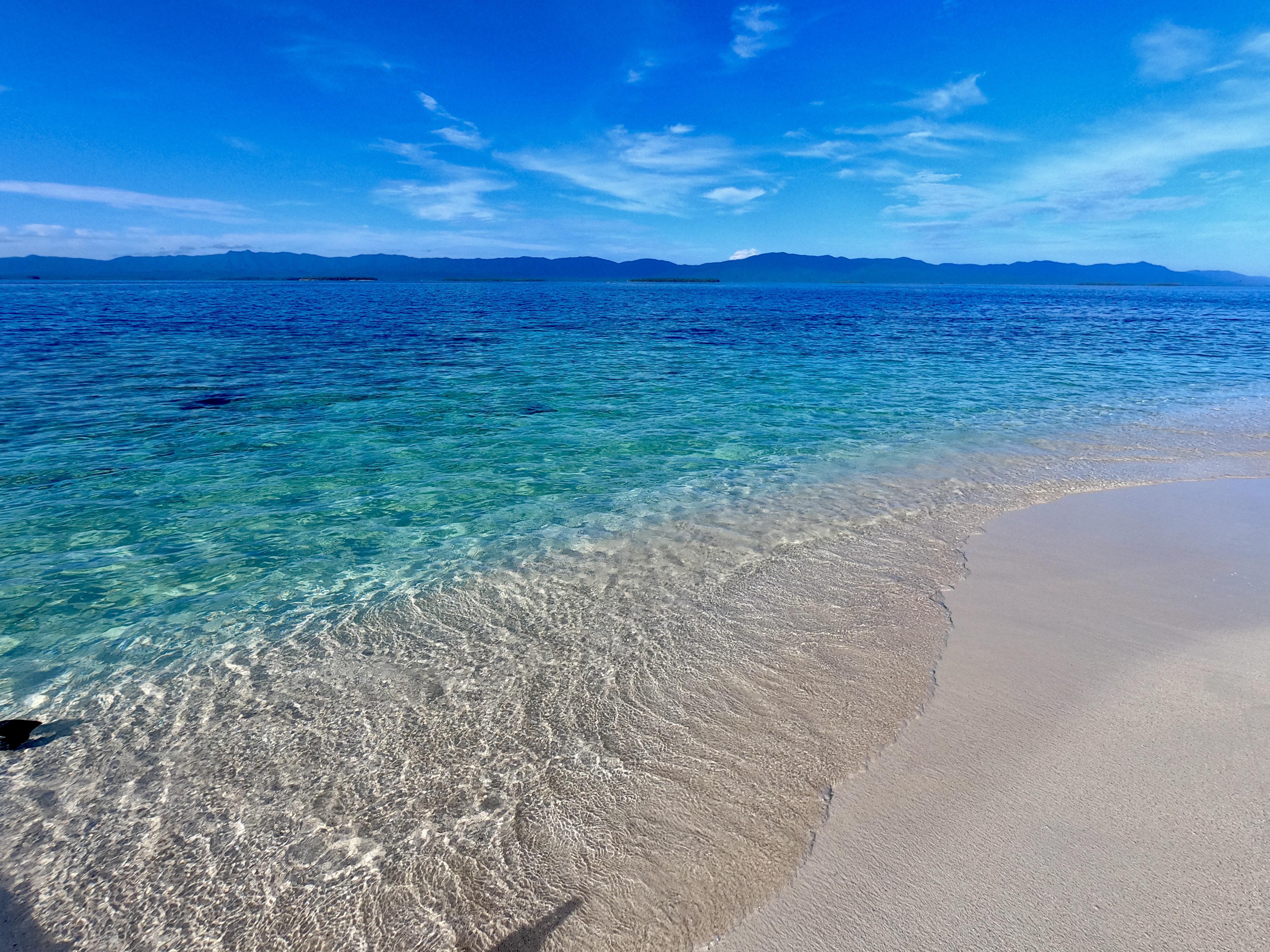

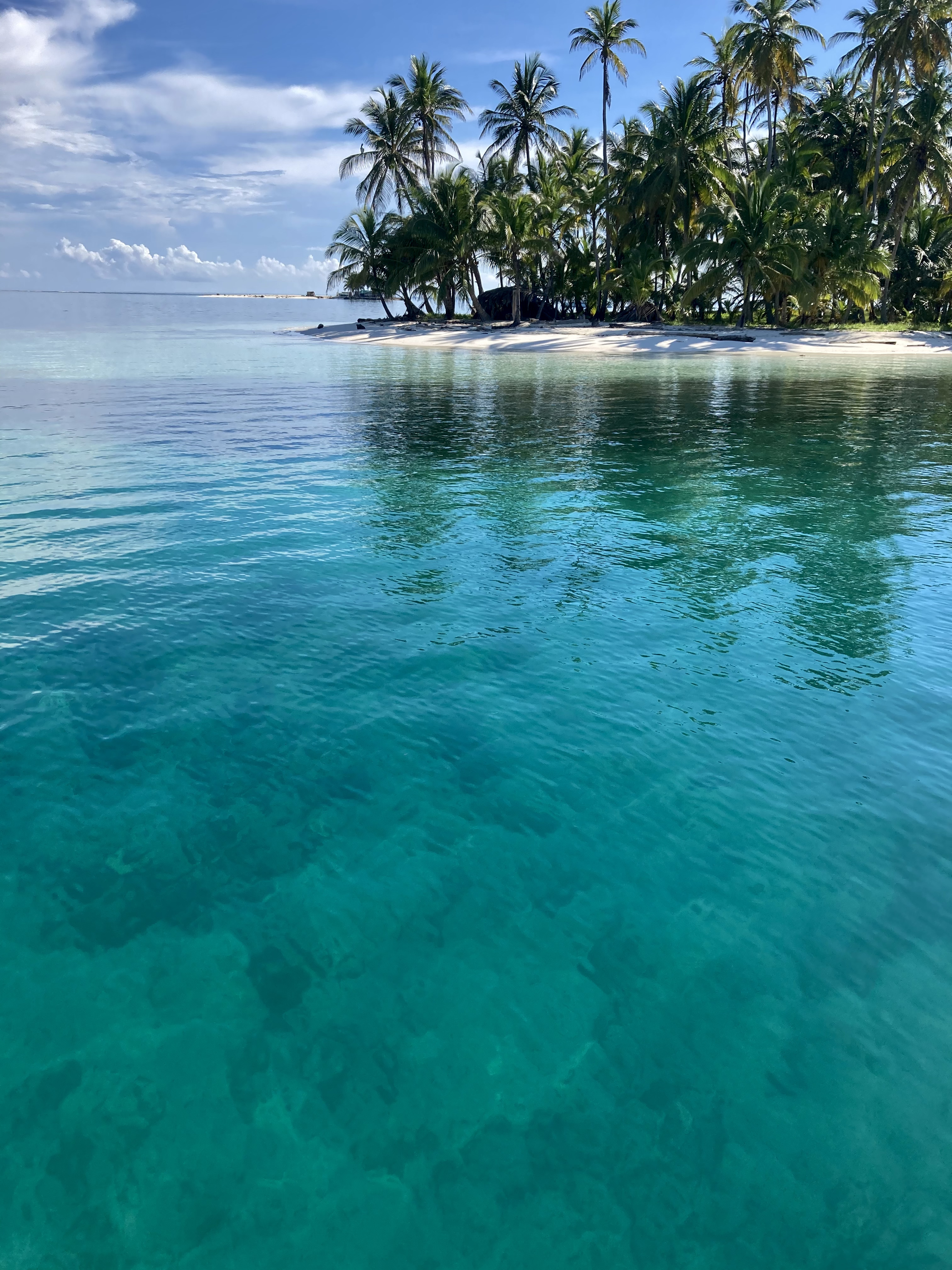



While visiting Guna Yala, we always looked forward to purchasing fresh bread. Some tasted quite like it came from a regular bakery; but some local Kuna bread traditionally baked on a fire is a truly unique flavor of Guna Yala. Undoubtedly the best Kuna bread we experienced was at Cocos Bandero. The fabulously pungent smokiness lingered in the cabin long after the bread was sealed up in ziplock bags. Both the smell and taste, were absolutely unmatched. A bit greasy; somewhere between a donut and roll. Eight of ’em…? Two bucks. Didn’t even need anything on them. But with a bit of precious Nutella spread on top… get the fuck outta here!
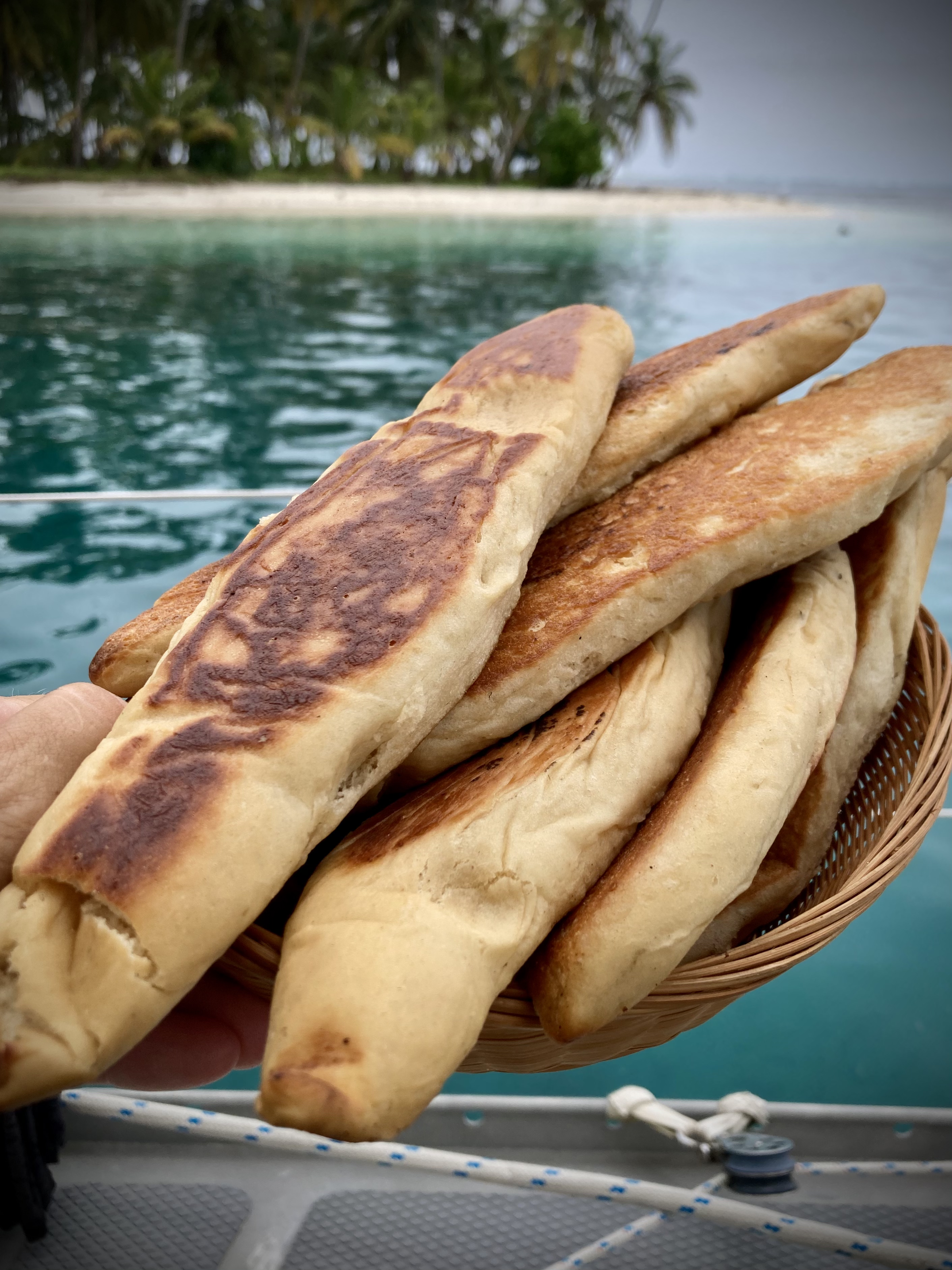

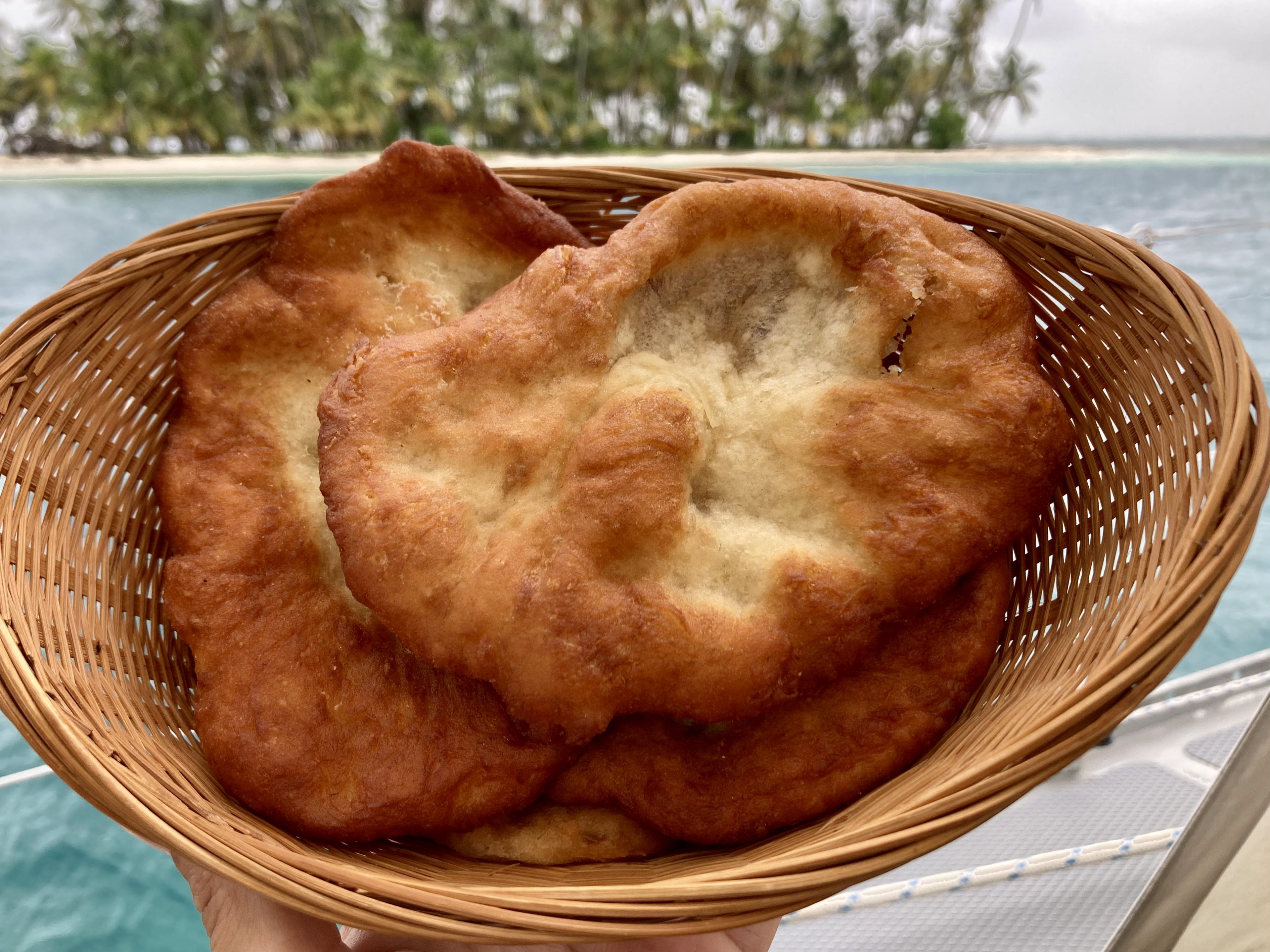
When we returned to San Blas months later, it was clear tourism had begun to open back up in the area. Good for the local economy. The sense of isolated privacy that COVID had brought to anchorages had, in places, begun to give way to both an uptick in day traffic as well as more visiting boats sitting at anchor.
One of the most popular anchorages proved to us too popular to stay. When the day charters started tying up stern to the shore right next to us —- dangerous for us in the event of any shift of wind which, of course, we had to deal with — it was time to move on.

…which saddened us a bit. Not only was the location beautiful, we had also discovered a family of eagle rays would come to visit us every night, swimming back and forth in the channel around Exit. One of those “holy shit” moments. Amazing.
After the sport fishing boat incident, we never went back to the eastern islands of Cocos Bandero. I still miss that bread… and our friends.
Less than five miles away, the westernmost two islands of Cayos Cocos Bandero (where the guy who smashed his watch lived) proved to offer a more spacious and isolated anchorage.



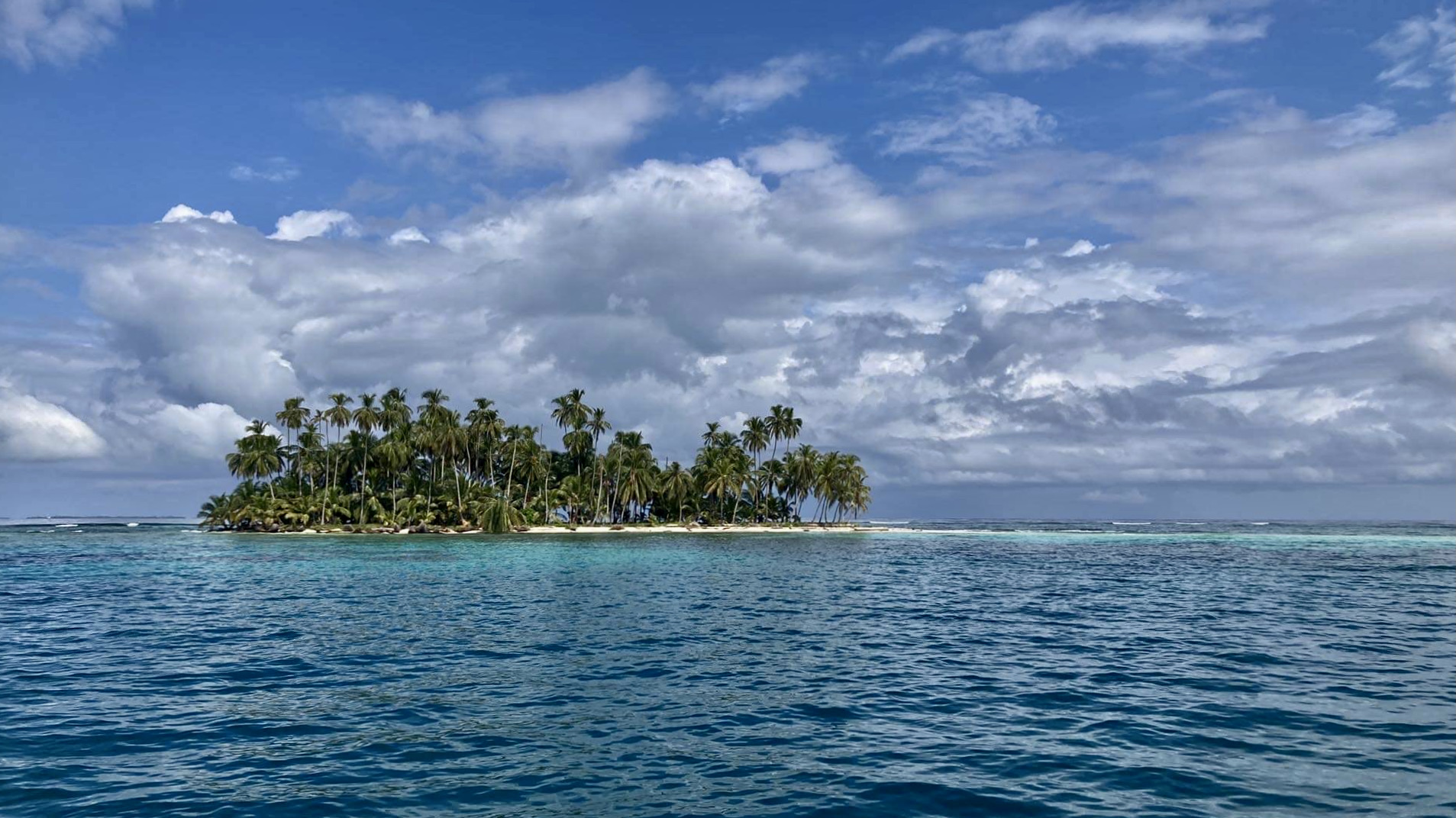

Green Island, also less than five miles away, is one of the larger islands and can be one of the more populated anchorages, but we generally lucked out.
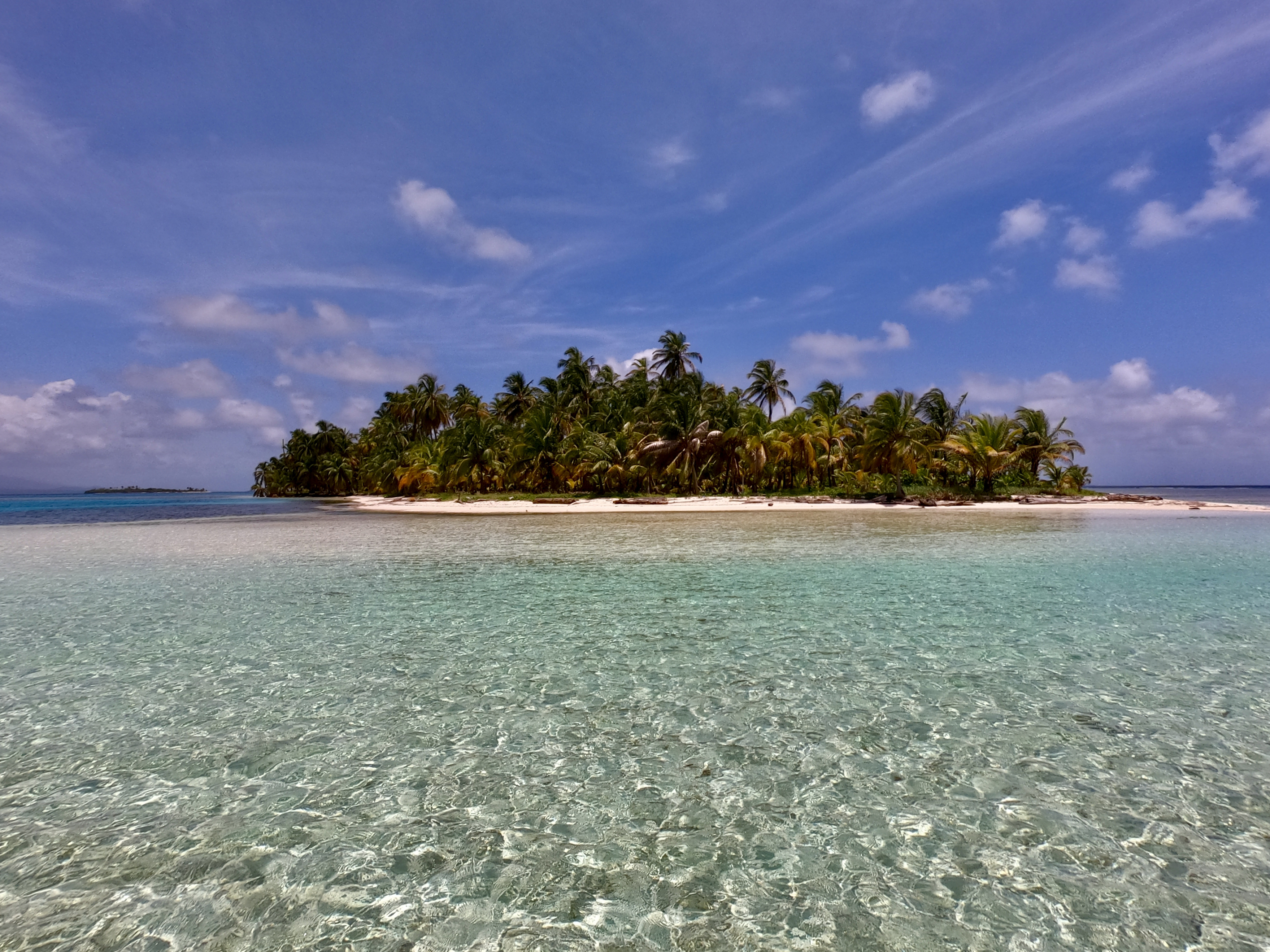
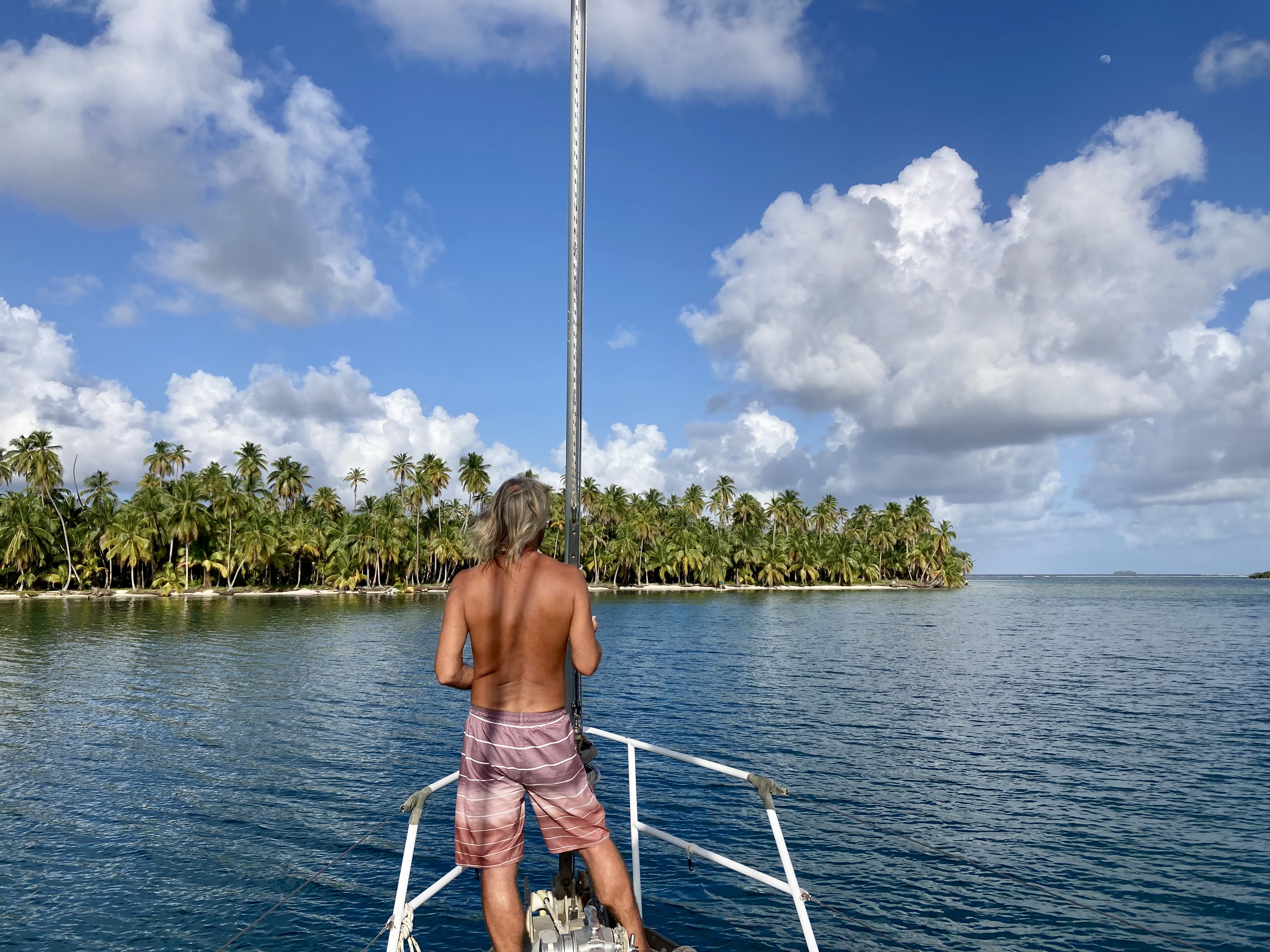
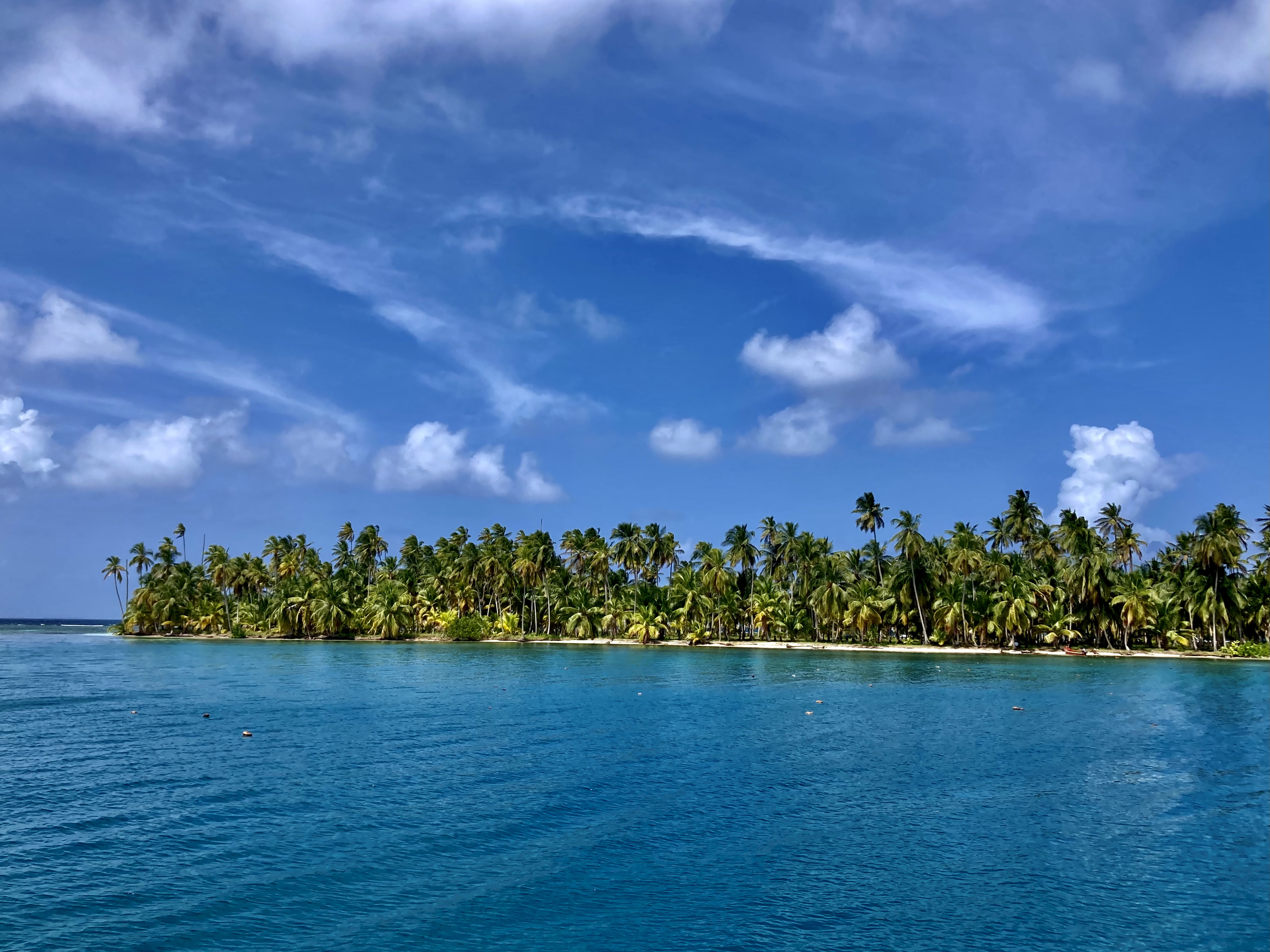
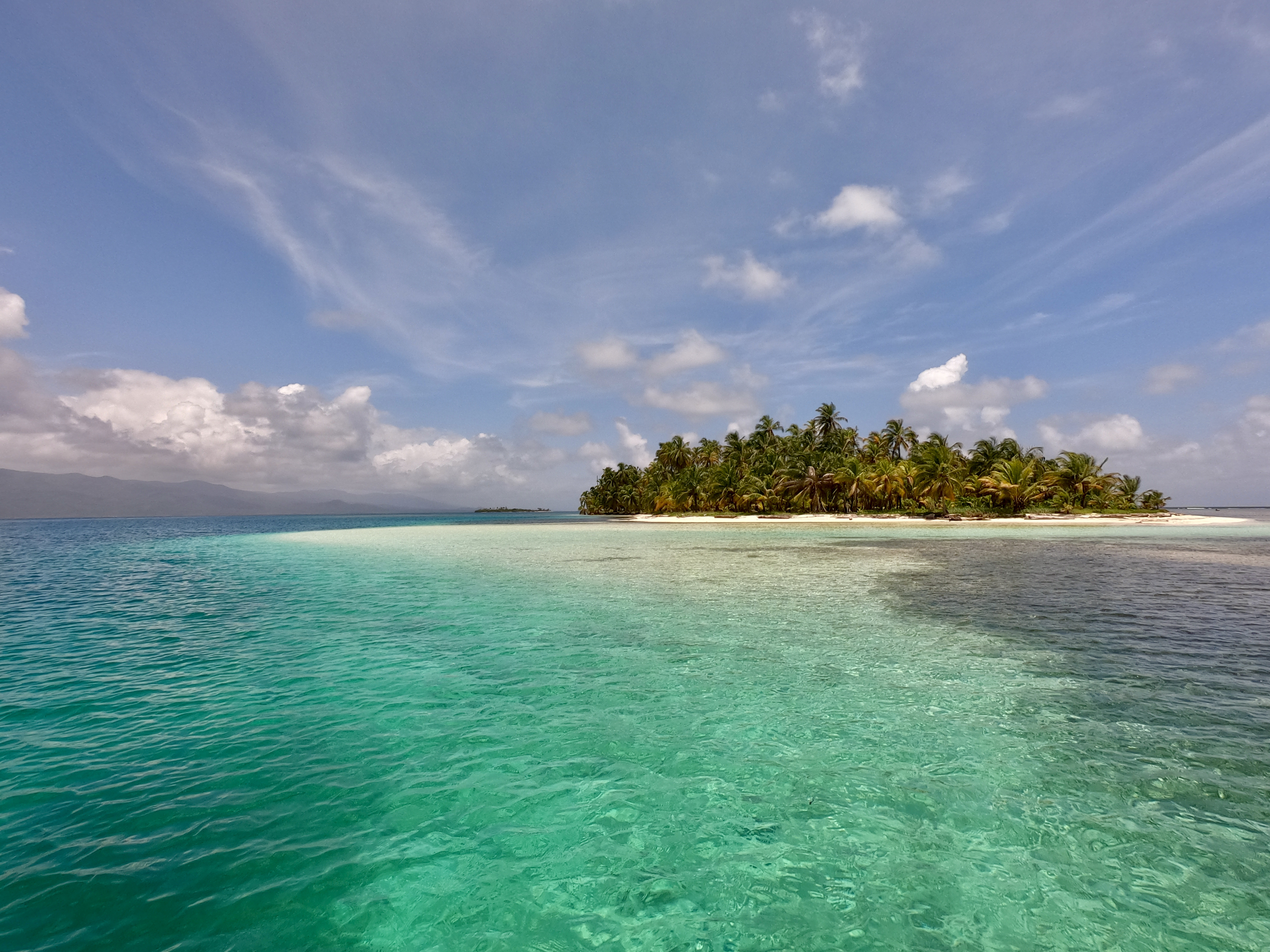
On the other hand, Waisaladup is such a small island that it occupies less space than the three hundred sixty degree diameter of Exit’s anchor swing. It always amazed us when five or six boats would try to cram in around it. We counted ourselves lucky to not be among them. If it was quiet, it was phenomenal.

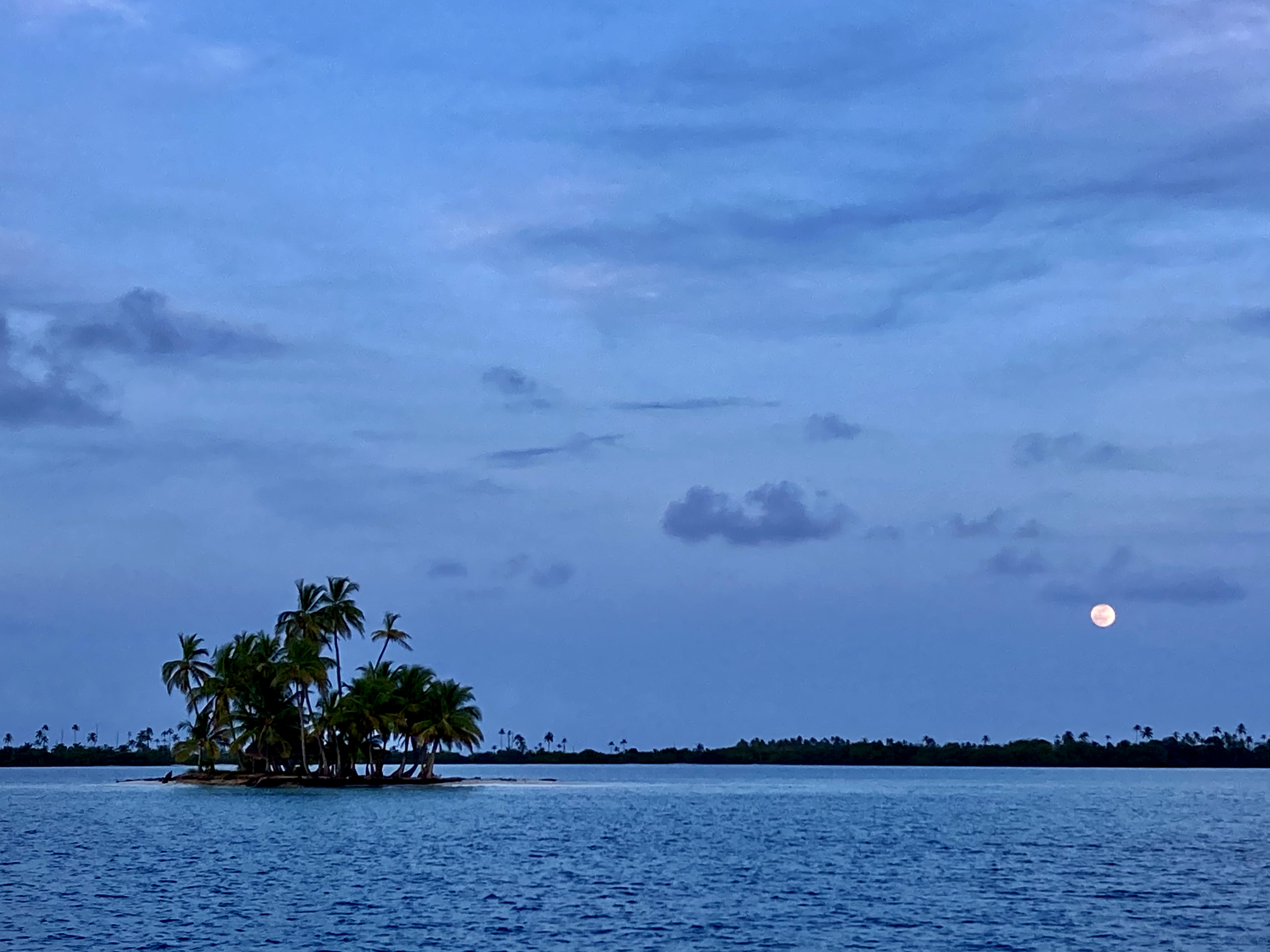
Even on a short five mile hop between islands, dolphins may stop by for a brief visit to ride the bow wake. They quickly get bored with slow sailboats but the encounters are always magical.

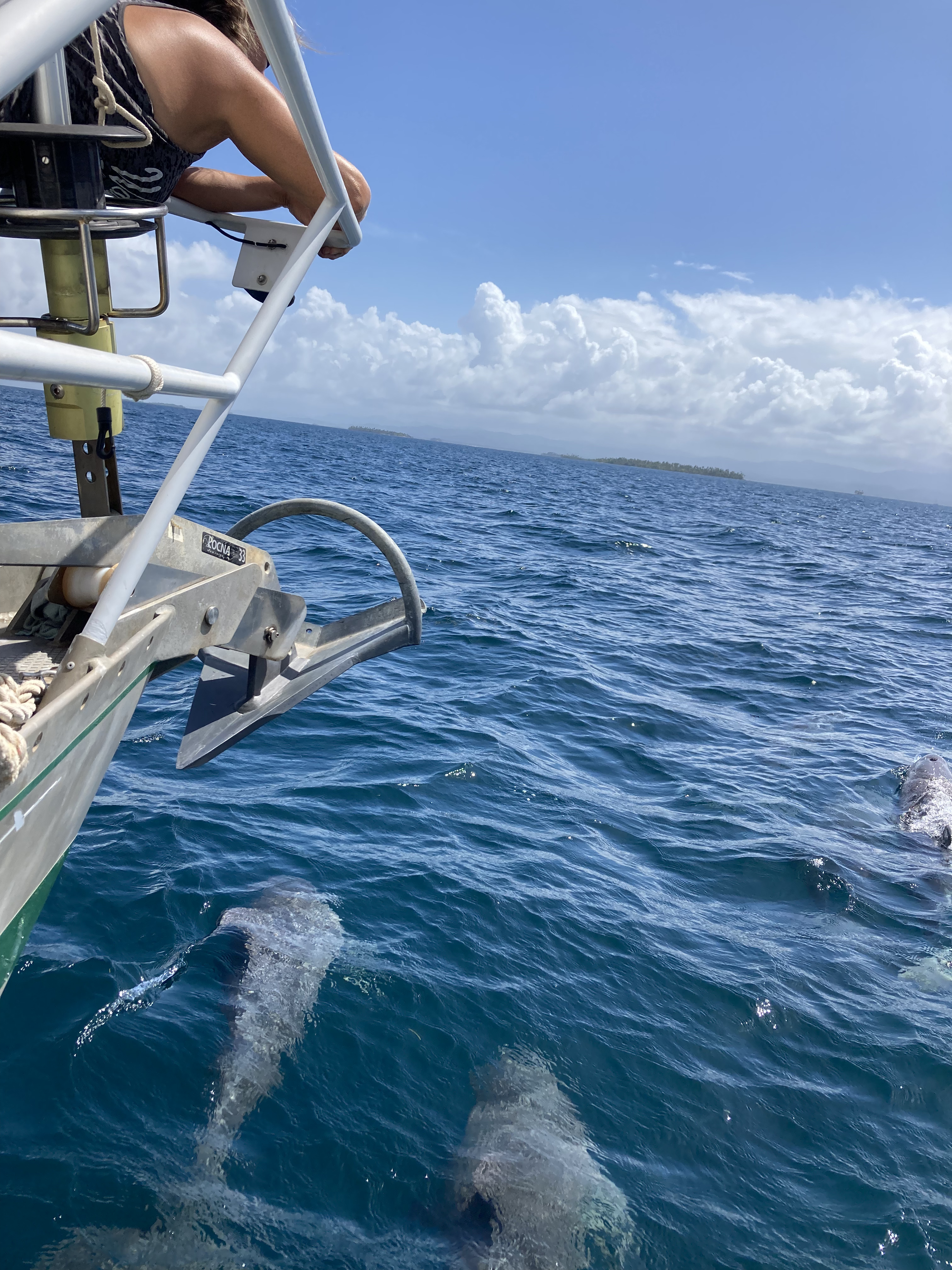

Anchored alone in another perfectly protected bay next to an uninhabited island called Esnasdup, while on a SUP excursion Kris discovered a shallow area between the mangroves at the shoreline and the open water where baby sharks were congregating.
It probably occurred only rarely, but she happened to be there at the perfect moment to catch it. They look like juvenile black tips, but we concluded they must be baby nurse sharks (which we commonly see when snorkeling the reefs)… quite special. We found the name “Baby Shark Bay” seemed to roll off the tongue much easier than Esnasdup.
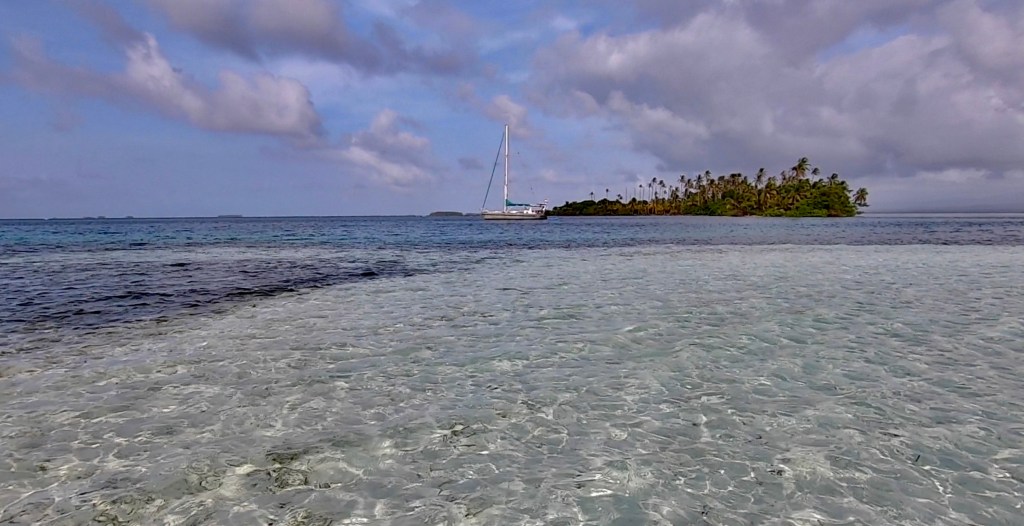
It appeared that they hung out in the mangroves on one side of the island, venturing out to the sandy shallows, reef, and eventually deeper water as both their size, curiosity, and boldness increased.
Mother Nature must have a vacation home in San Blas, because she obviously spends a lot of extra time here.
Stunning sunsets can be awe inspiring anywhere. Here, there seems to be a picturesque tropical island silhouetted in front of almost every one of them.

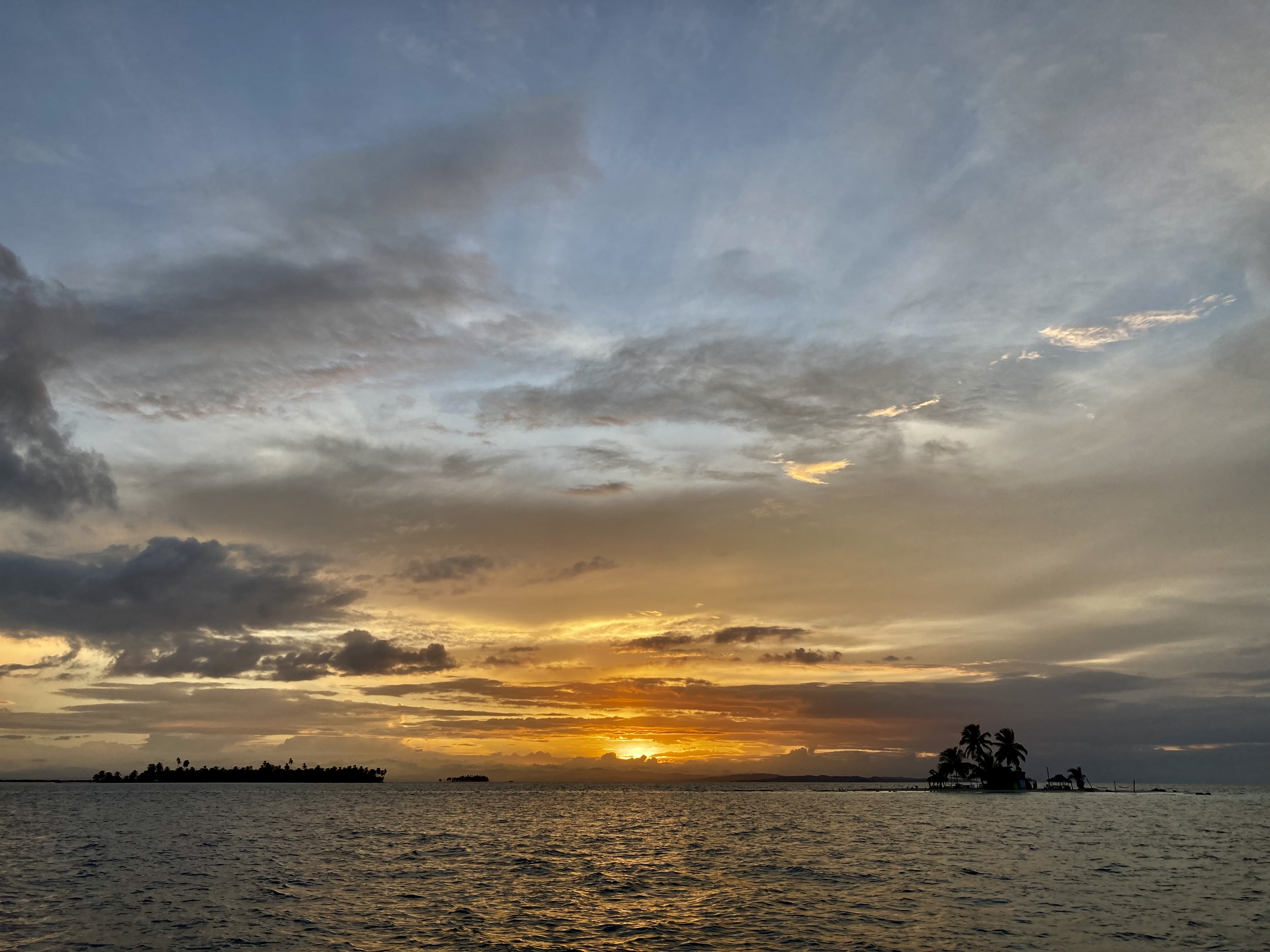


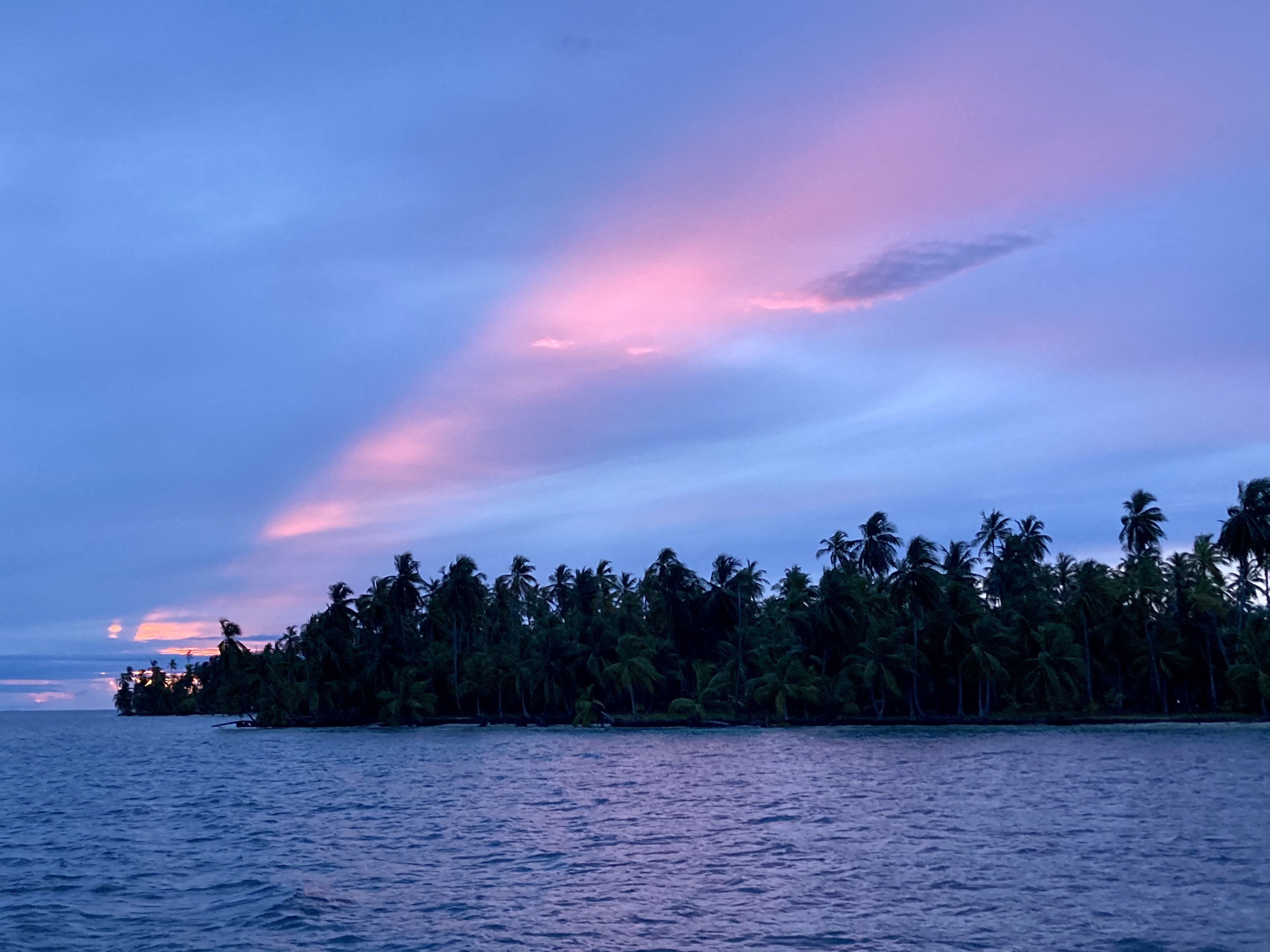
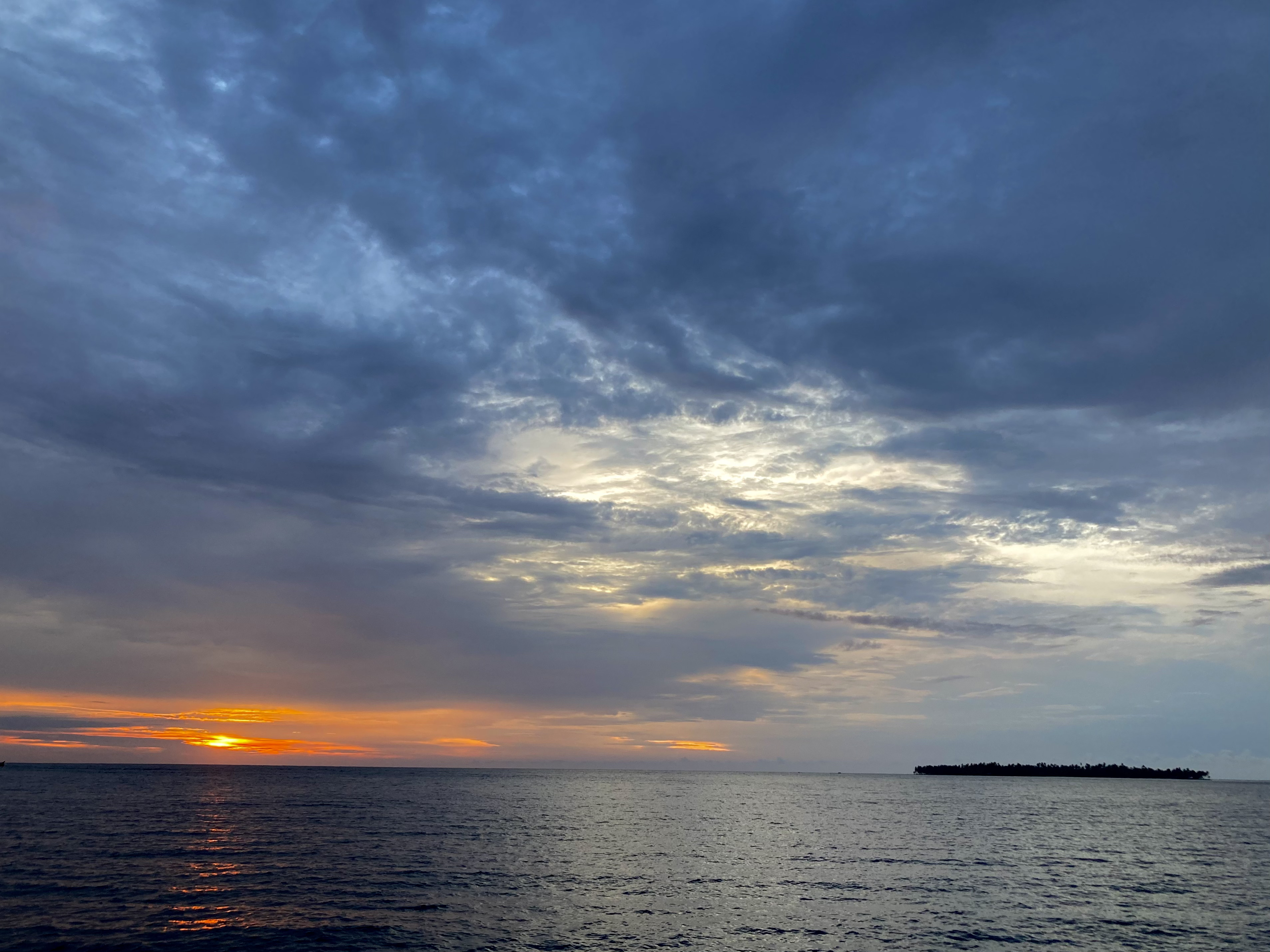
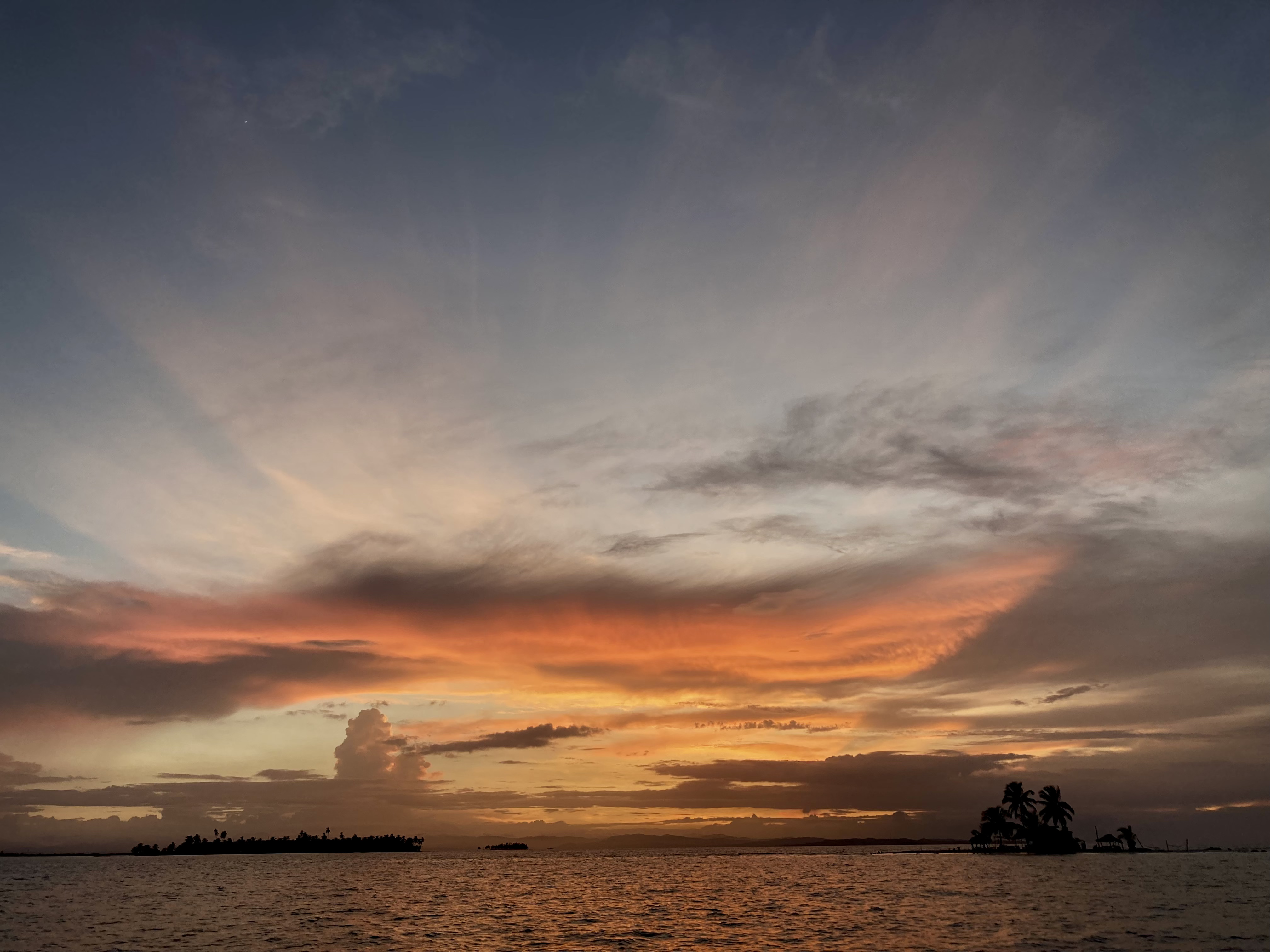

Yet, the other side of the swinging pendulum when it comes to San Blas skies are what seem like an ever present threat of nuclear scale thunder storms and squalls. When ominous dark bands of really angry looking clouds start stacking up on the horizon, one has to take notice. Sometimes they loom for hours in the distance; sometimes they give little warning. They may be short lived when they strike, but they can be vicious as well. A twenty to forty knot change of wind direction does not bode well for the ill-prepared or unaware.

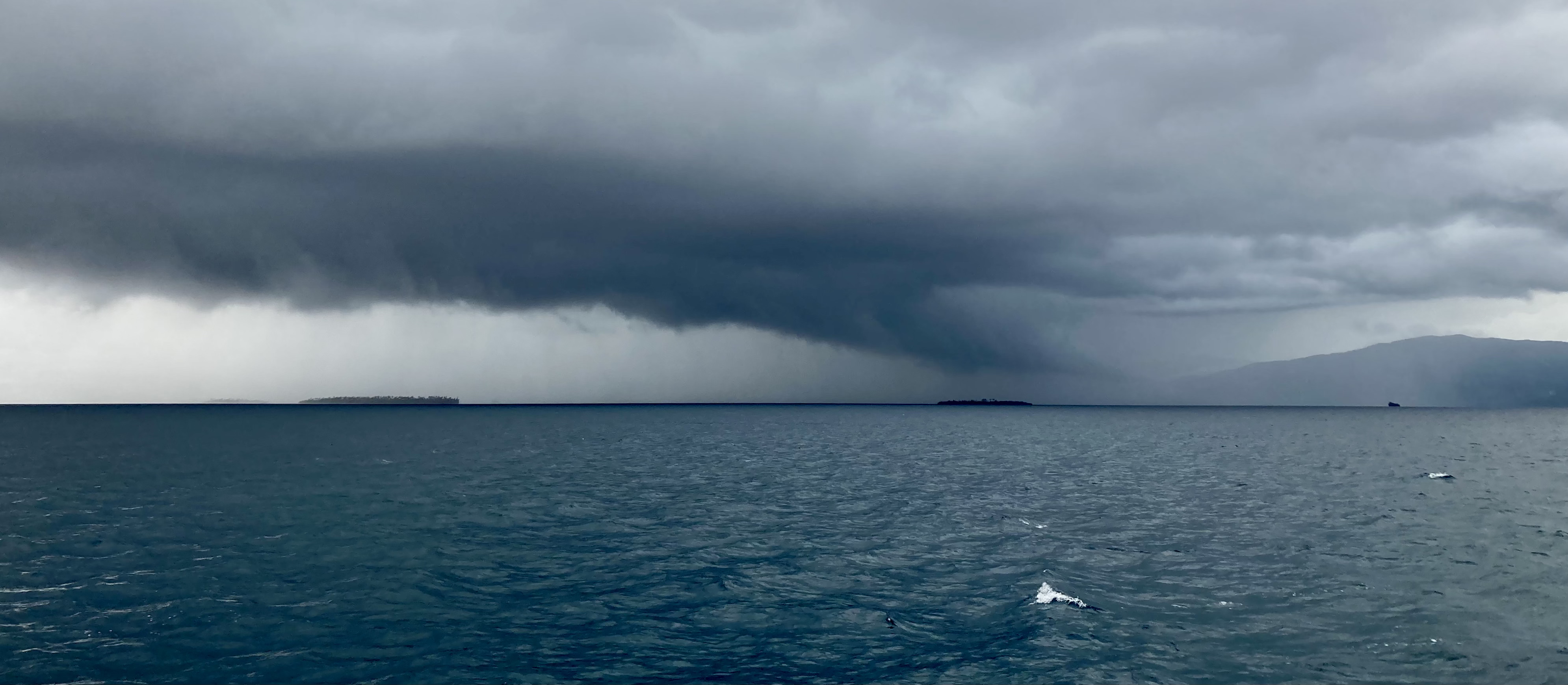
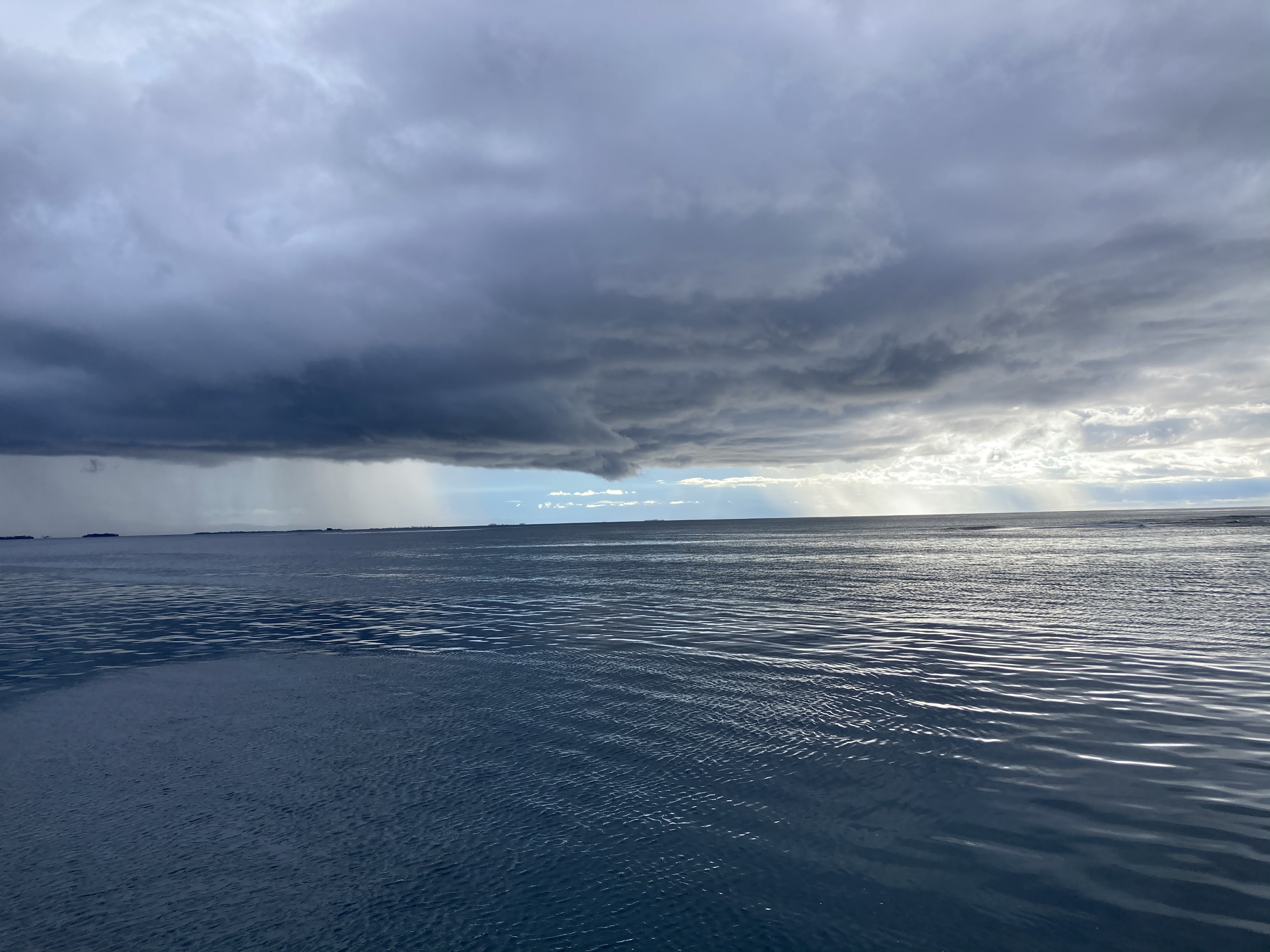
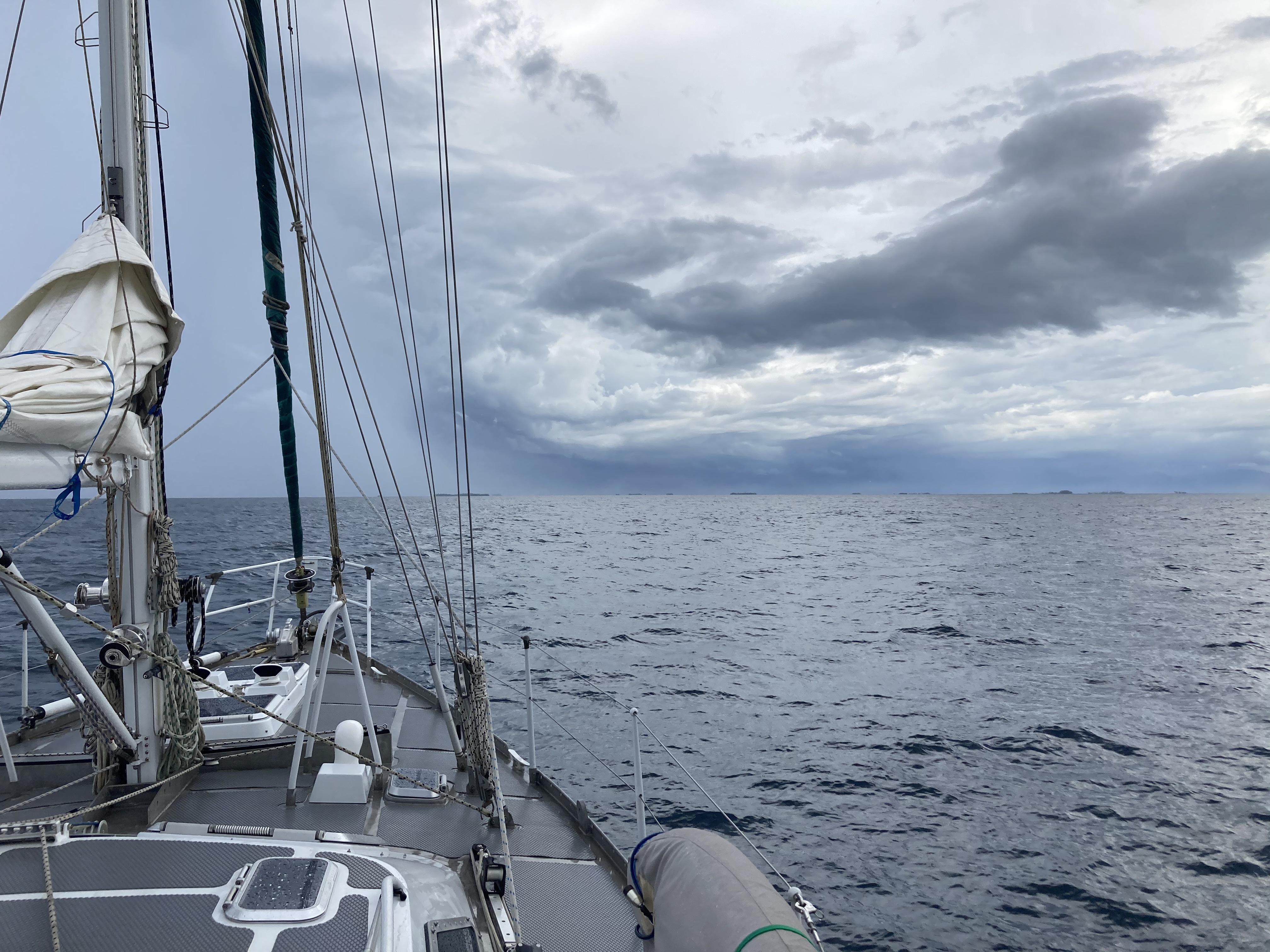

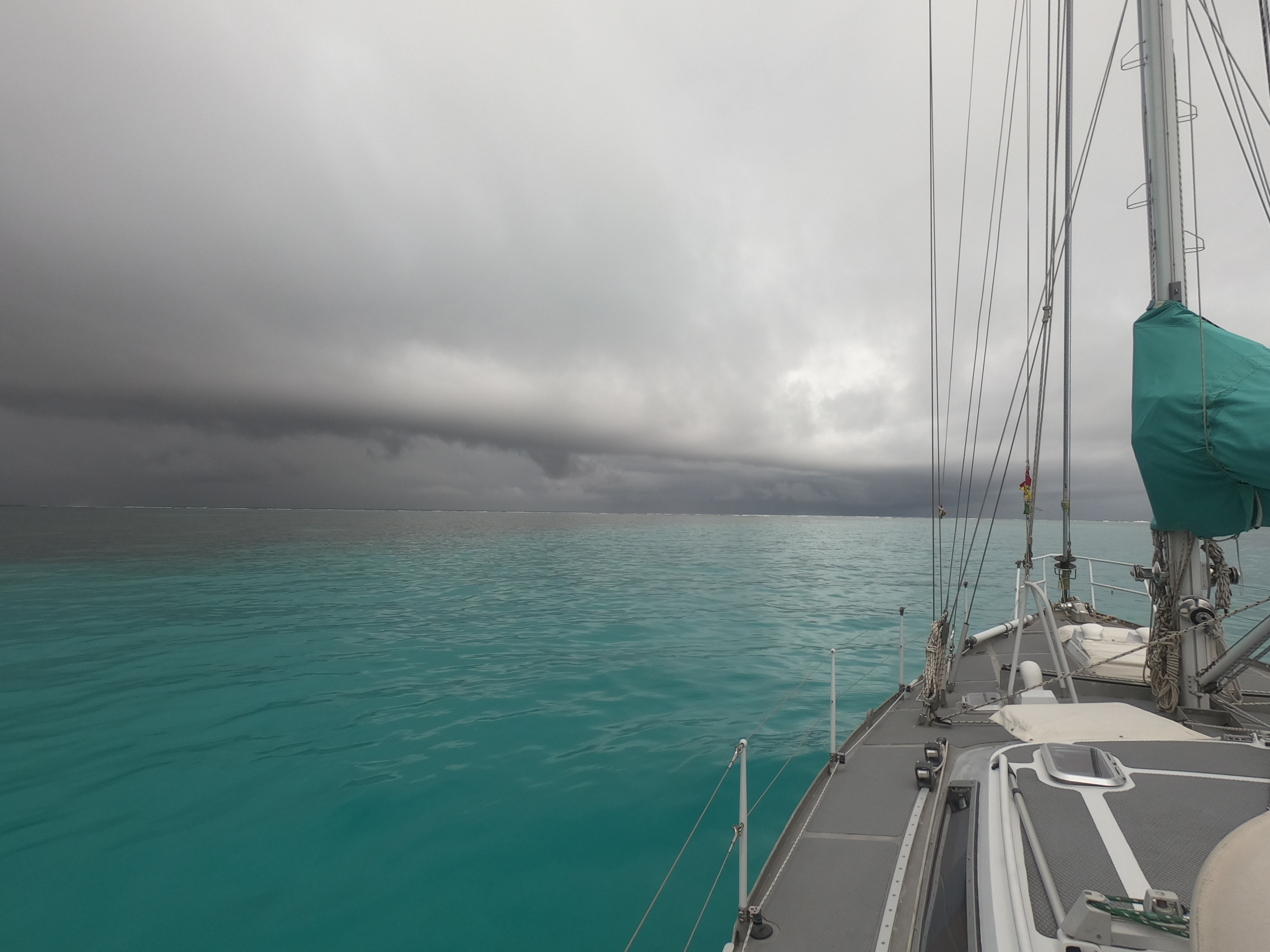

Not to mention the shit ton of rain that gets dumped down as well. You’d better be collecting rainwater, or you may just get depressed.
A waterspout… always an attention getting moment.

San Blas lightning is the stuff of legends. Intense. Loud. If you’re tucked next to trees or other boats, it’s scary. Exposed in the open, it can be TERRIFYING. Supposedly, Exit’s aluminum hull creates a natural faraday cage of protection inside the entire boat, but that would not the case on deck. Ultimately, we don’t want to directly test any electrical strike theories or hypotheses. Nearby lightning strikes may have fried electronic chips in our wind speed indicator (located at the top of the mast) as well as a chip in the autopilot at one point, but we can’t be sure. Fortunately, so far we seem to have dodged any direct hits (knock on aluminum).
Turns out, we later met a couple that had been in San Blas at nearly the same time and had also lost their own autopilot and wind speed indicator under the exact same circumstances… go figure. Also turns out, an autopilot is a massive ball ache to troubleshoot… but that’s a different story.
The following images, actually from Portobelo and outside Shelter Bay Marina during our vaccination adventure between two of our visits to San Blas, were the only times we captured anything even close to representative. They were the best we could get. To be fair, no one was willing to go on deck when things got really shitty.


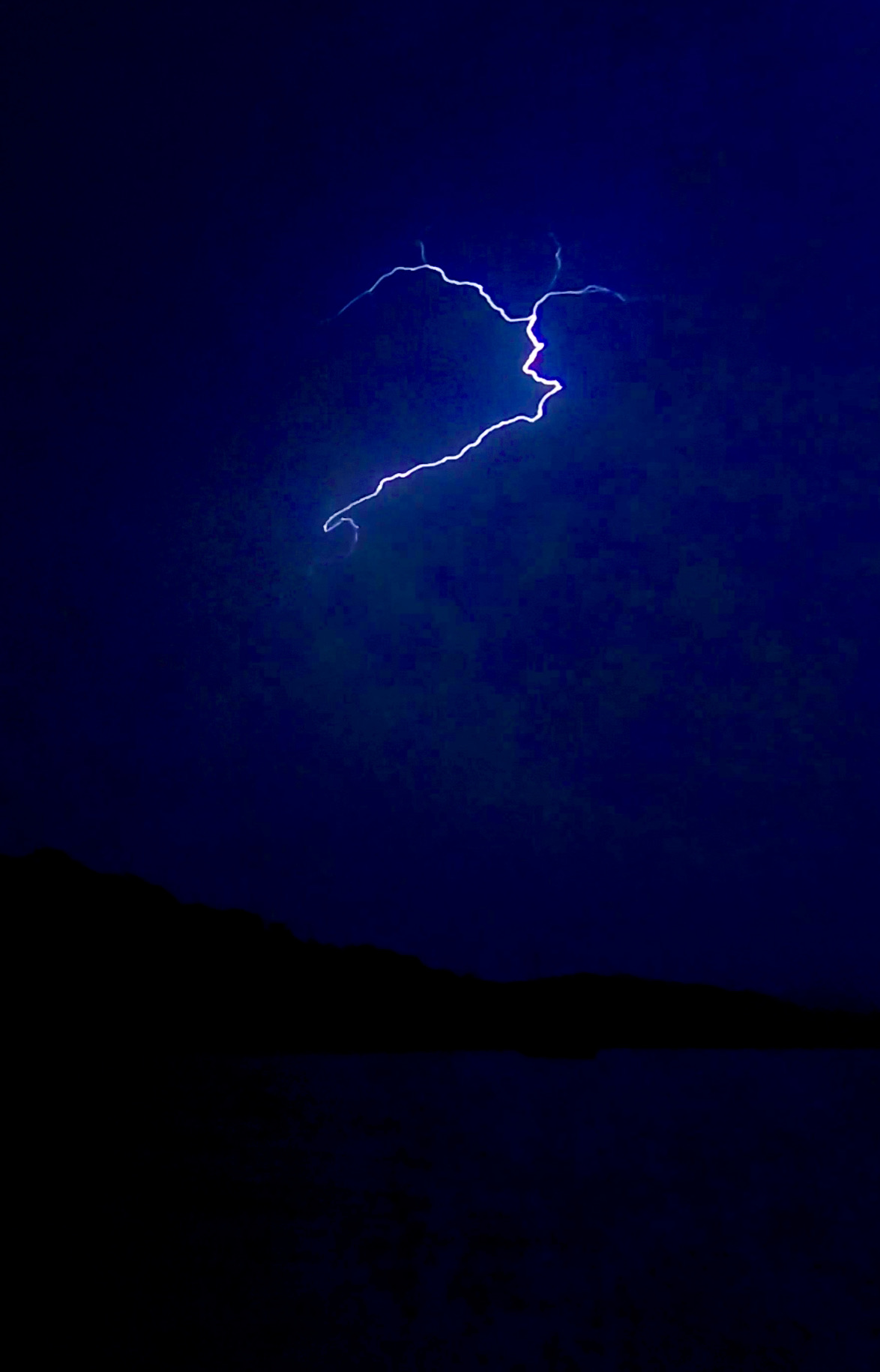

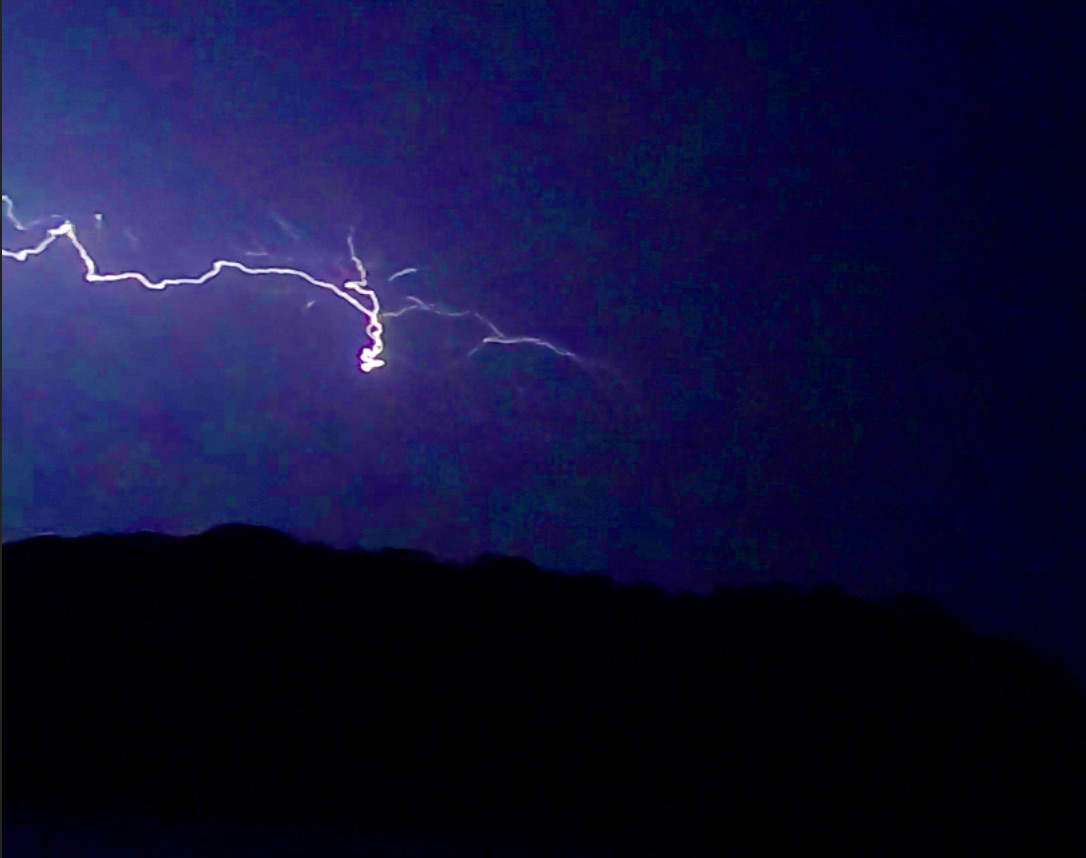
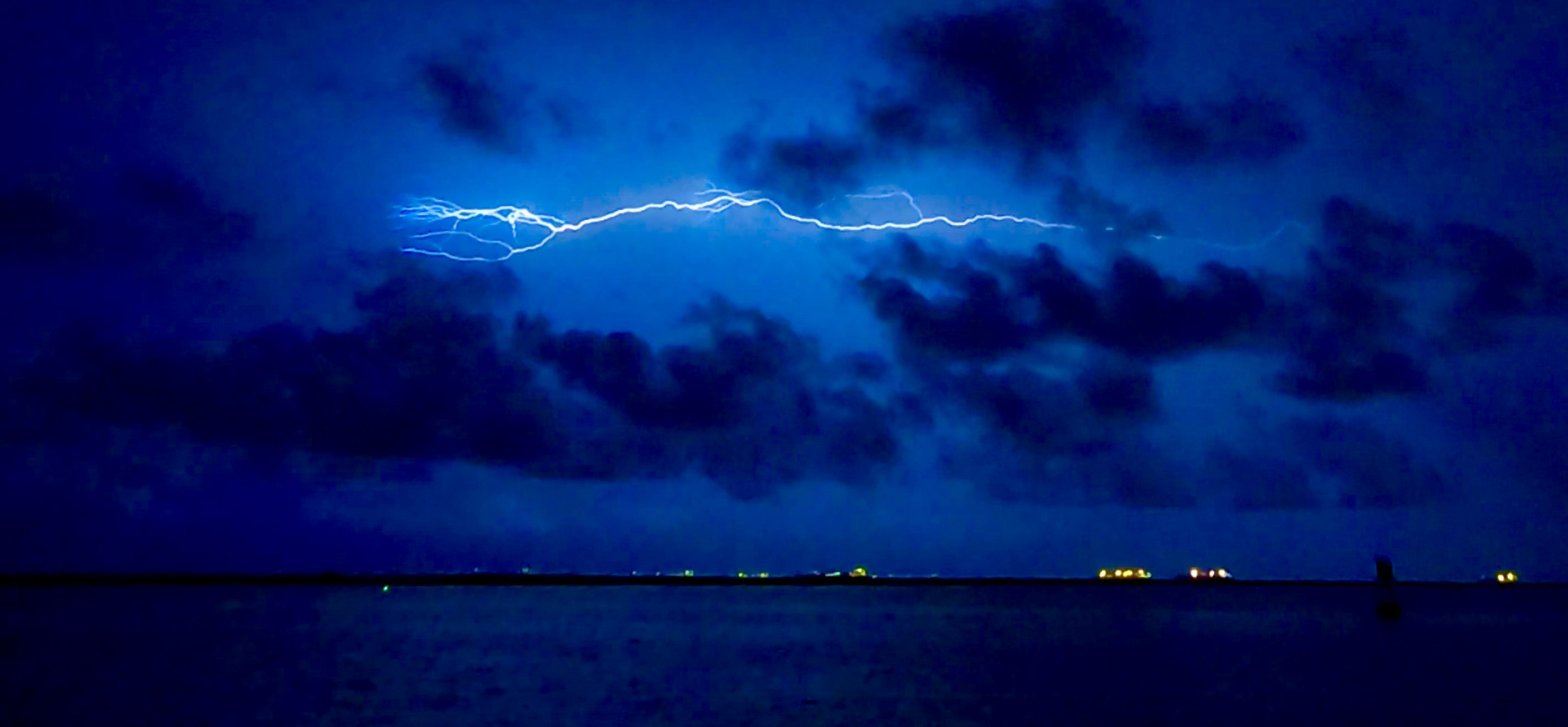

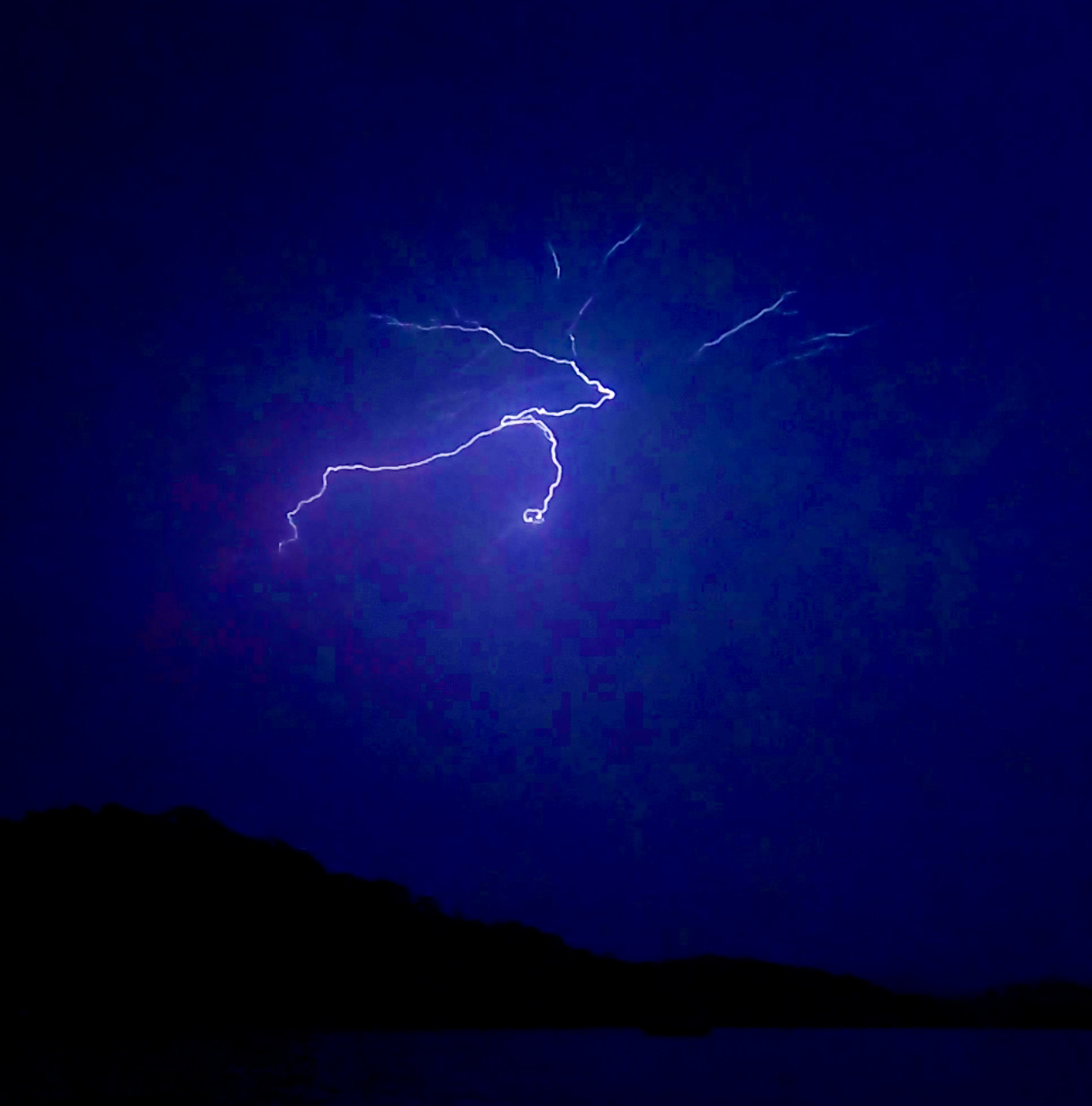
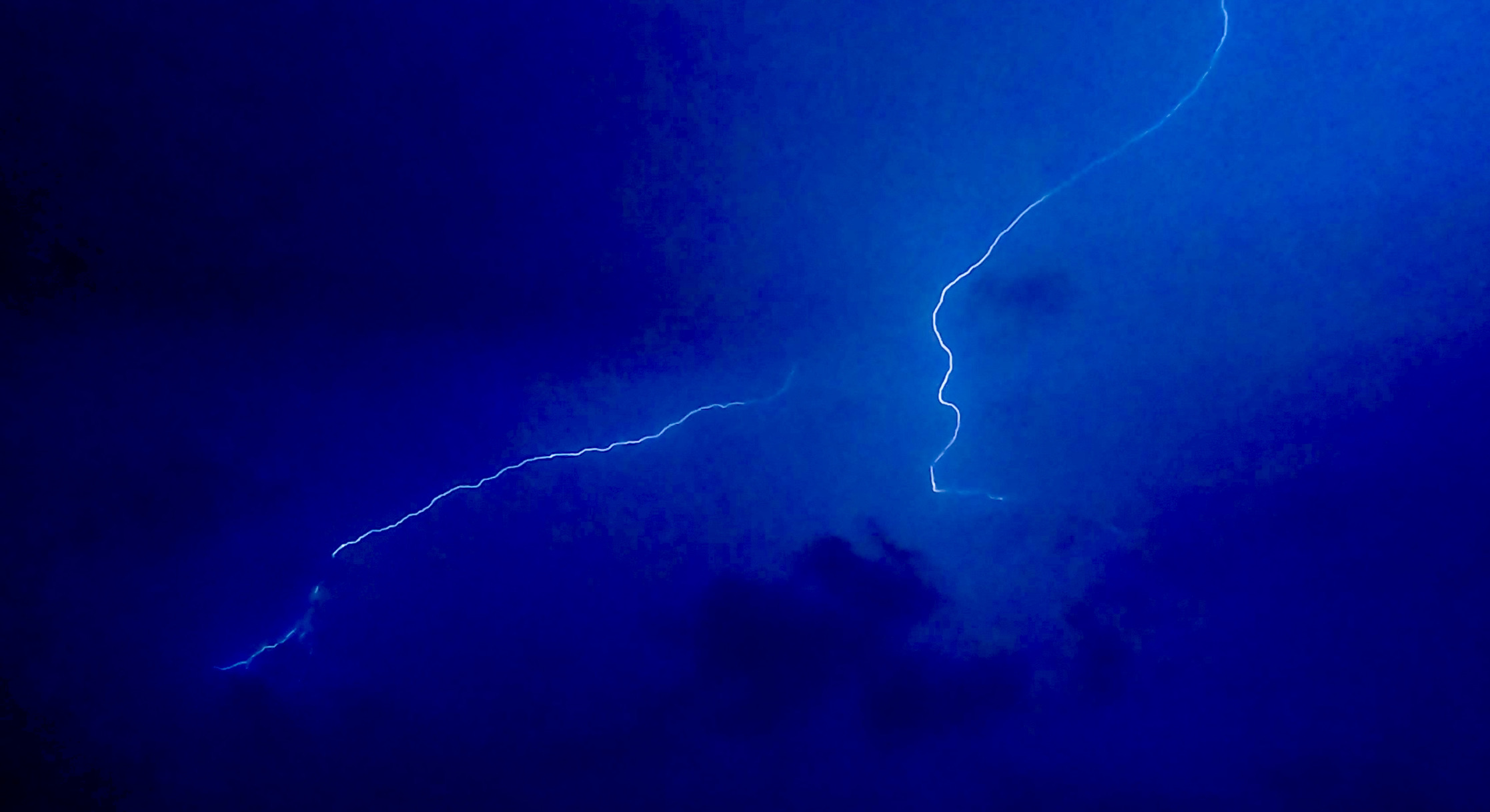
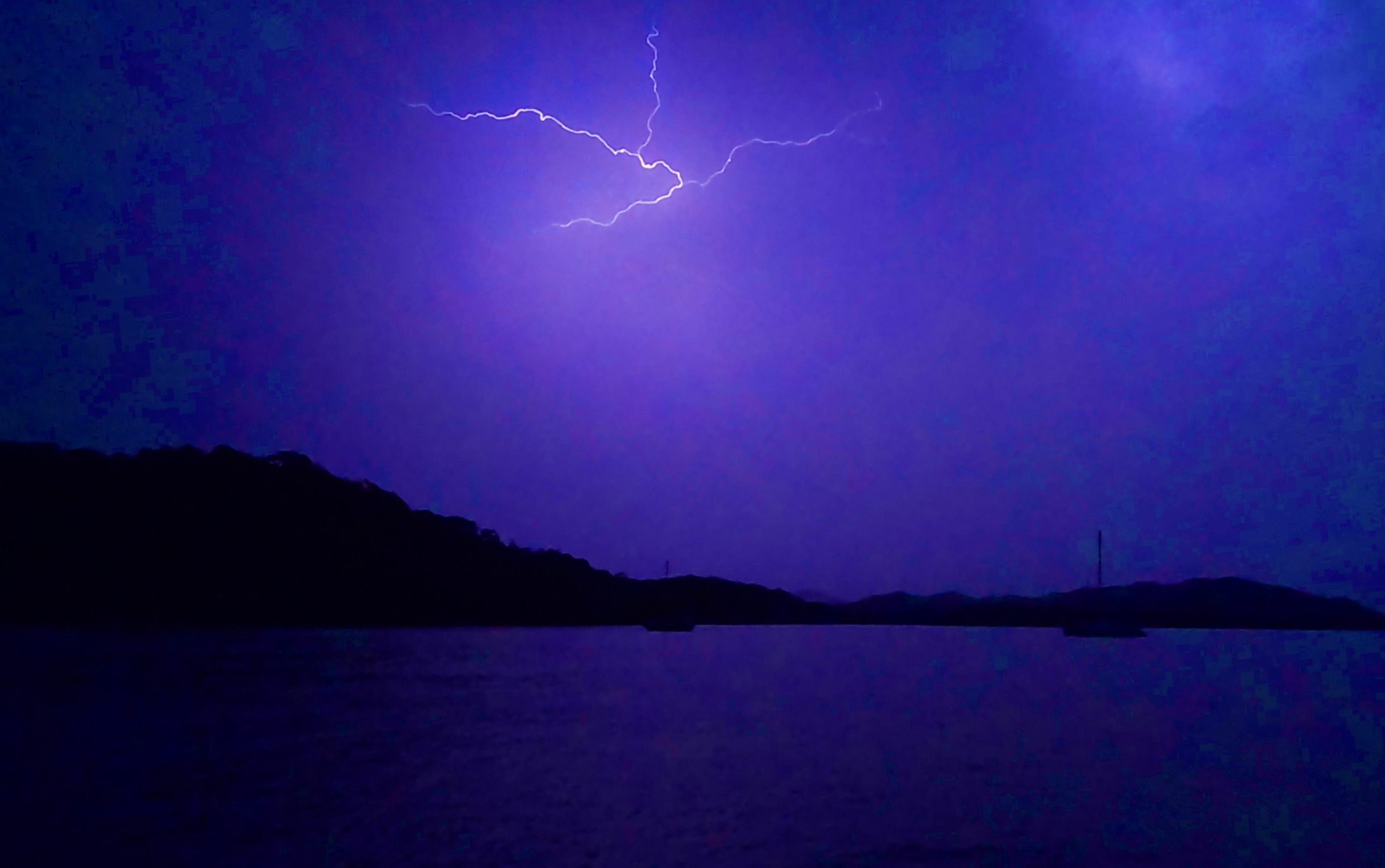
It’s impossible to adequately express the intensity from inside the cockpit.
From close… to closer… to right above us… and damn near ground zero…
Underwater, San Blas represents the best we have seen in Panama. While overfishing is always the inevitable black stain (there are never many big fish anywhere anymore), the health of some of the reefs we visited in San Blas were phenomenal. Varieties, coverage, and maturity of hard and soft corals, sponges, etc. could be really impressive. Seeing large animals like dolphins, nurse sharks, eagle rays and stingrays, and barracuda is always a good sign.
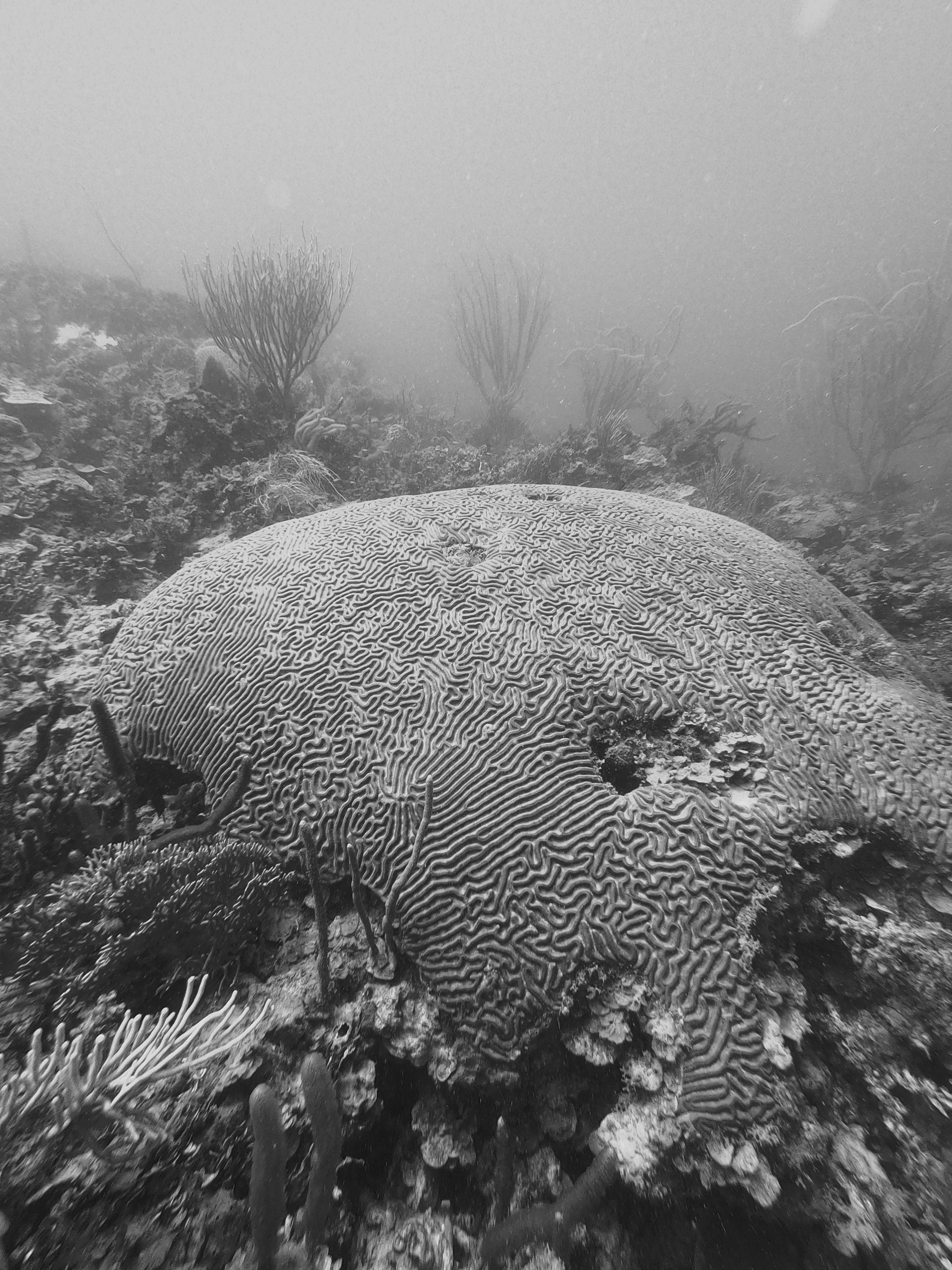
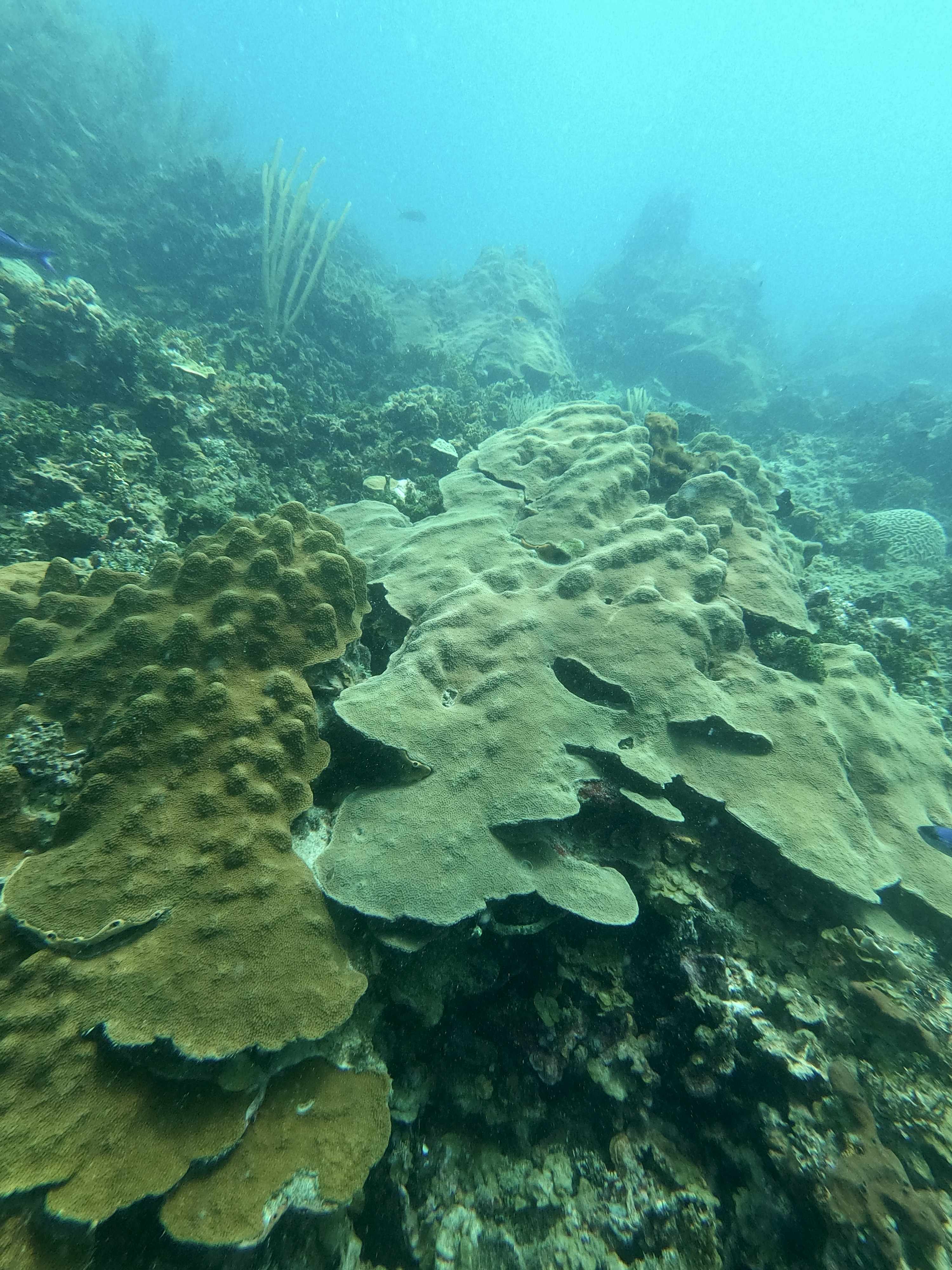

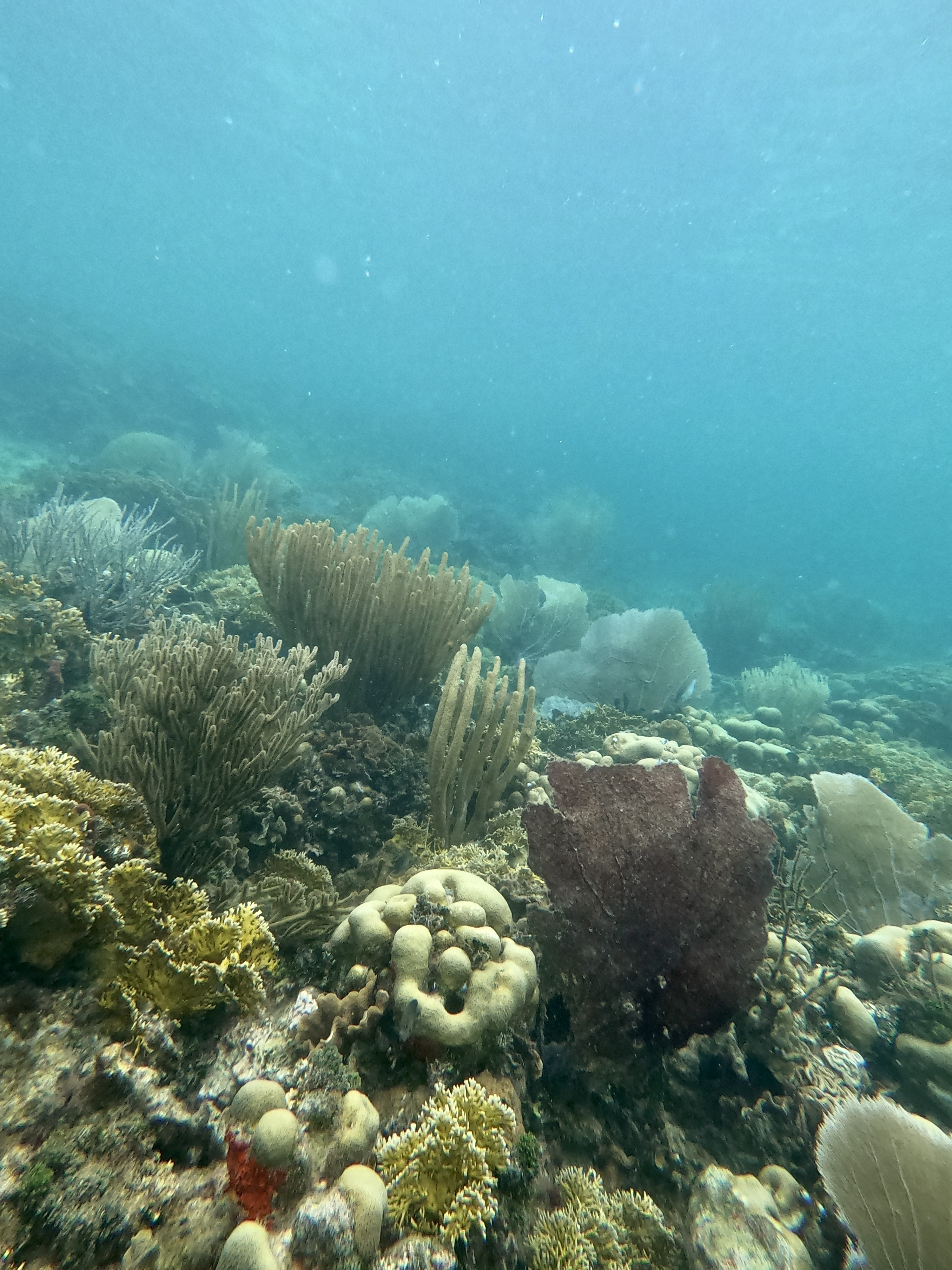


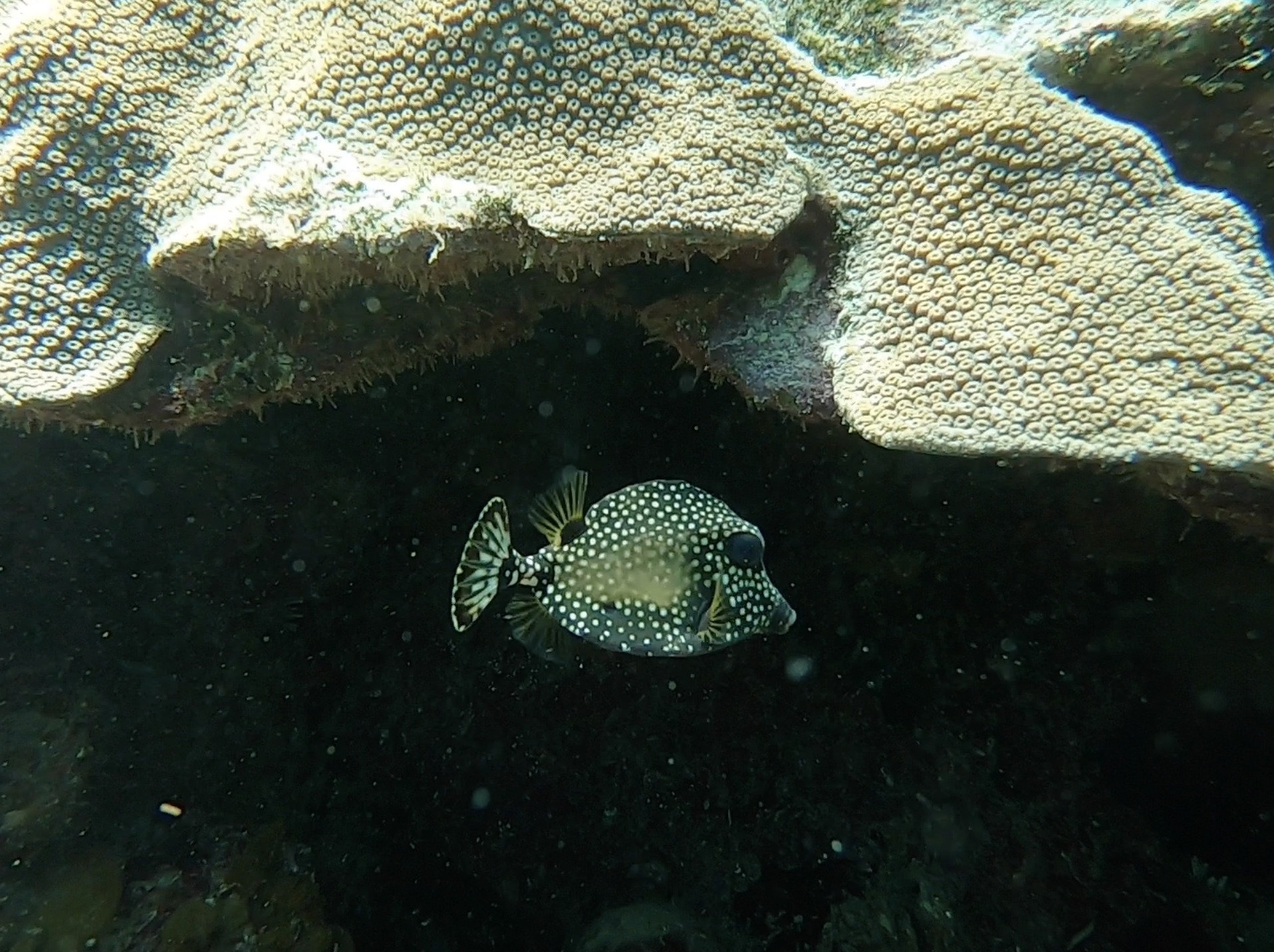
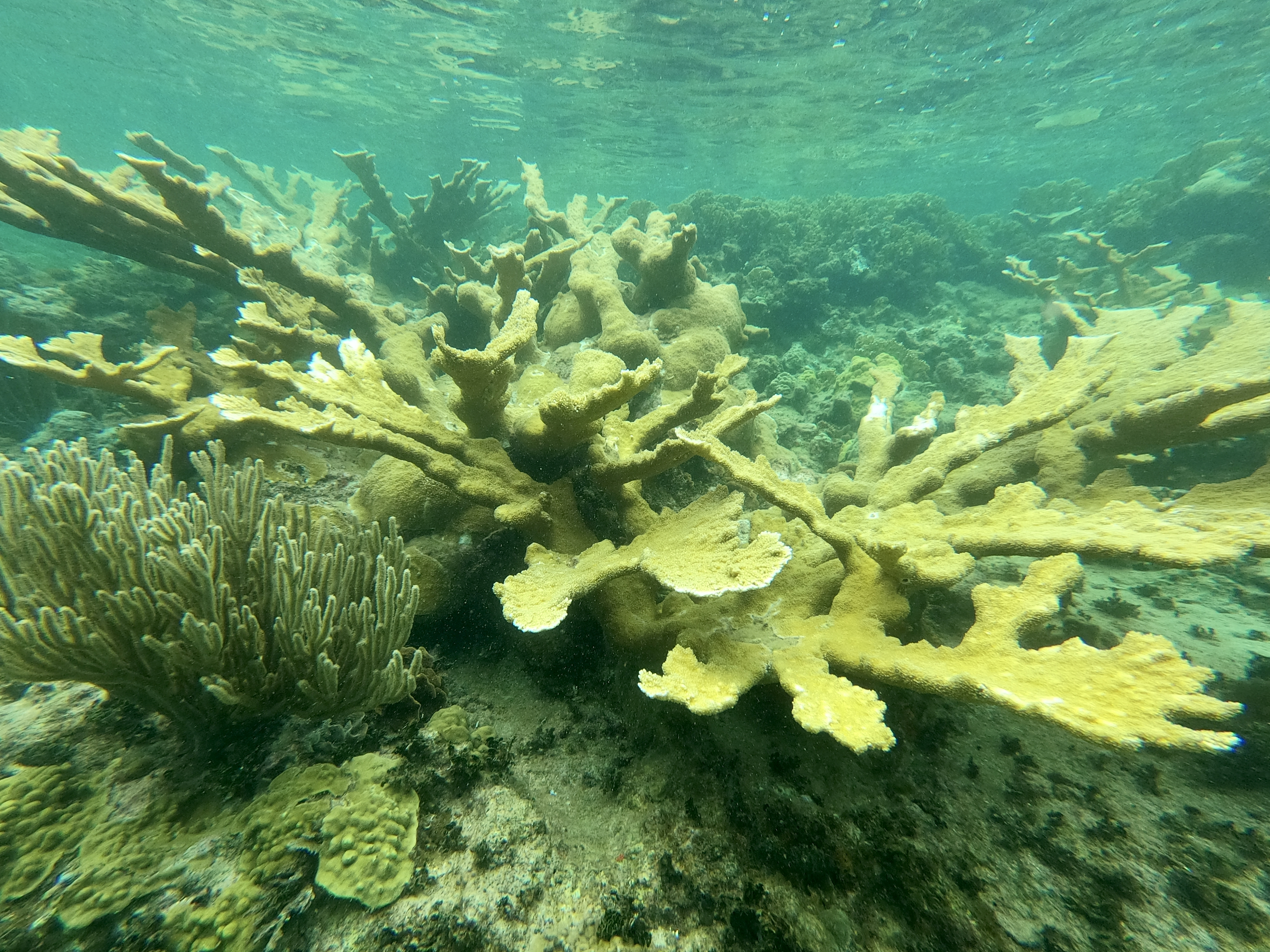



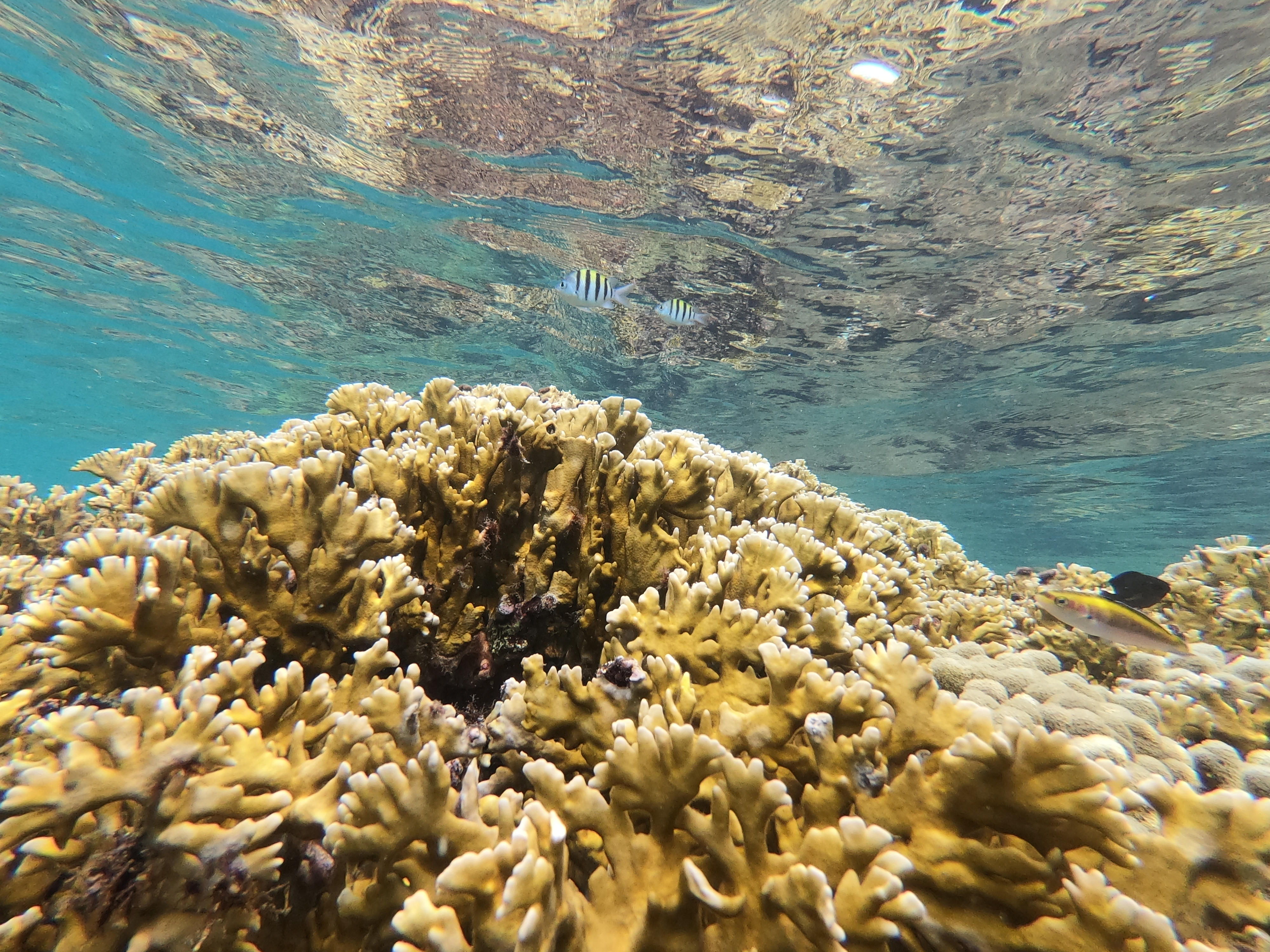

One of San Blas’ biggest problems may not exist underwater but, rather, above water. With the rate of global oceans rising, there may be very little time before the islands of Guna Yala disappear entirely. It seemed rare to have more than a foot of dry land above the shoreline.
RANDOM MOMENTS:
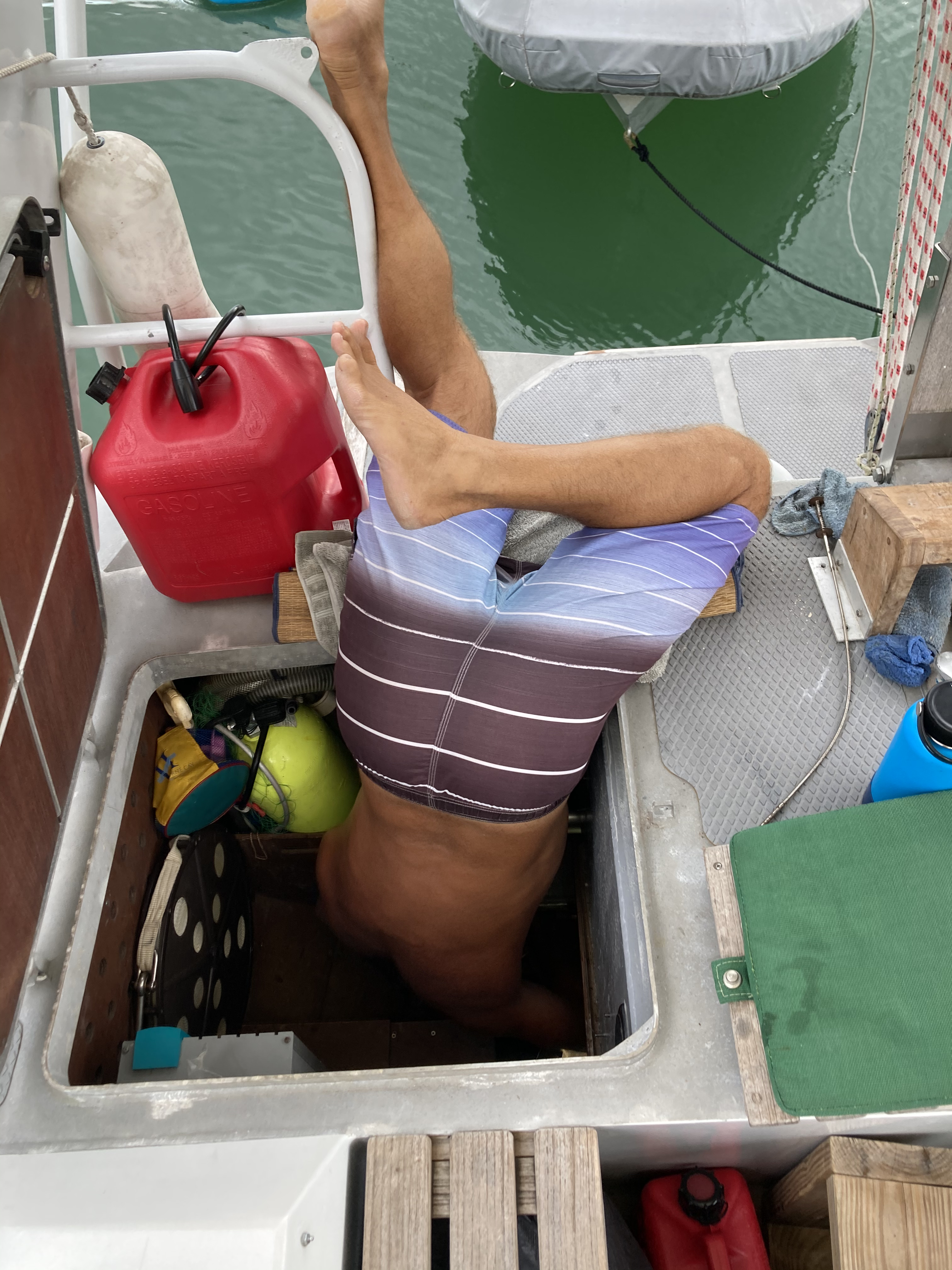

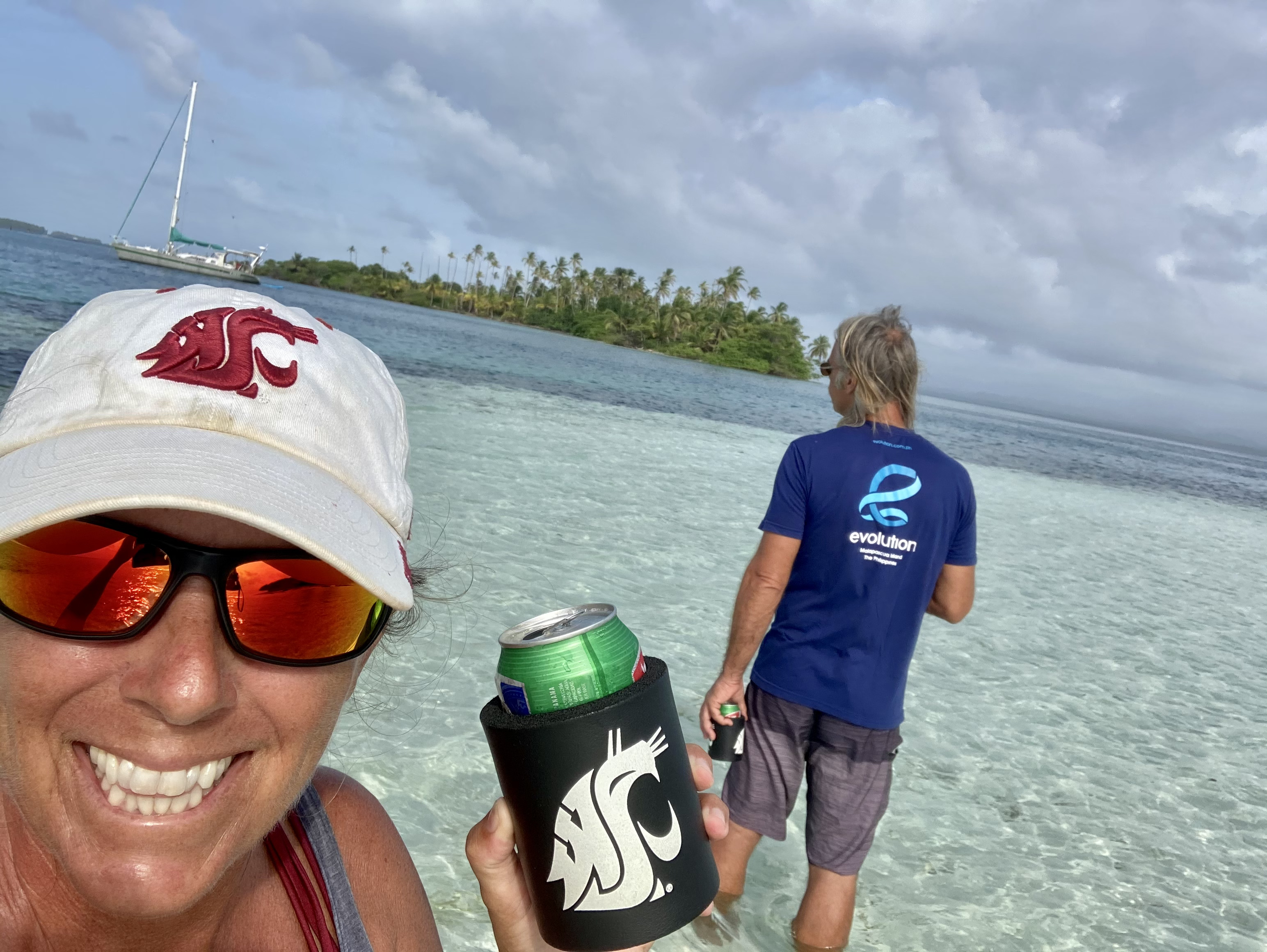

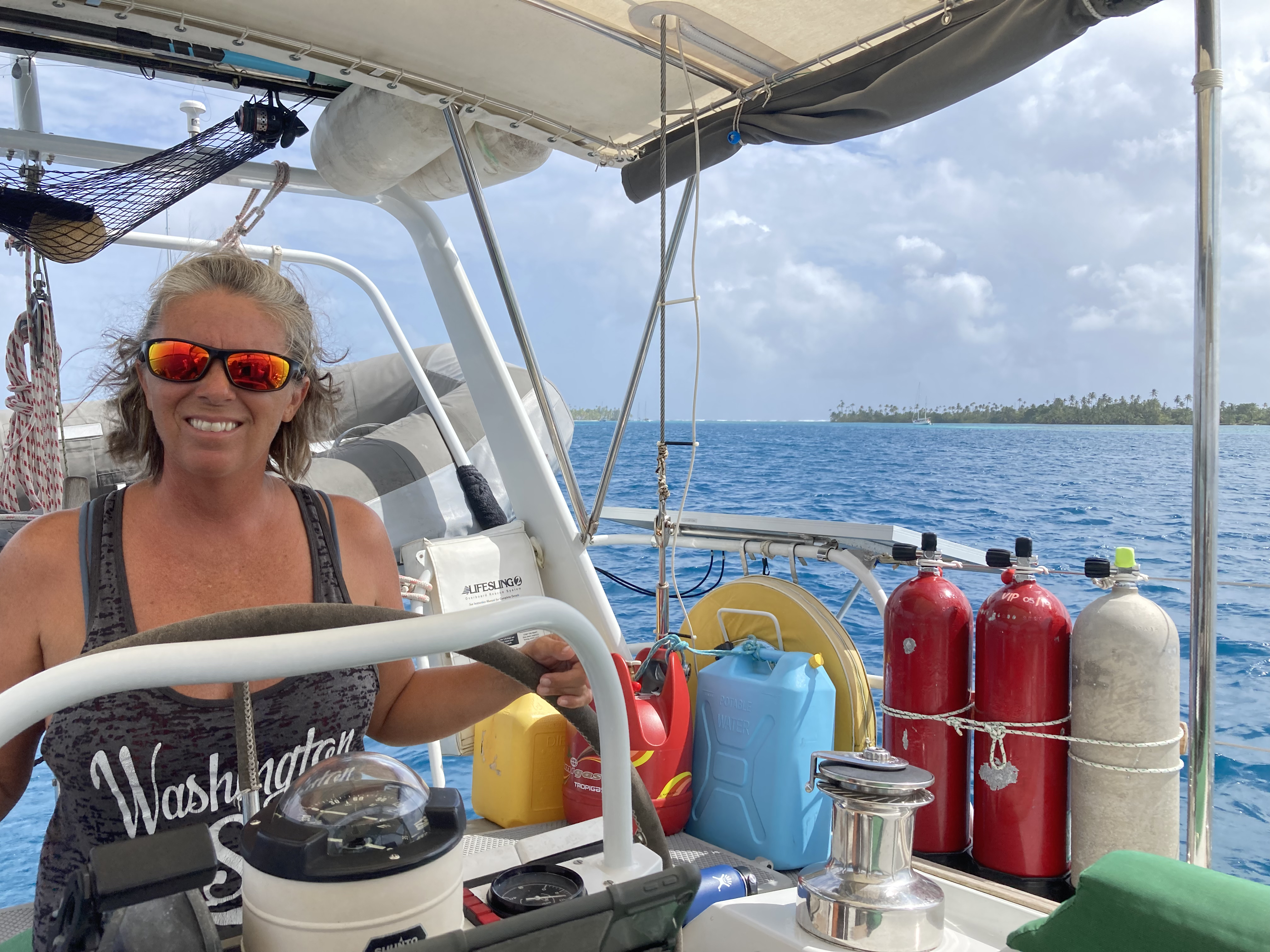

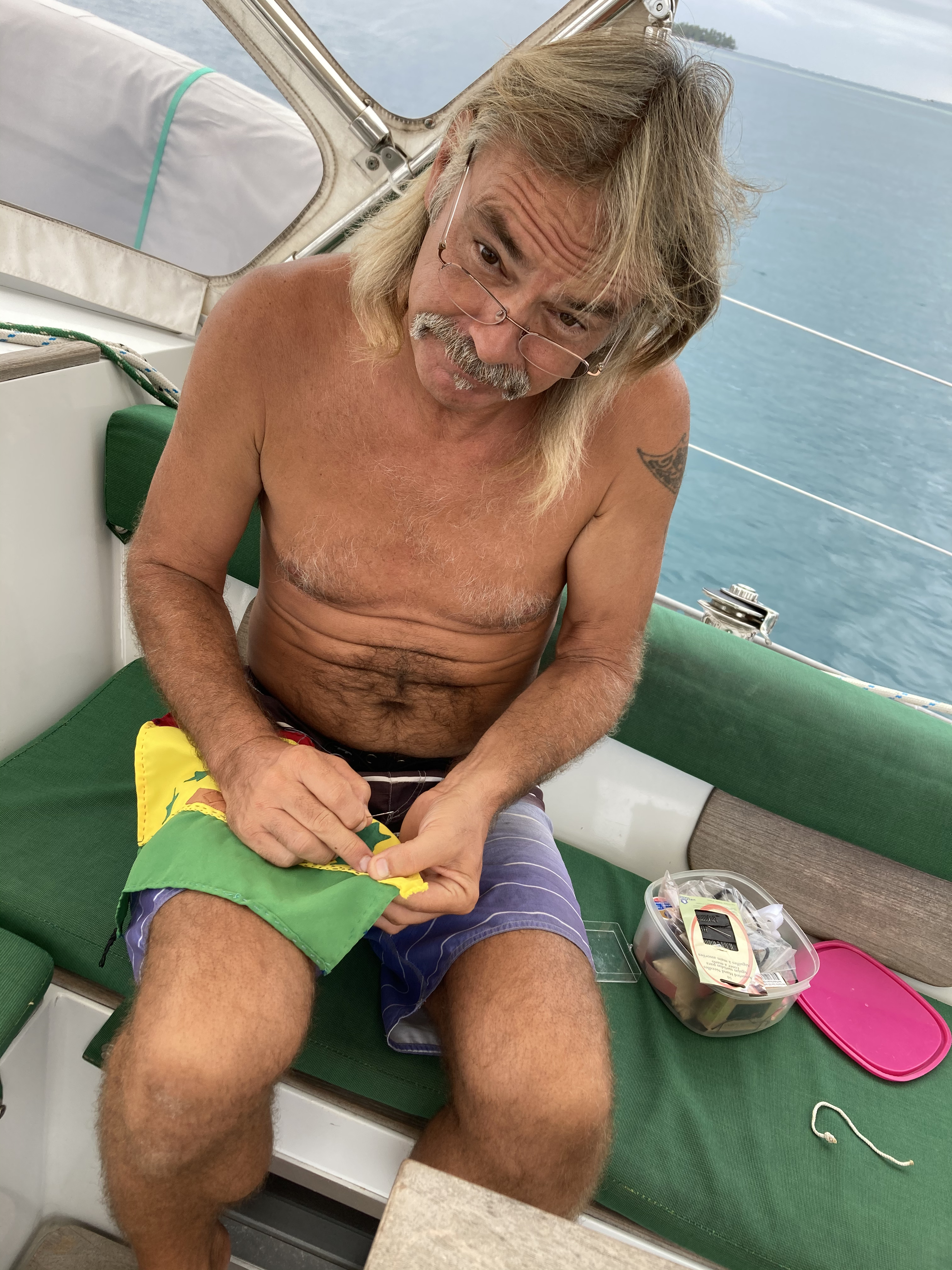


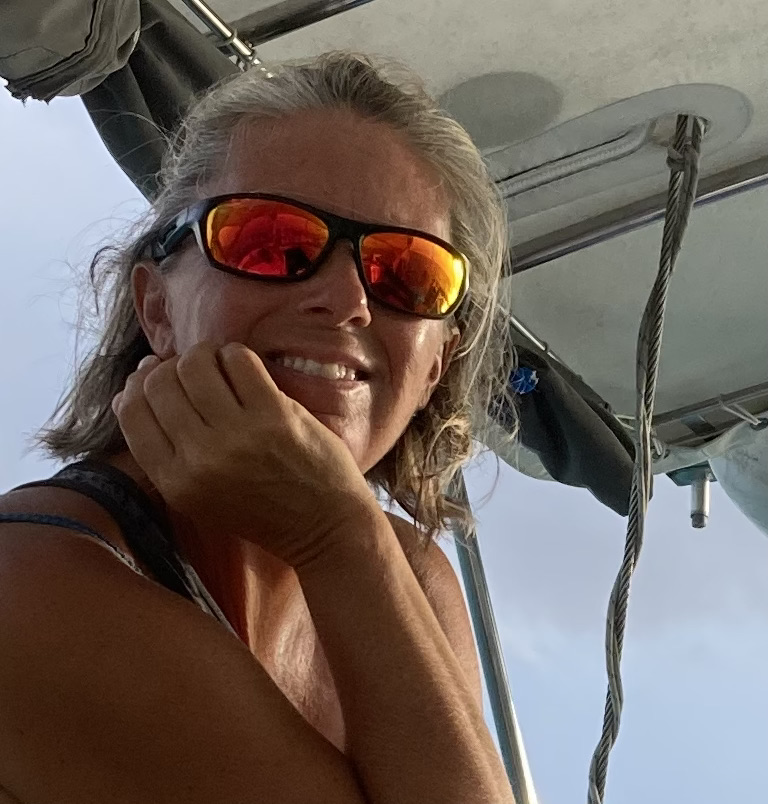
At some point during our earlier haul out at Shelter Bay Marina we had a visitor arrive on Exit; our first resident gekko lizard. We adopted the name Lizzy… obvious, if not very creative. Every now and then we would see Lizzy out and about, stalking insects here or there, and then she’d go dark again. Eventually we didn’t see Lizzy for quite some time. And then we saw a Gekko that looked kind of like Lizzy but we couldn’t be sure… hence the new name Issy (as in is he Lizzy or not). Eventually Izzy was discovered in a not so alive state. Then, to our delight, a new tiny gekko showed up shortly afterward. As this little guy was so small, and we now seemed to be much leaner in the insect department, we dubbed the wee lad Busy, because he would have to stay busy hunting constantly just to avoid starving. Alas, it has been weeks since Busy was last seen…
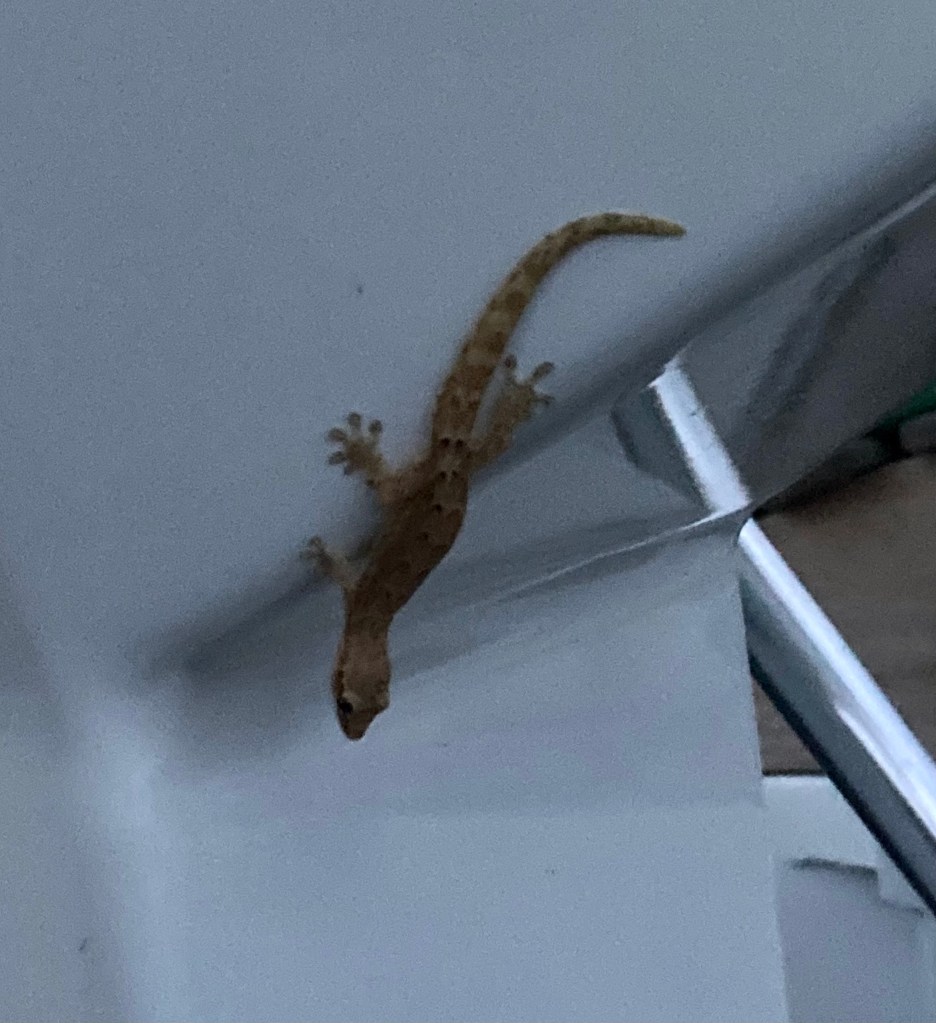


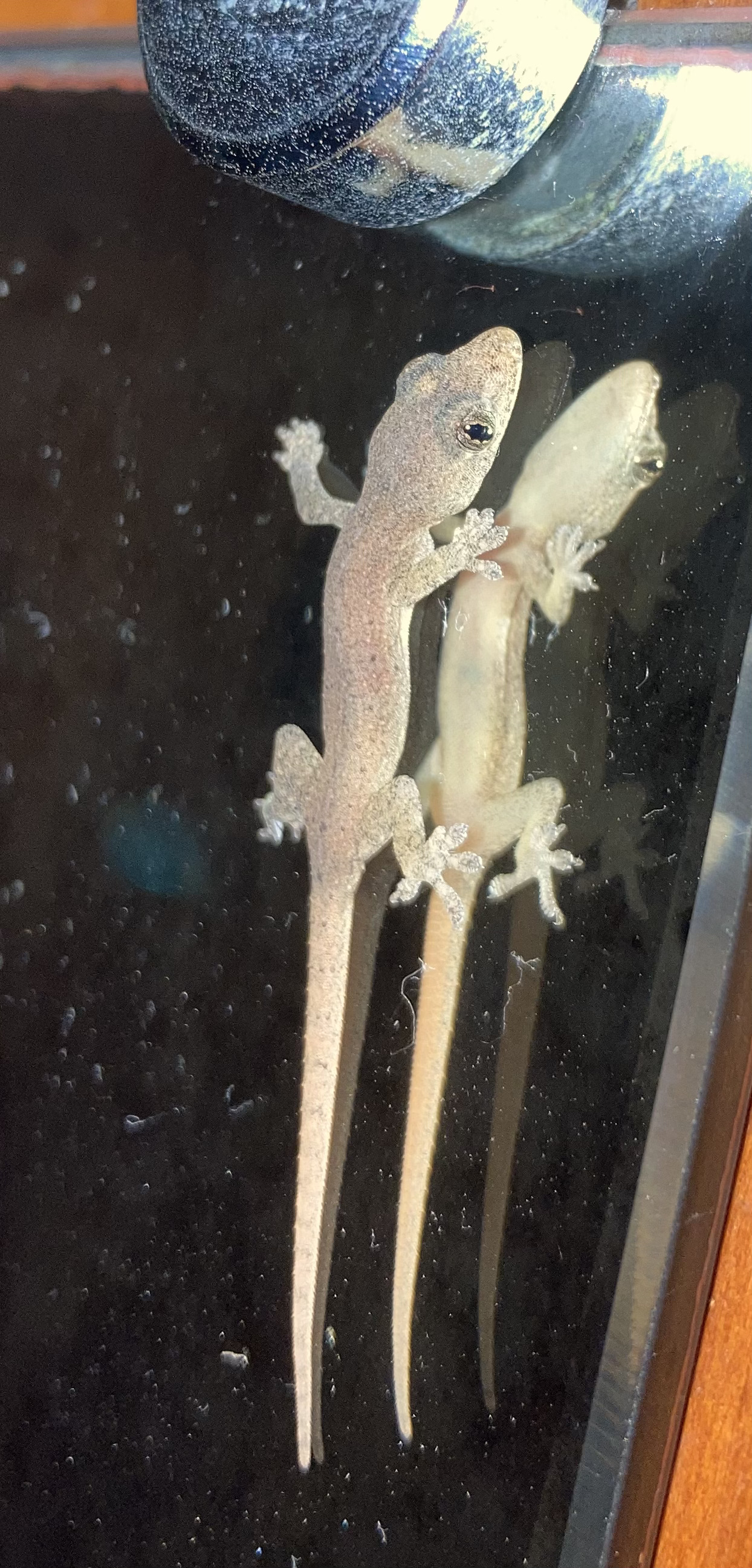
Our final destination in San Blas became Cayos Holandes. It was nice, but the actual appearance was night and day different from what we expected, given the exotic looking aerial footage in the Bauhaus book. We found some places to explore, and even got to spend time with our friend Craig (before on S/V Samba Pa Ti and now the proud owner and captain of S/V Russula). After first meeting Craig in Guanaja of the Bay Islands, Honduras, we got to celebrate his birthday with him in Rio Dulce , Guatemala in 2019 and now strangely enough another birthday reunion two years later in Panama!


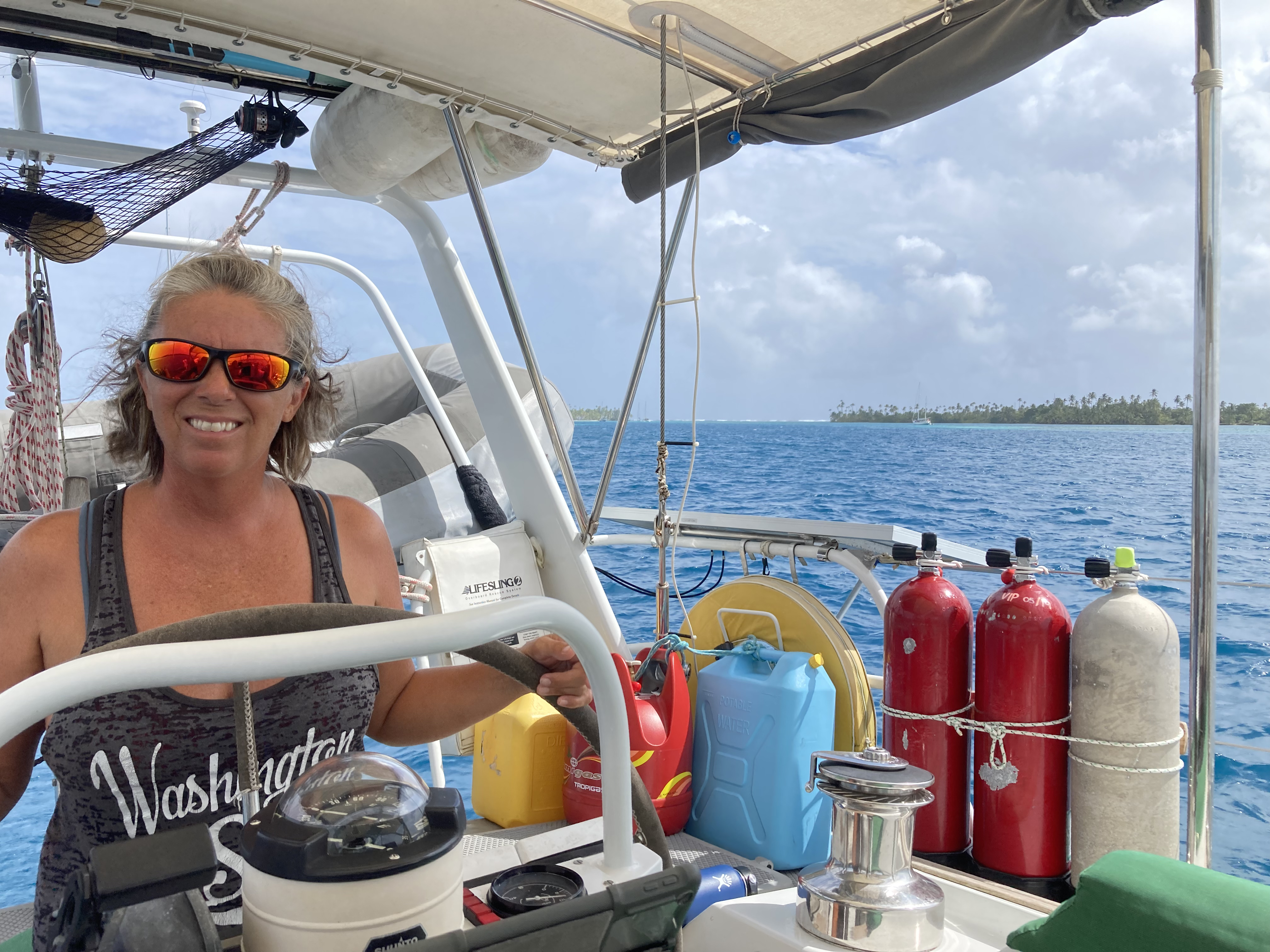
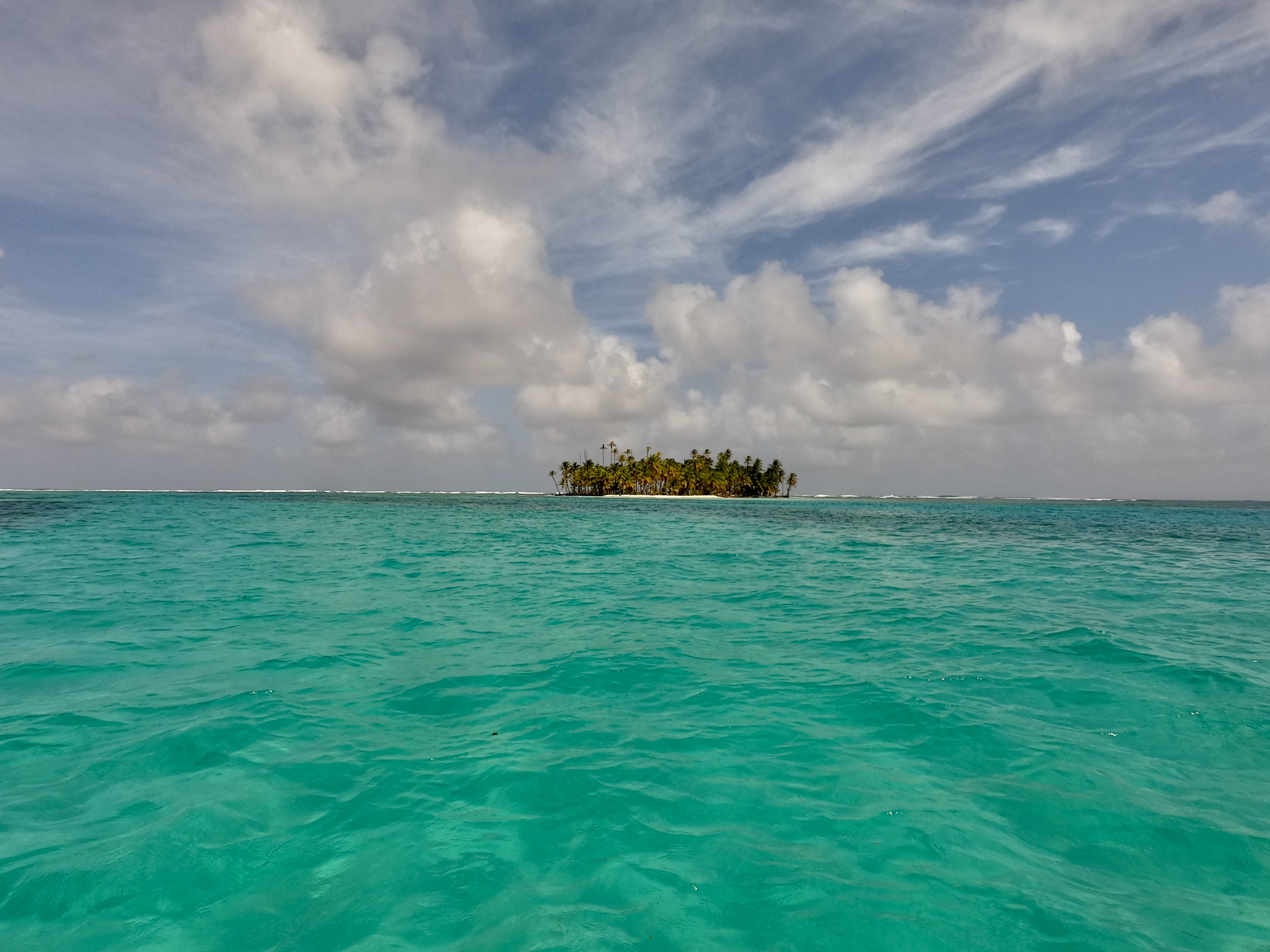


Our last week in San Blas, including Christmas, was spent at anchor in an isolated area in the center of Cayos Holandes known as Los Bajos Lagoon.

Stunning would be an understatement.
Except to those with local knowledge, the area was no man’s land until it was actually charted by Eric Bauhaus for his book fairly recently. Surrounded by reefs, rocks and shoals, the interior area of Los Bajos Lagoon is accessible to sailboats through only two channels (one which is still unmarked on charts). Once through the cut, a labyrinth of more rocks, reefs, and shoals hide numerous spots where it is possible to anchor. Good light, minimal winds, and a bit of a swagger are required to venture inside.
On the Navionics chart, the beige areas are land above water, or the nearest islands. Everything in green is charted as rock, reef, or shoaling or not charted at all and the darker blue is too shallow to go into. That leaves the white bits as deepest depths and lighter blue in between… and watch out for uncharted random rocks and reefs that can be interspersed in there as well.

A literal hazardous maze of rock to navigate through, almost no cell reception, no dry sandy beaches to lay on — not the easiest sell for families, buddy boats, and snugglers… perfect.
On the far end we eventually found an unbelievable patch of white sand that created surreal shades of blue water, the likes of which we hadn’t seen since the Bahamas, or Cayman Islands, or French Polynesia… we had found our anchorage.
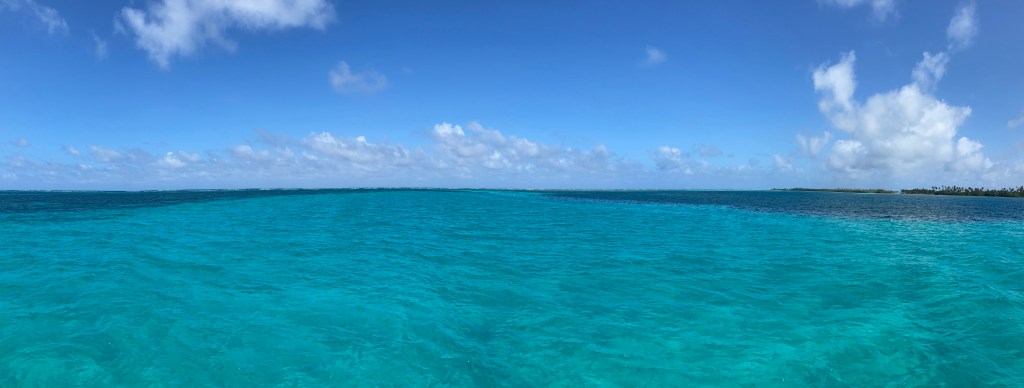
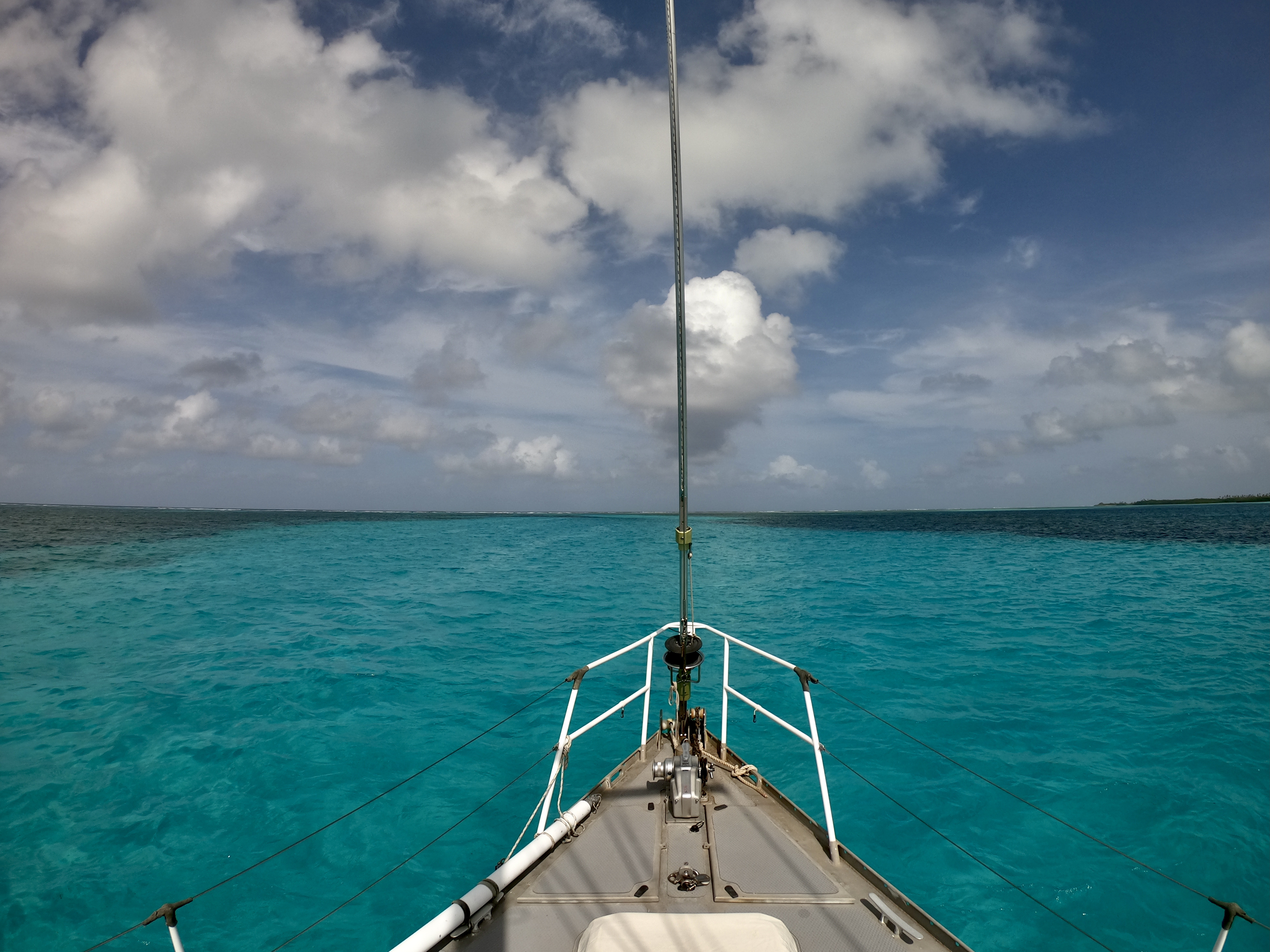

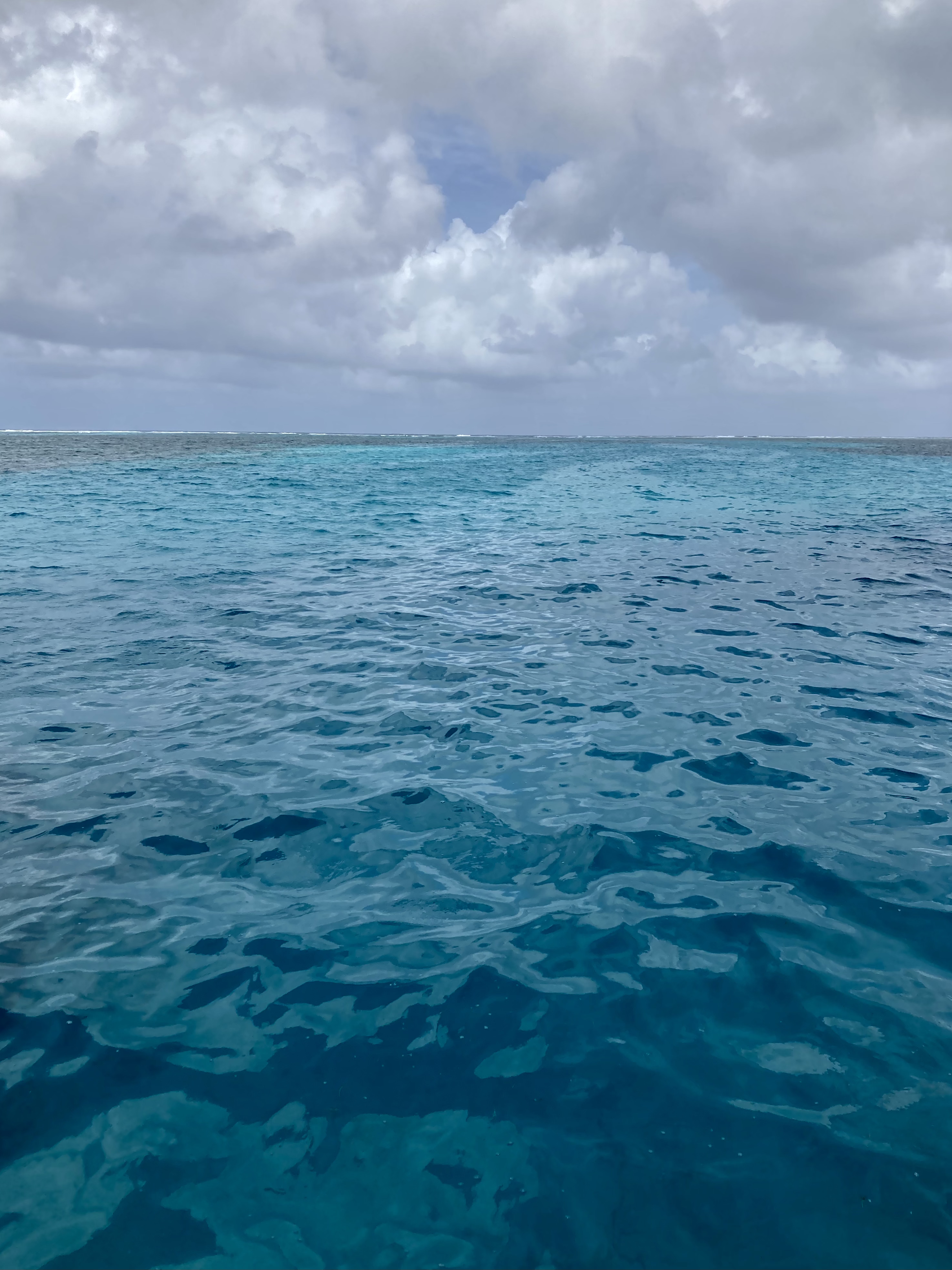
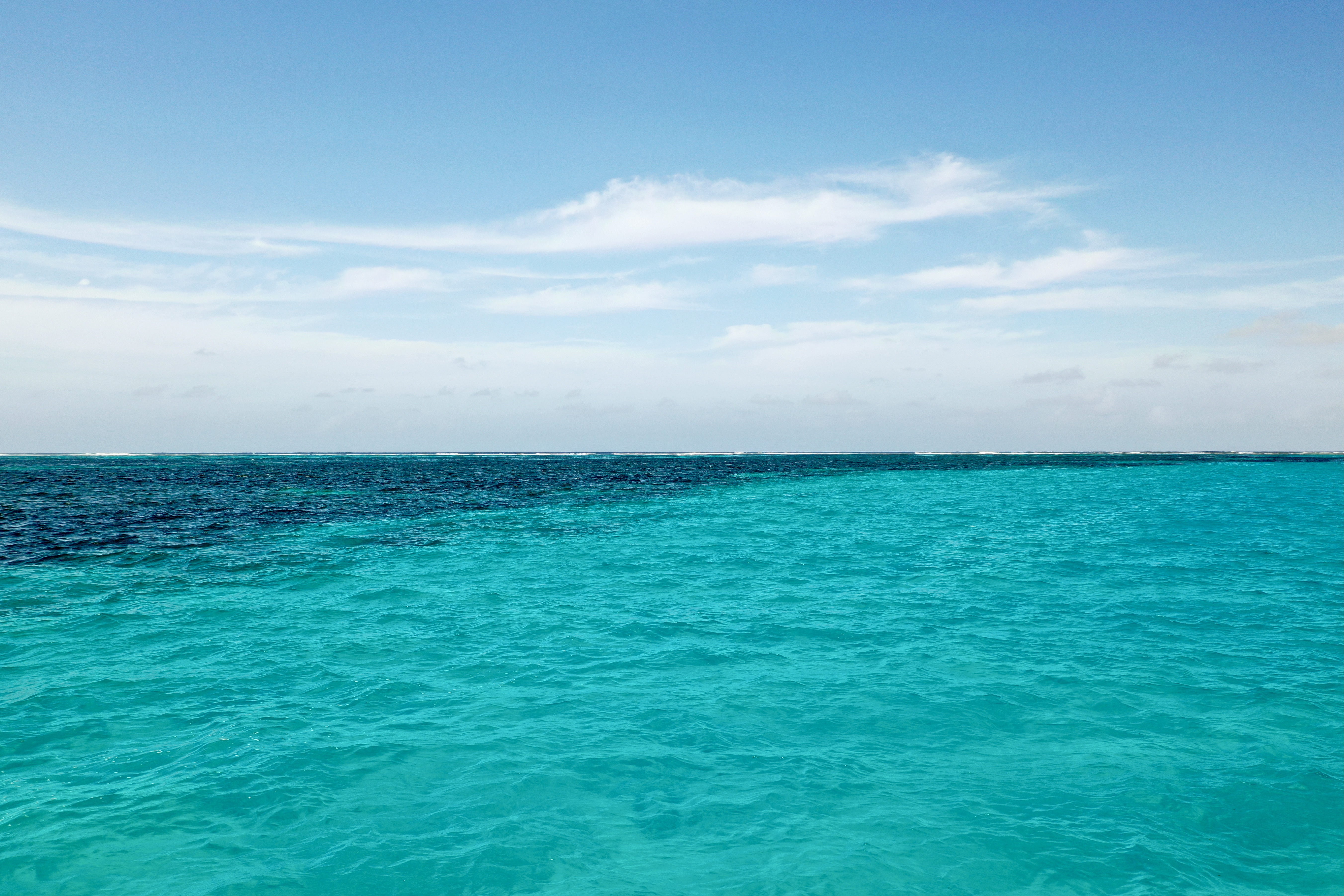

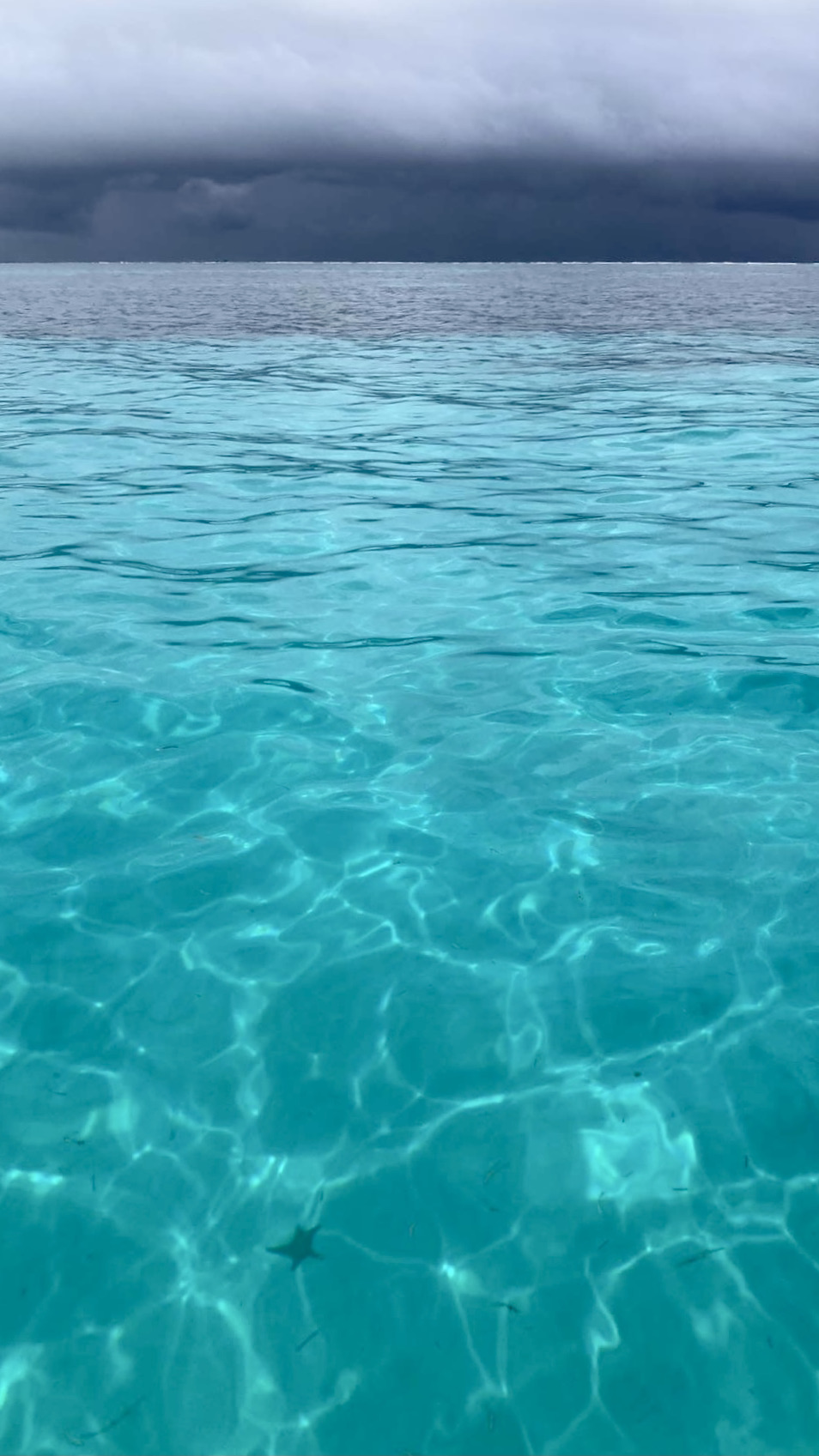
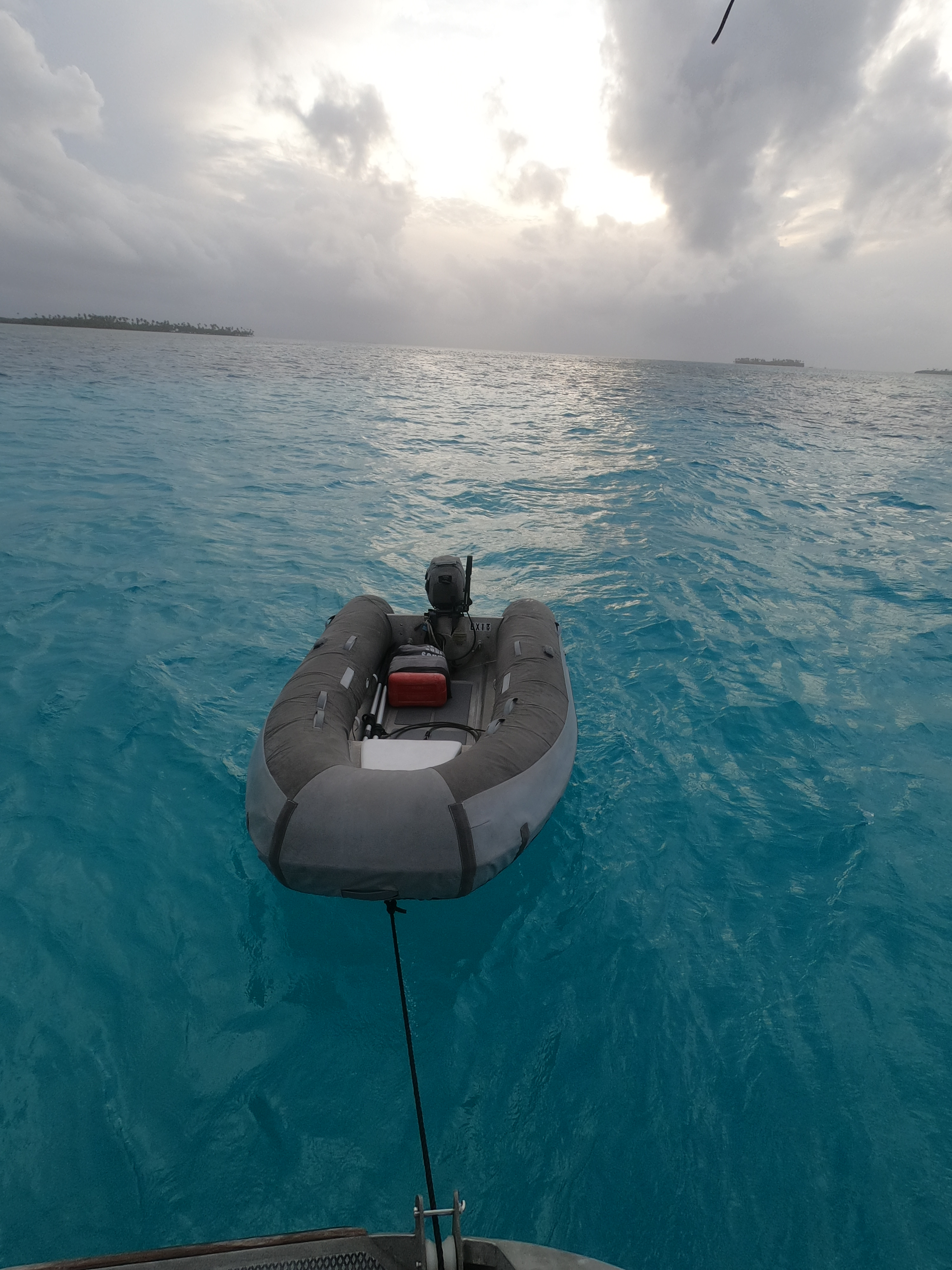


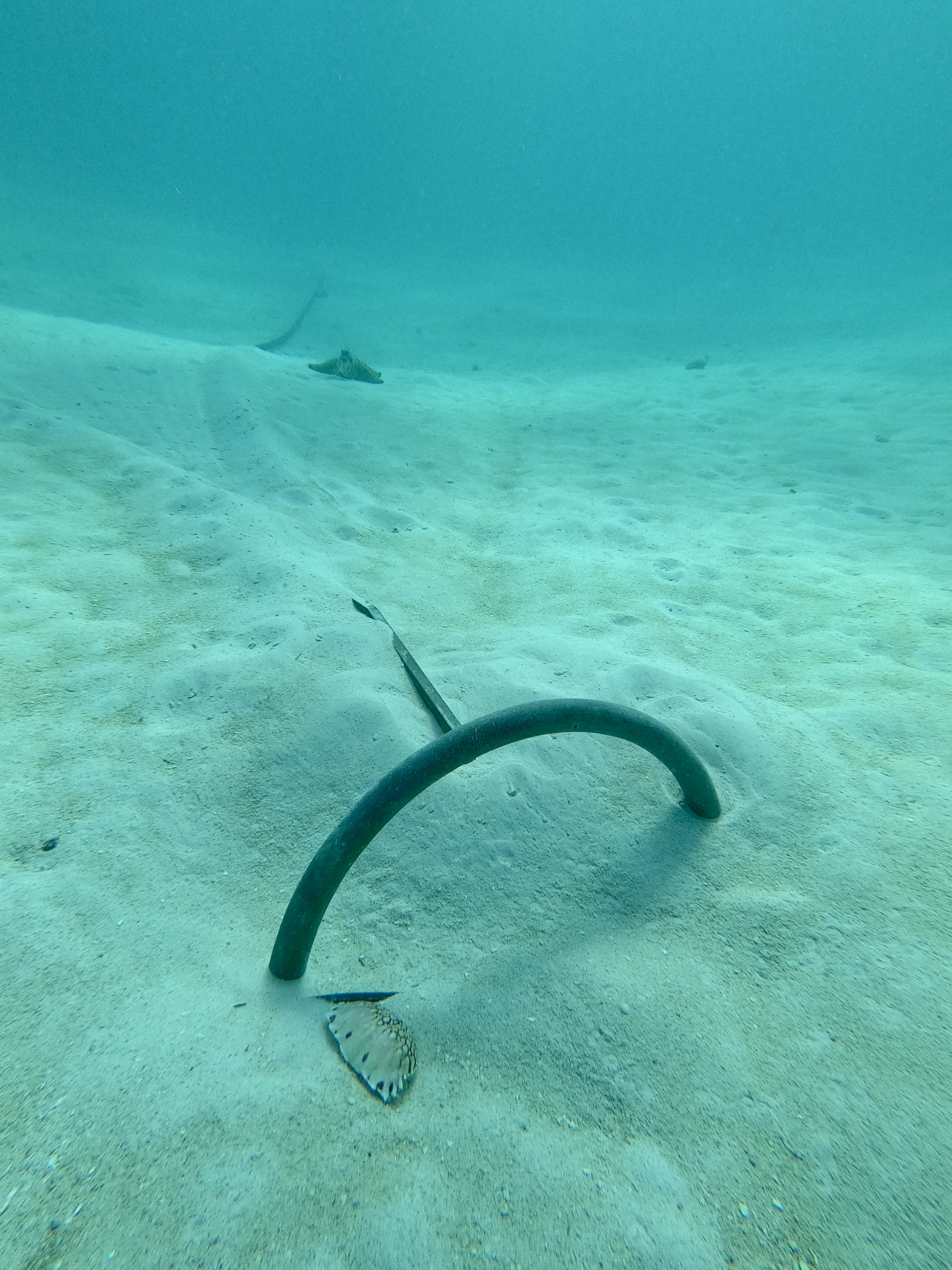


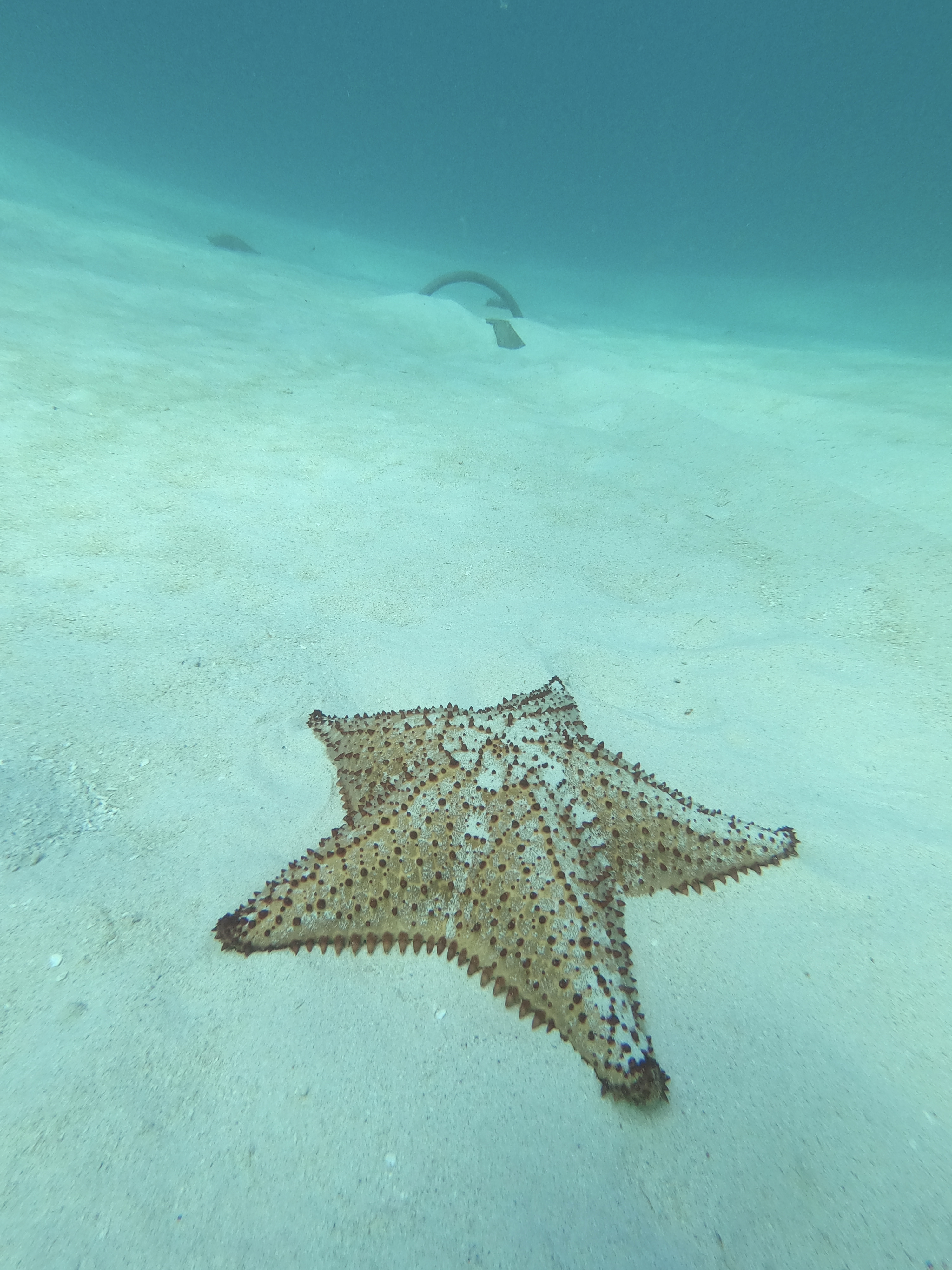

SPACE X-IT
Trapped somewhere between the concepts of having an exceptionally hard time saying no to a sure bet fun time and the odd decision that, at the end of our Shelter Bay haul out in June we somehow had not been hemorrhaging quite enough money, we came to the conclusion that it was time to start up a space program aboard Exit… ok, more of a sky program. Currently the SPACE X-IT fleet consists of a single Mavik 2 drone.
It had been at Cayos Cocos Banderos that we first got to really try out the drone.
There is so much to keep track of, initially it’s all about sorting out the basic controls.
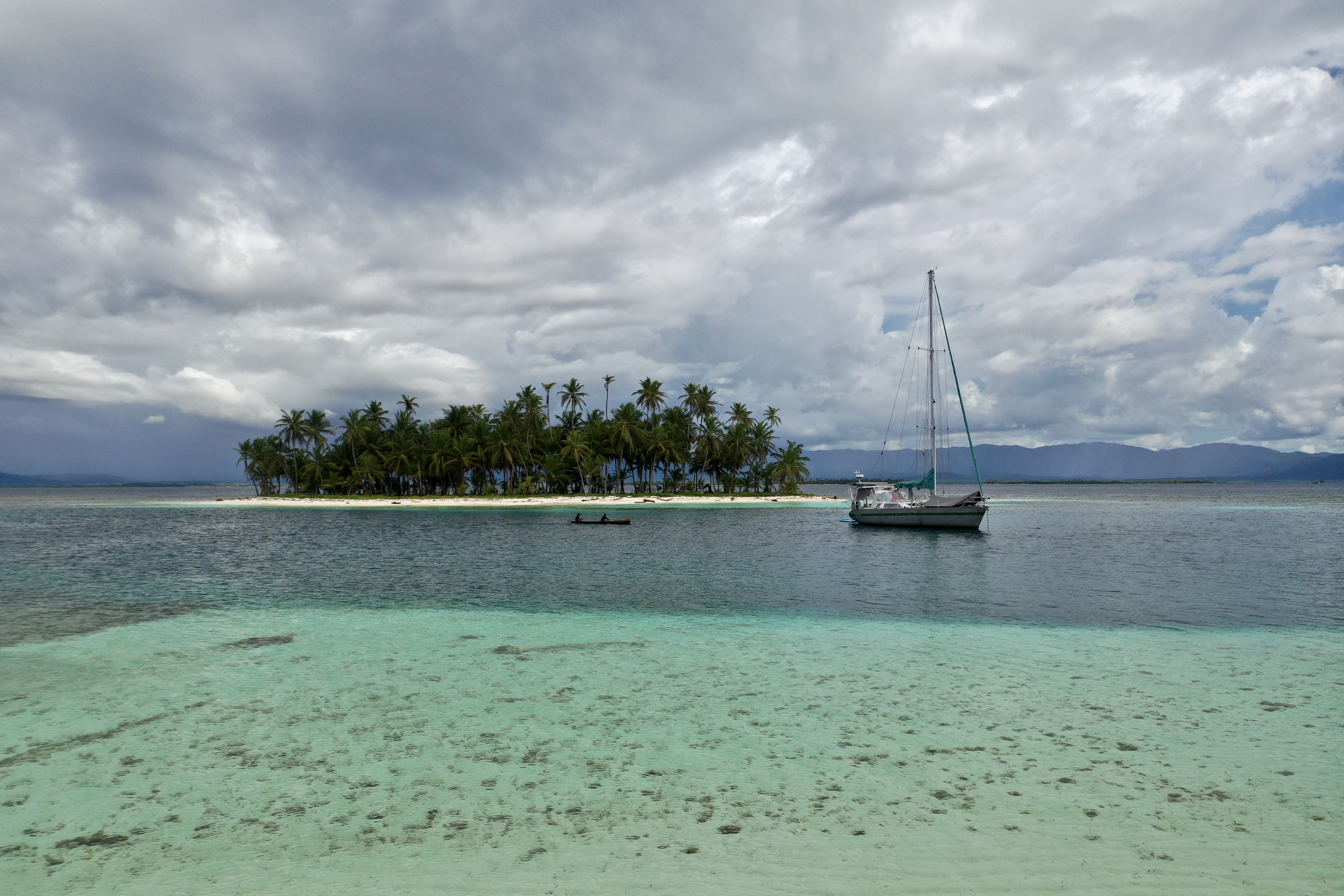
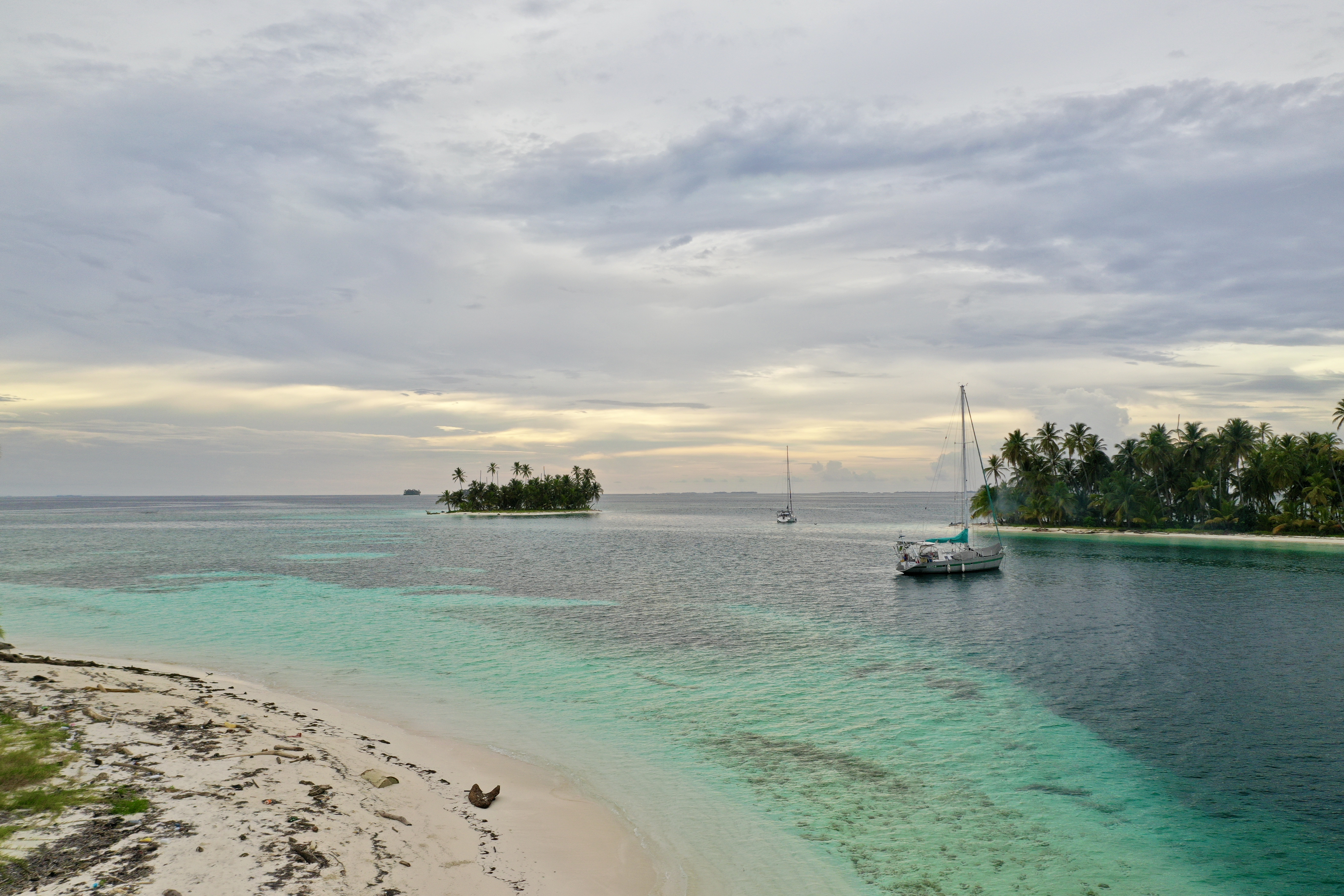

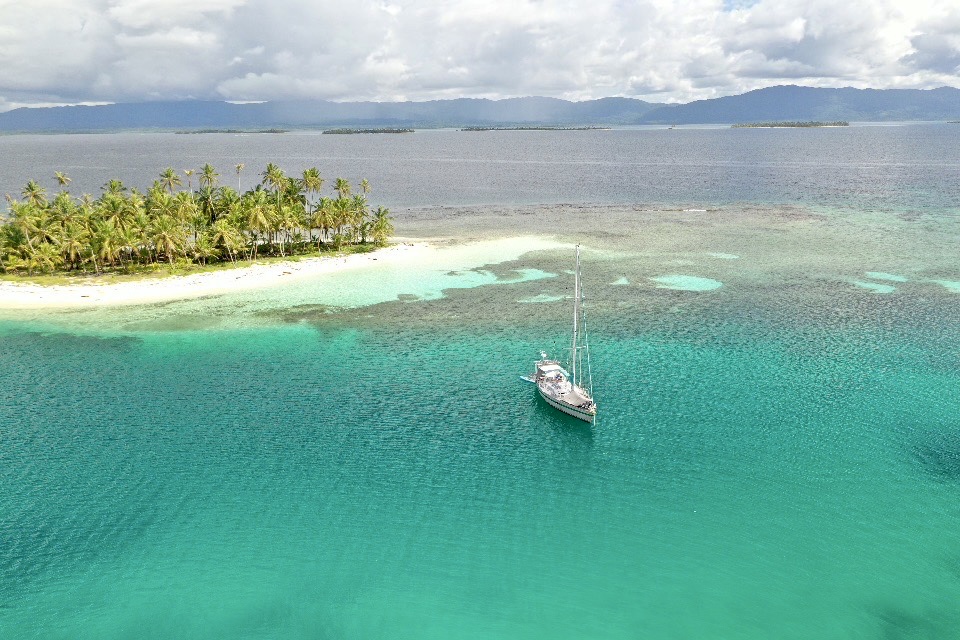
Esnasdup, or “Baby Shark Bay” to us, provided the second opportunity for launching the drone. Kris has proven to be the much quicker learner when it comes to piloting the drone… surprise, huh? As the controls become more familiar, stretching out to focus on images becomes more feasible.




However, it was launching and landing the drone from the deck of Exit while we swung at anchor in Los Bajos Lagoon that instantly raised the bar for excitement… as well as risk, I suppose. Good thing we are able to equip the drone with foam tubes that act as landing gear in the case of an accidental water landing… yikes!

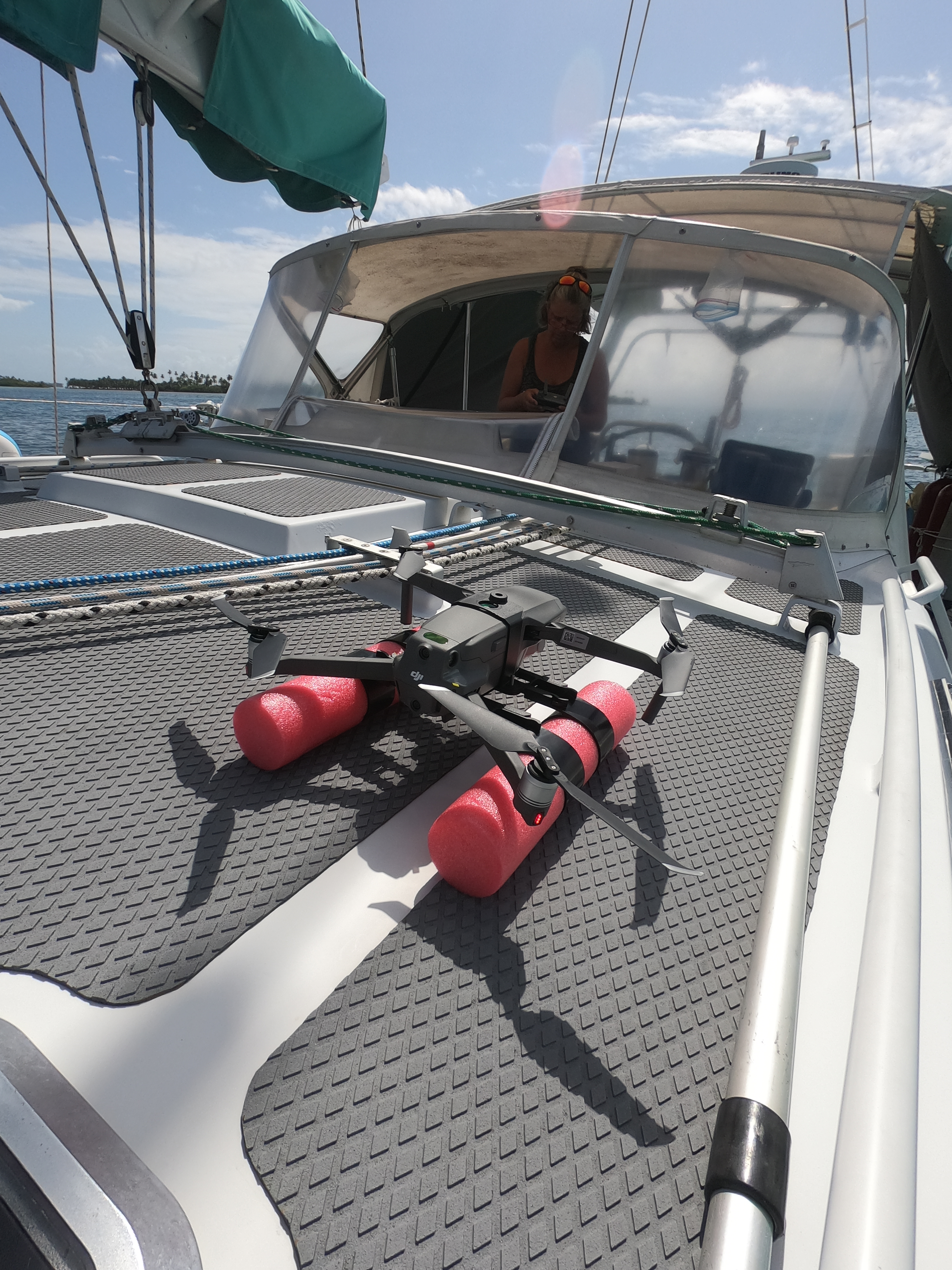
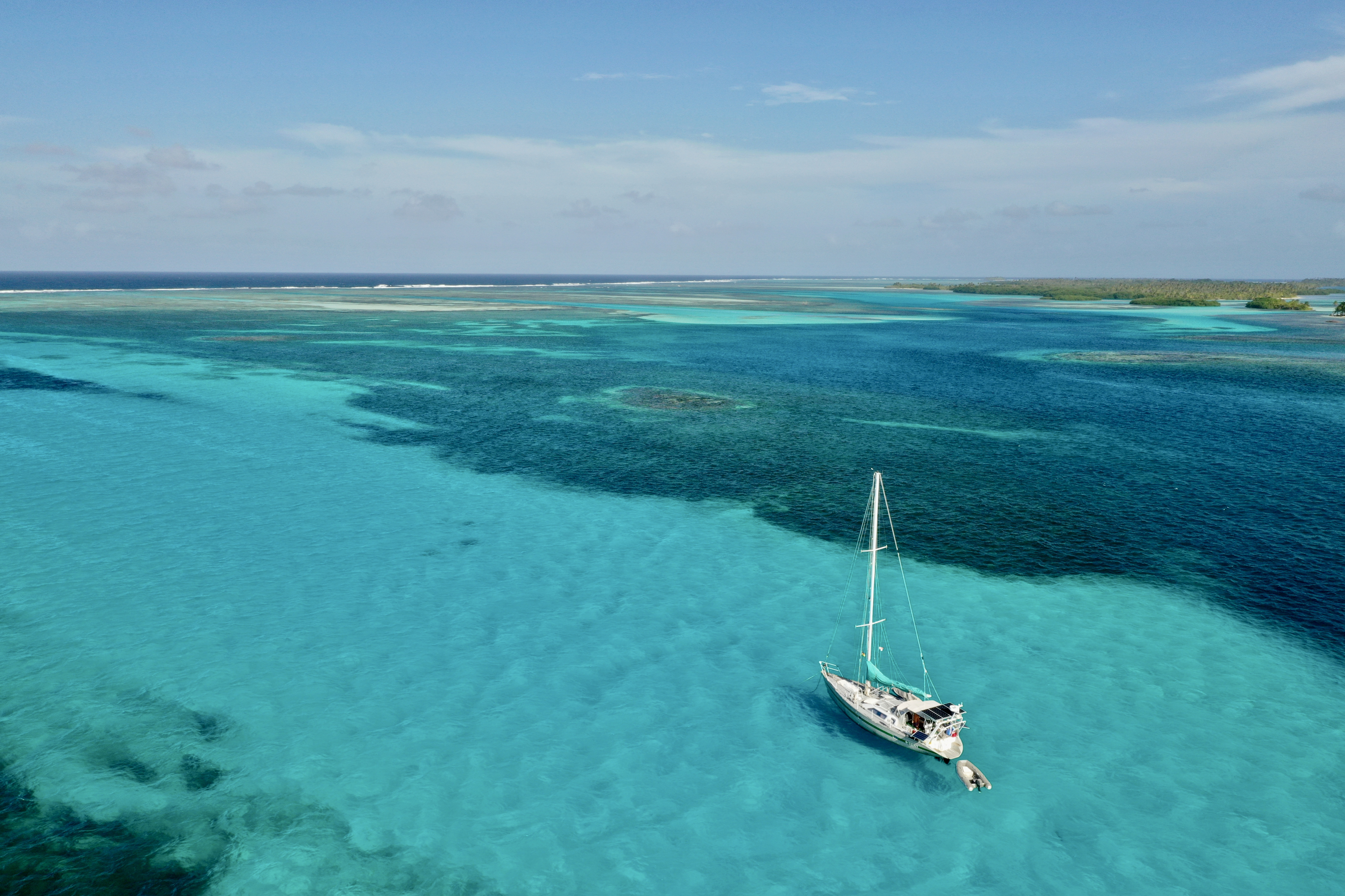
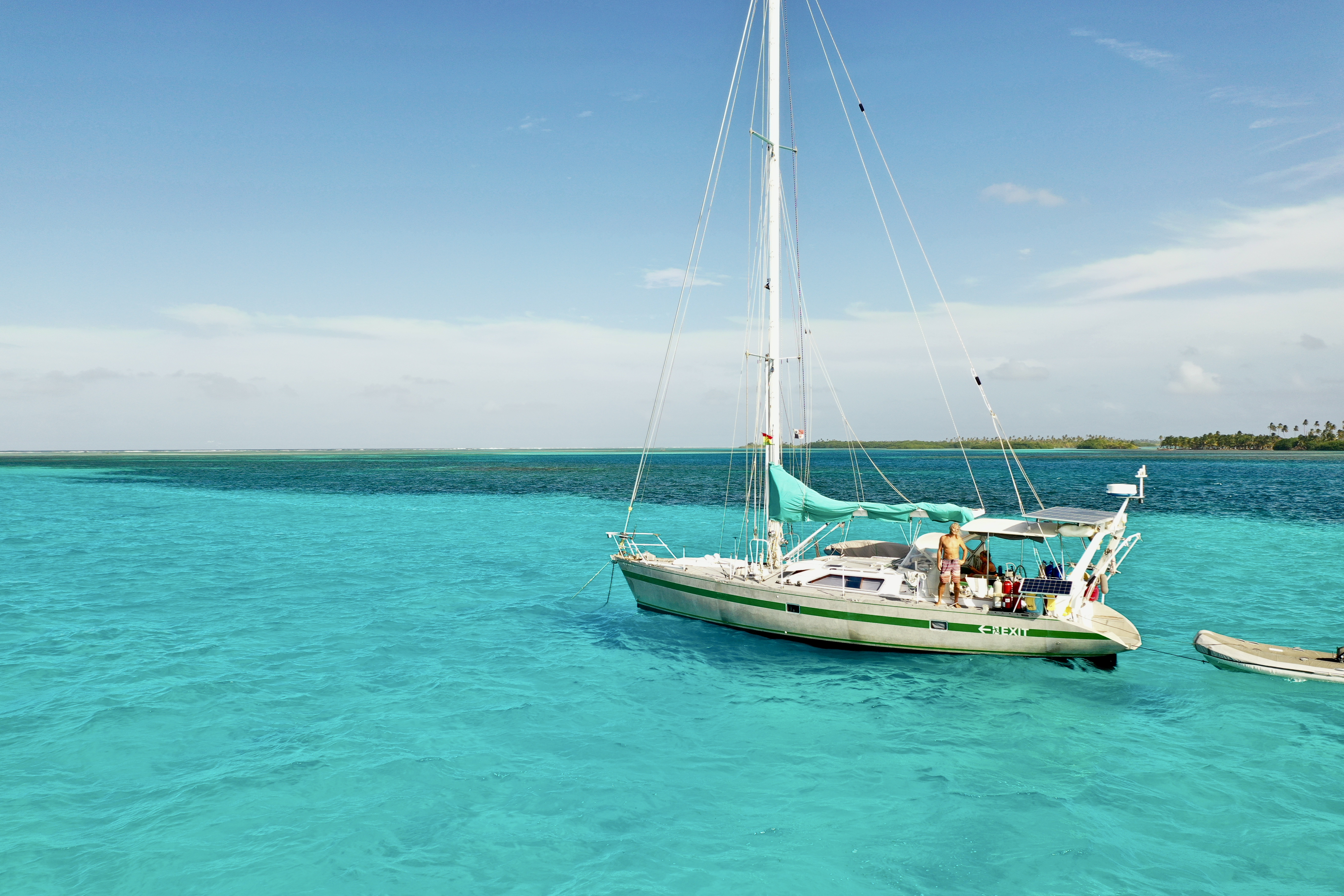
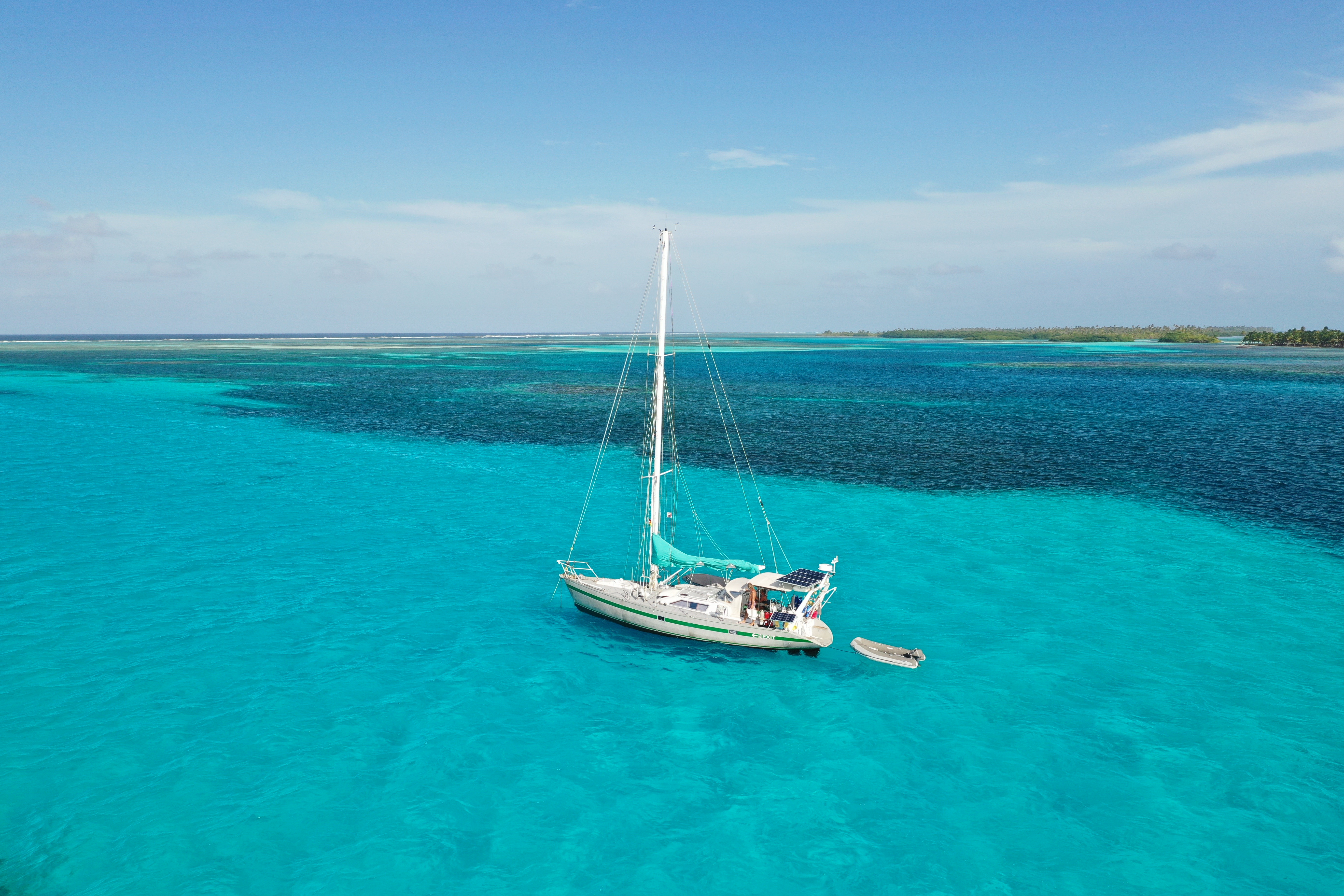
We learned quickly that safely landing the drone on the deck of Exit provided numerous extra challenges. These included the boat’s rigging, extending up sixty two feet above the waterline, that the drone’s proximity sensors did not particularly like; as well as the fact that Exit, actually moving in the water while swinging at anchor, provided a rather small and unstable landing platform.
Erratic alarms and alerts also seemed to indicate that the drone’s GPS systems were particularly unhappy that the ‘Return Home’ coordinates continually changed even while the drone sat at rest on the swinging boat. It occurred to us that we didn’t want the drone attempting to execute an automated landing to a ‘home coordinate’ that Exit’s deck no longer occupied.
The solution required an unanticipated bit of improvised team technique to complete a successful landing — namely, having Kris steady the drone in a hover position directly in front of me while I stood on deck, allowing me to grab it hopefully without falling into the water. Lucky for us, we mastered the technique on the first try.
In retrospect, a high velocity wind alarm that had sounded earlier on the controller while the drone was two hundred feet in the air turned out to be much more stress inducing than the air grab landing maneuver.
Ultimately, we discovered what unique perspectives photo and video from two or three hundred feet in the air can provide; like another visual dimension. It certainly helps one to truly appreciate how spectacular the area of Guna Yala really is.
Los Bajos Lagoon went from stunning to otherworldly.
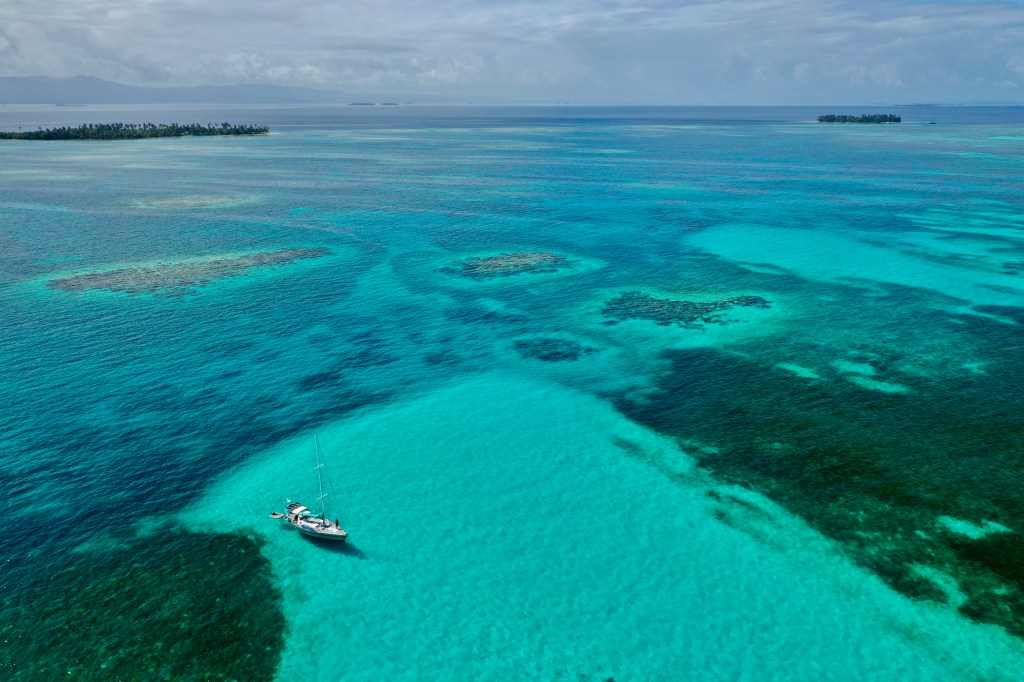



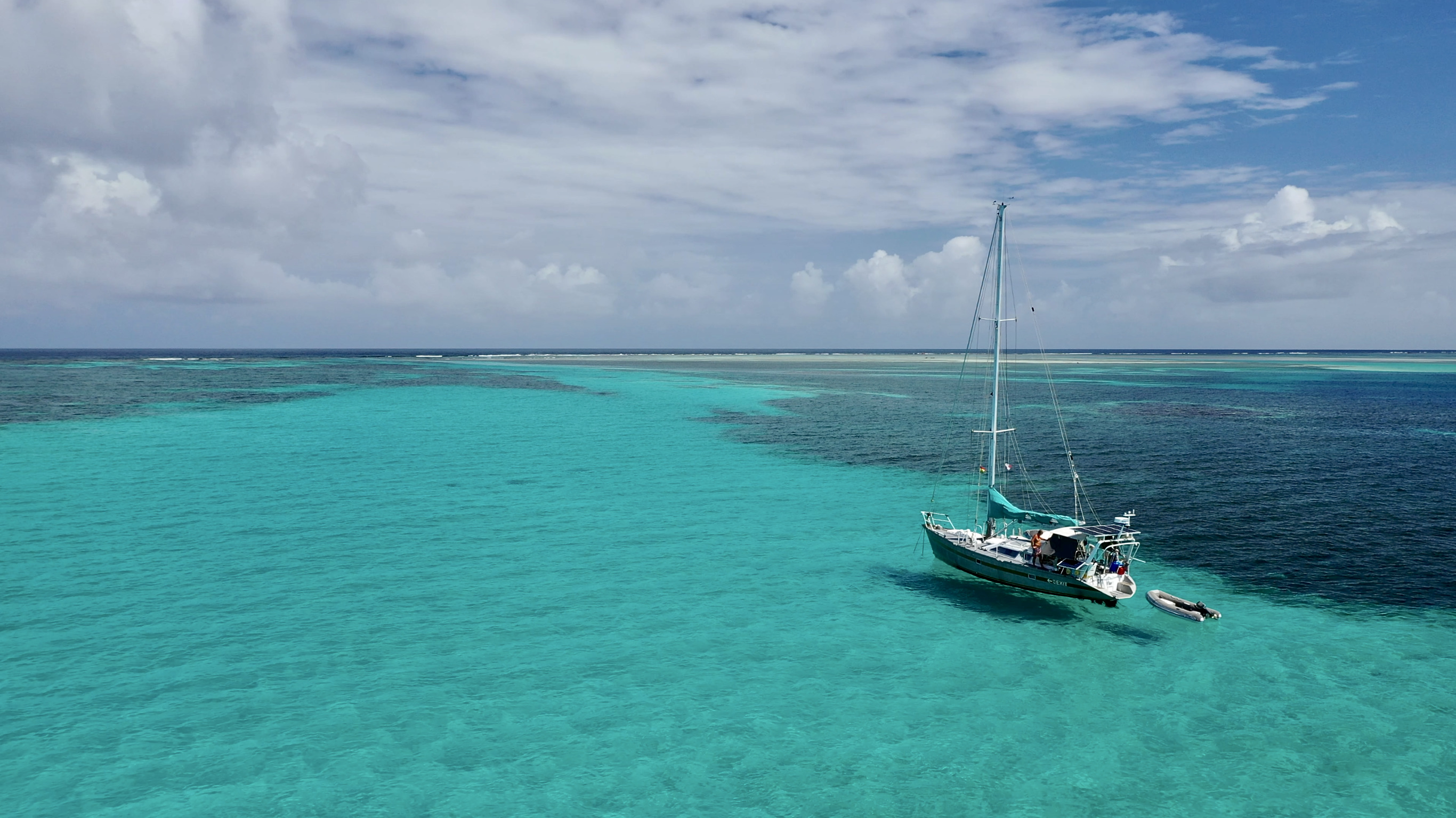
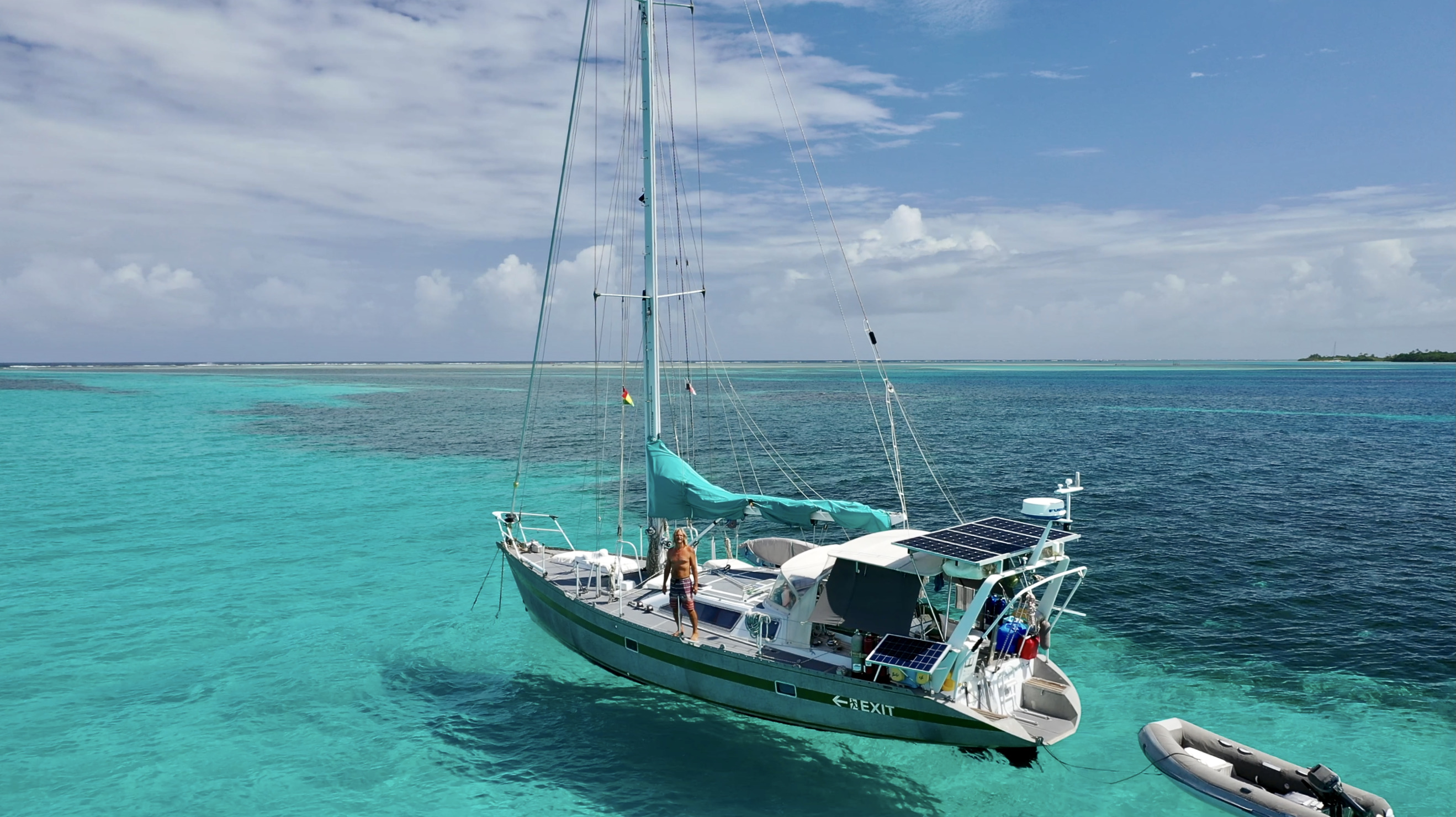

Having a blue Christmas is not necessarily a bad thing.



And while a holiday spent in the tropics may not prove to be very conducive for Christmas trees, it can be exactly the right place to enjoy Christmas tree worms…
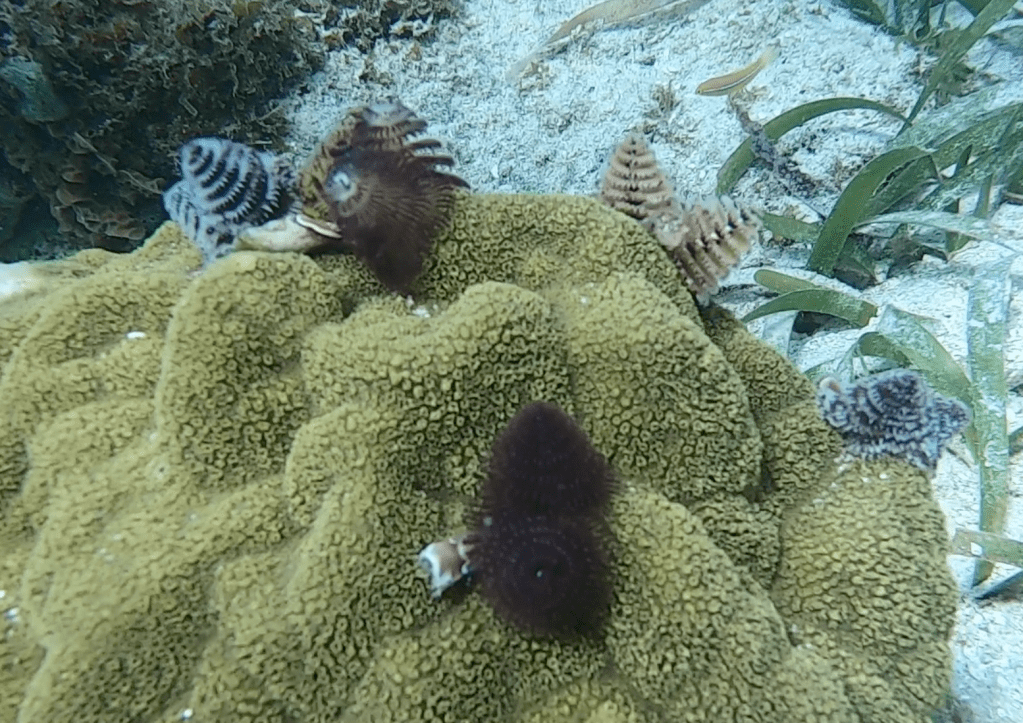
As often seems to be the case for us, the realization that it is past time to move on can be a feeling that sets in very slowly. Sometimes slowly enough that it’s almost impossible to recognize it is even there. But eventually we do.
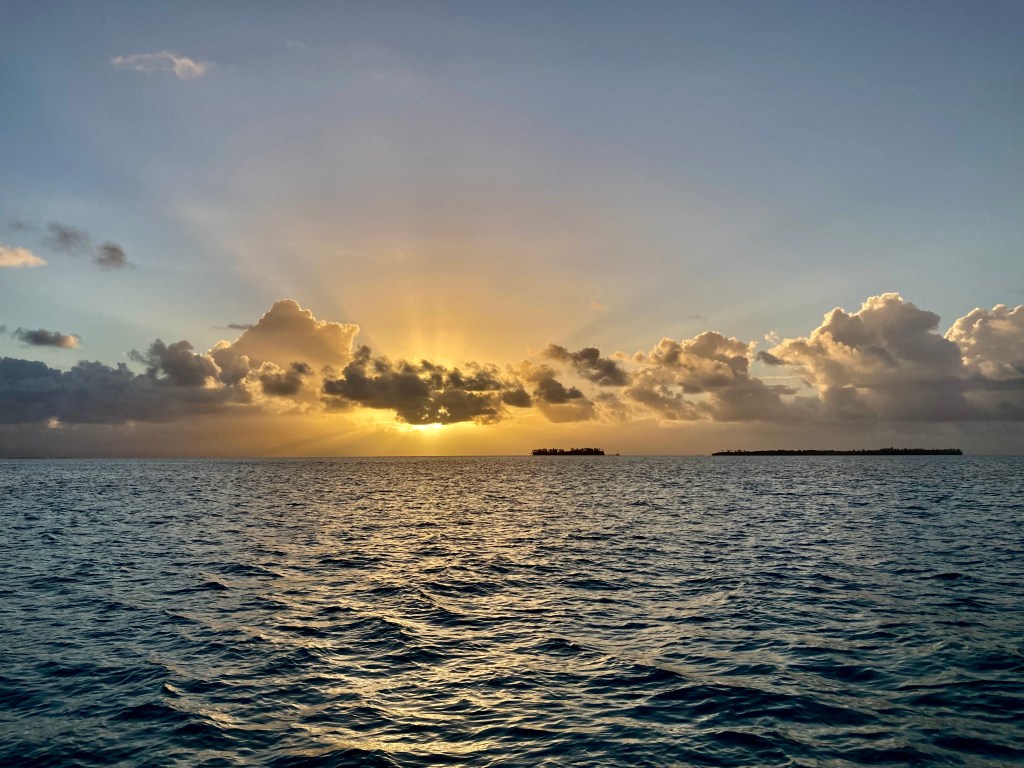
We lifted anchor at dawn, the morning after Christmas, making for Shelter Bay knowing that we had visited a truly magical place.

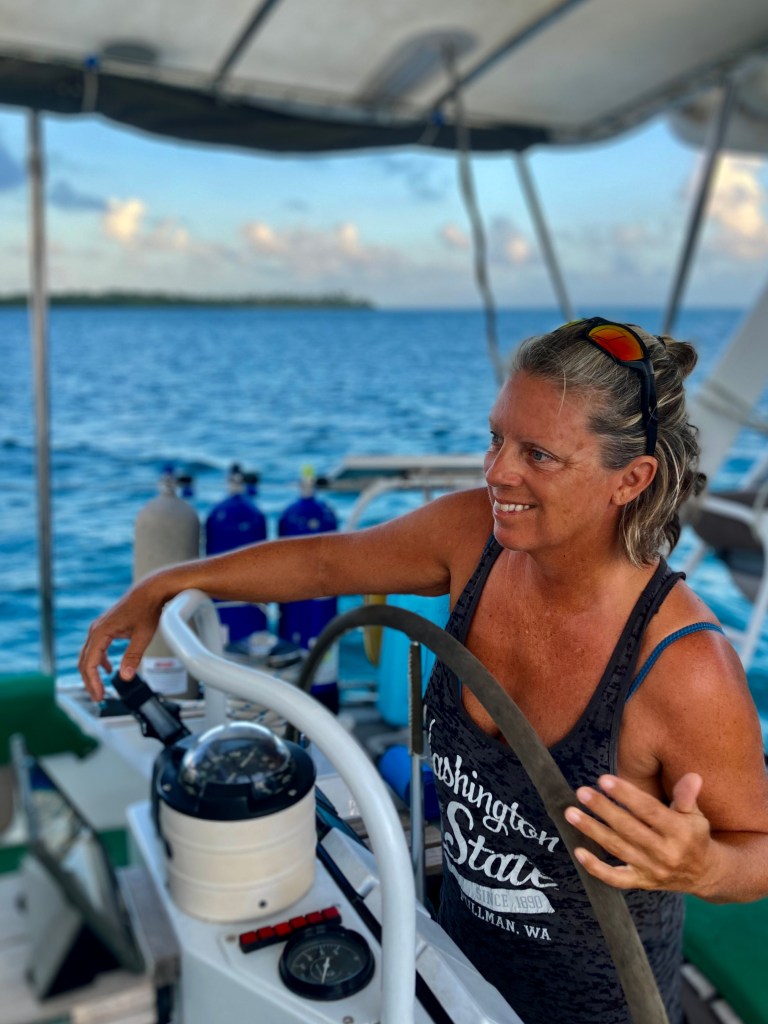
As we prepared to raise the sails, in the distance you could see a boat of local fishermen arguing with a squadron of pelicans over who had first rights of fish ownership.
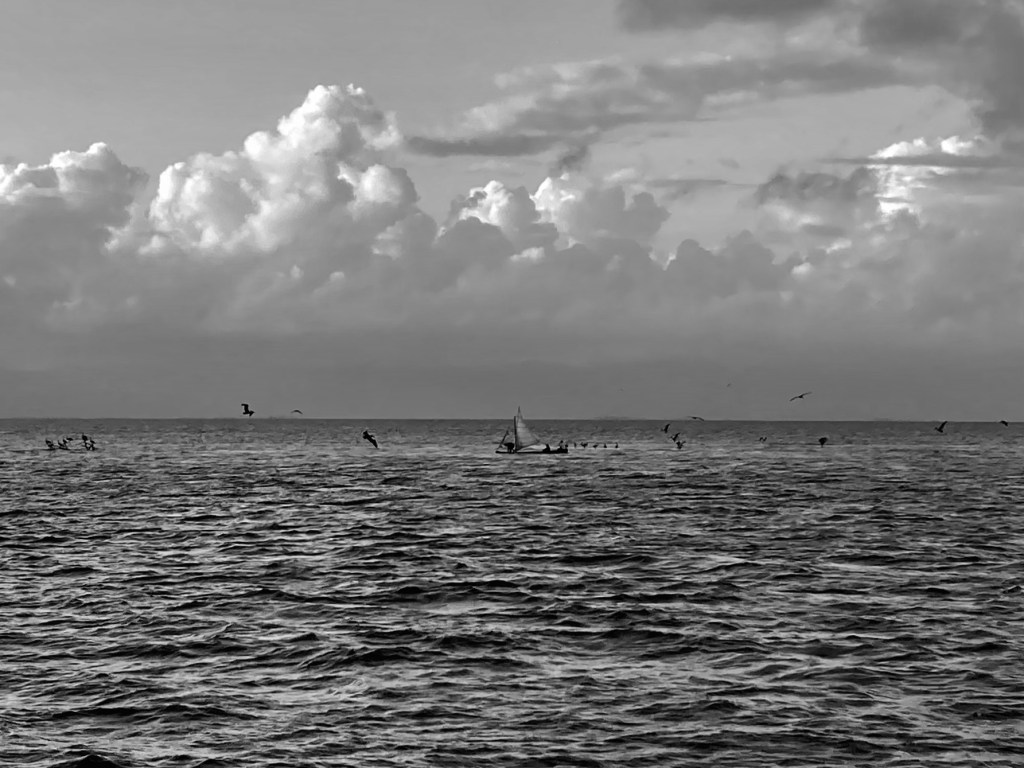
It would be easy to get stuck here for indefinite periods that never seem to reach an end. However, we aren’t prepared to stop moving… yet.
And being at the doorstep of the Panama Canal means we are literally one and a half days from passing through the doorstep to a different world… the Pacific Ocean.
We’ll just hang onto the flag. Who knows? We may be back…
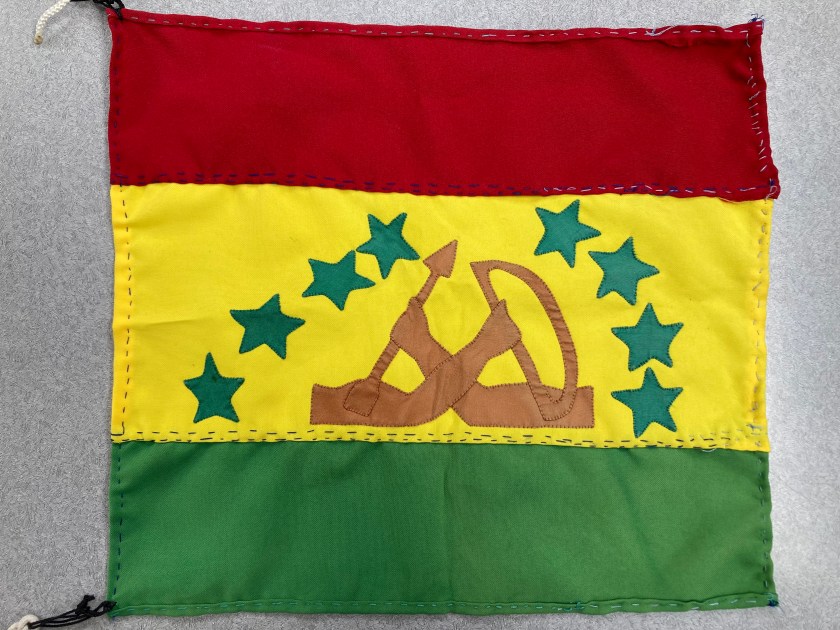
POST SCRIPT: Upon leaving San Blas we discovered we had stowaways. Exit scooting along at over seven knots in confused and messy following seas had created quite a lot of seawater water washing up on the transom. This, in turn, had created a tidal pool of sorts, in one of the corners. A dozen or so very small fish had either surfed up onto the transom or been washed up there. Now they were caught in a virtual washing machine – an unbelievably agile and synchronized group of hitchhikers swimming as one, in what appeared a very risky endeavor…


